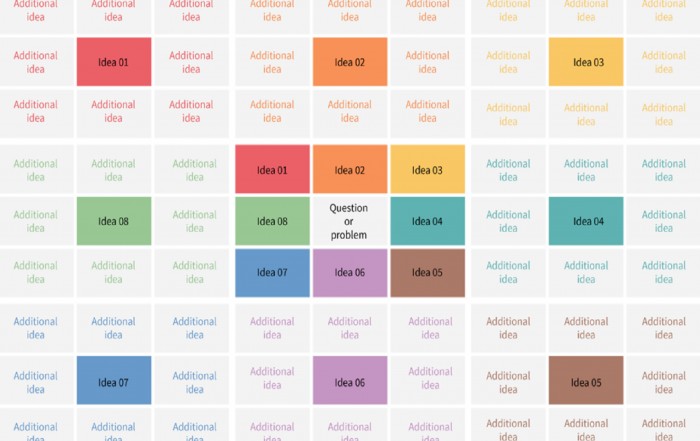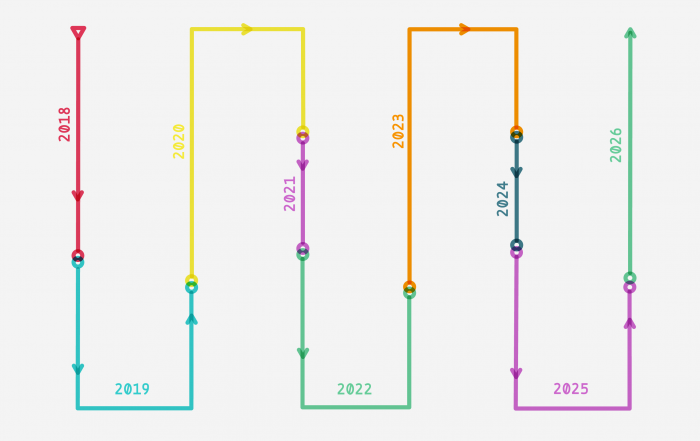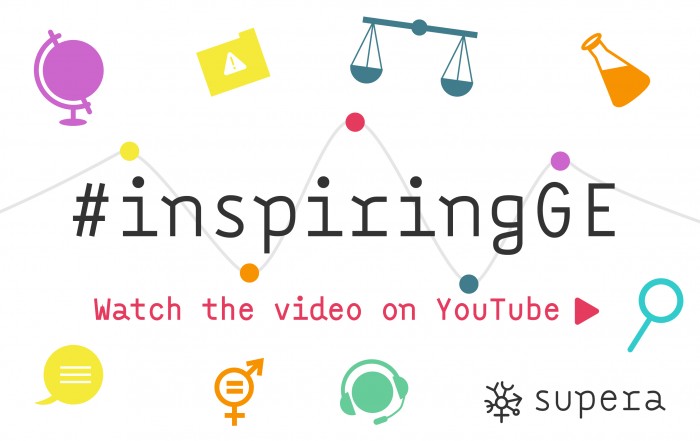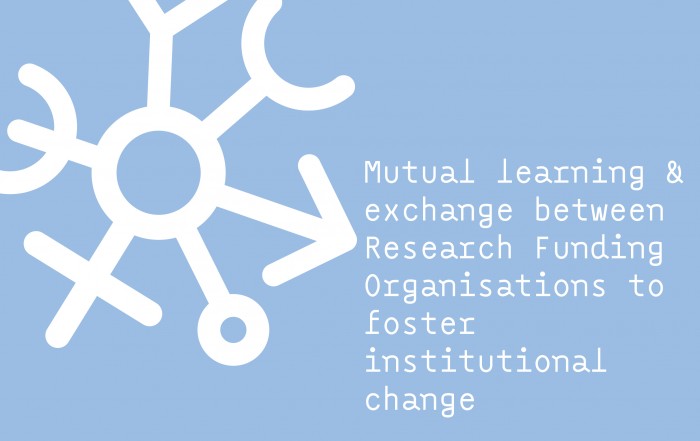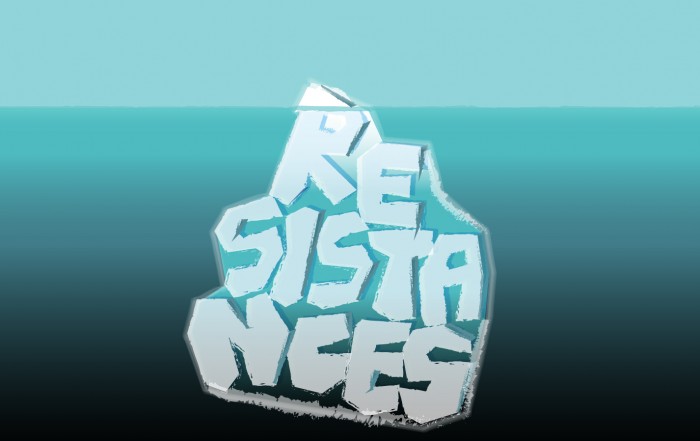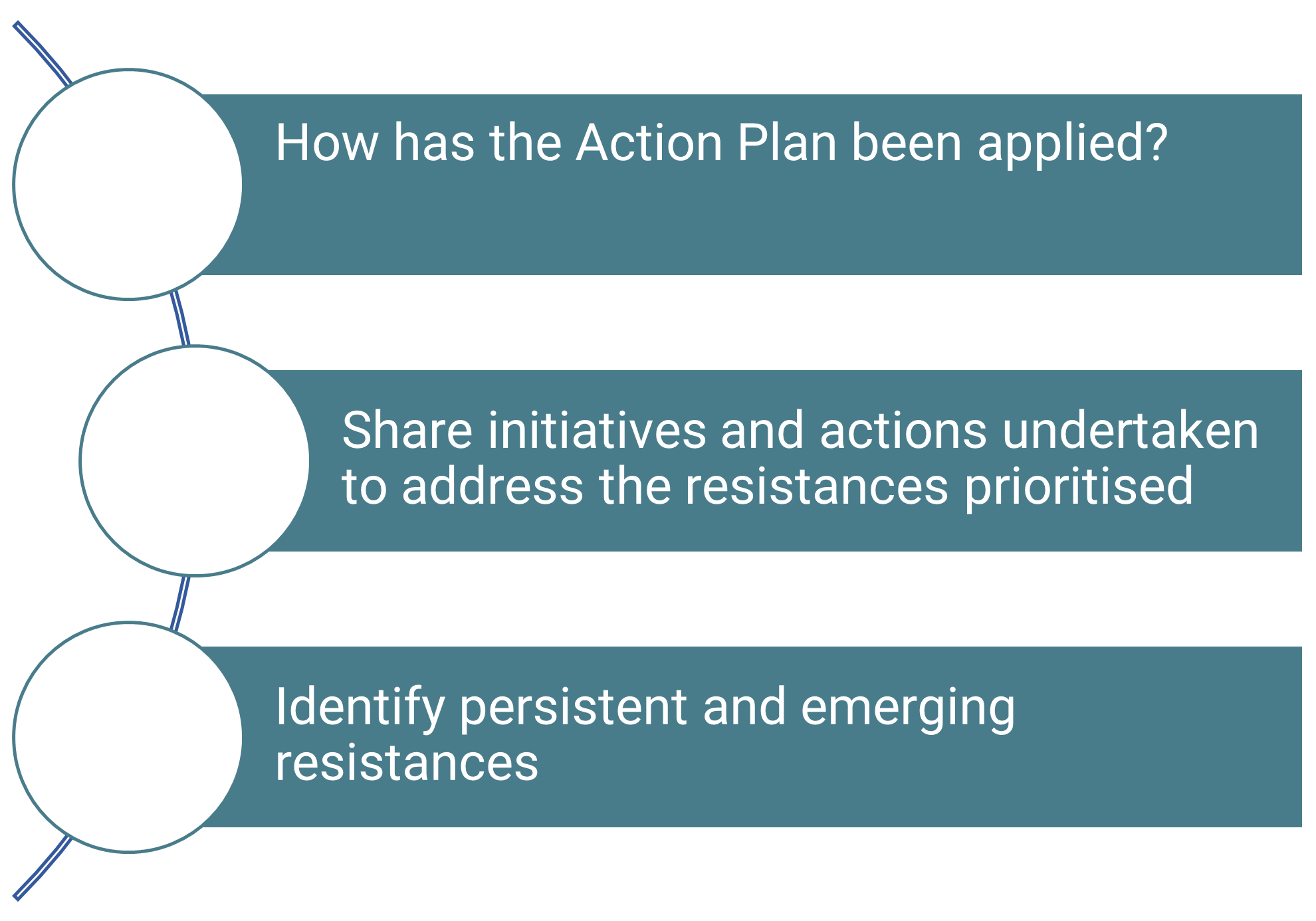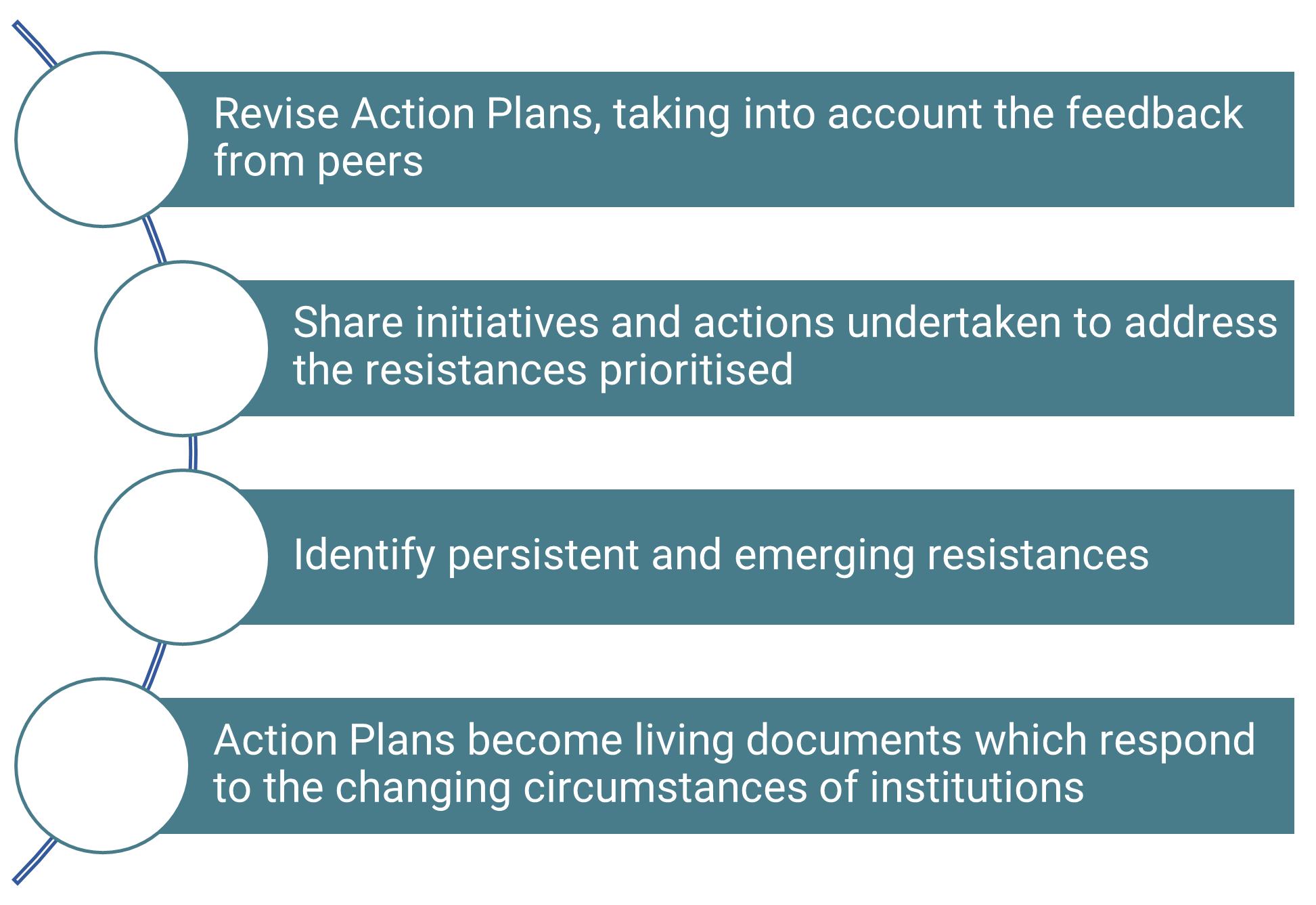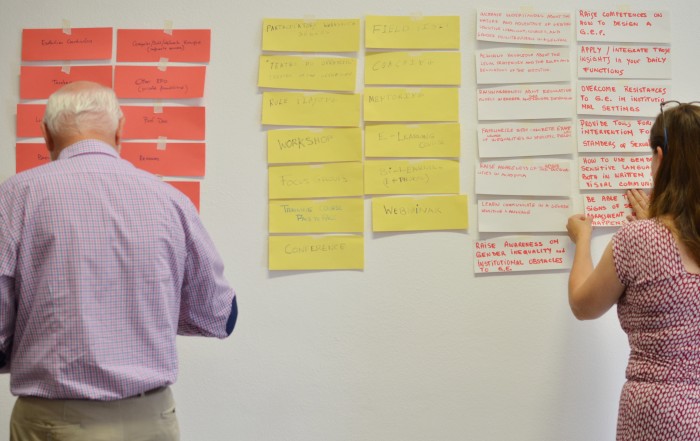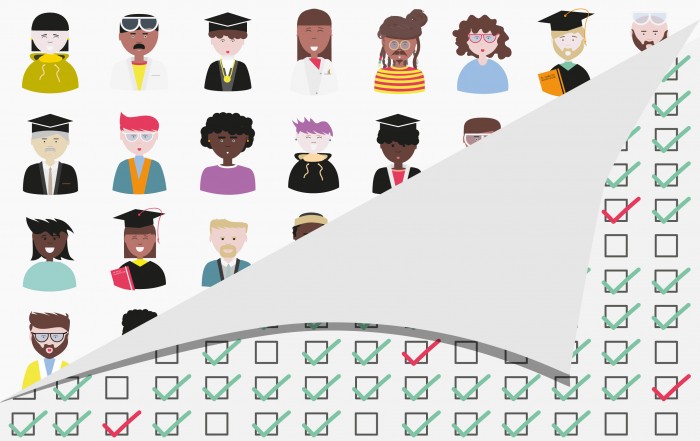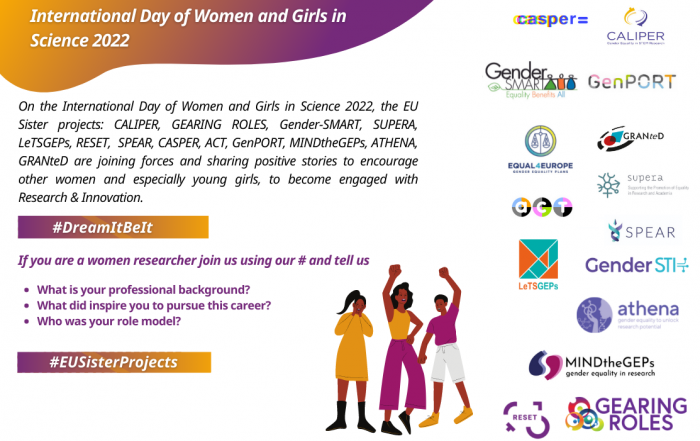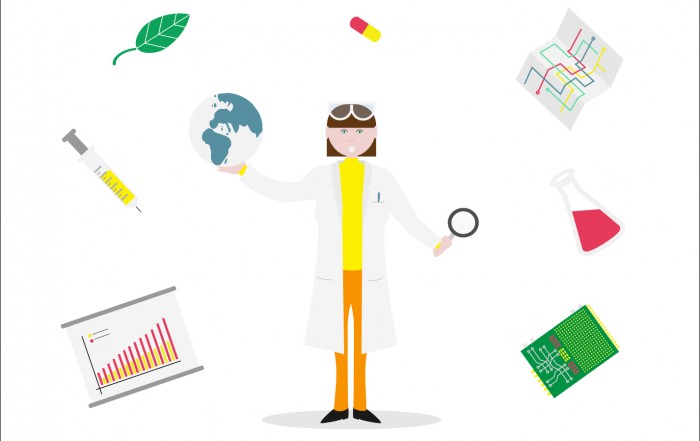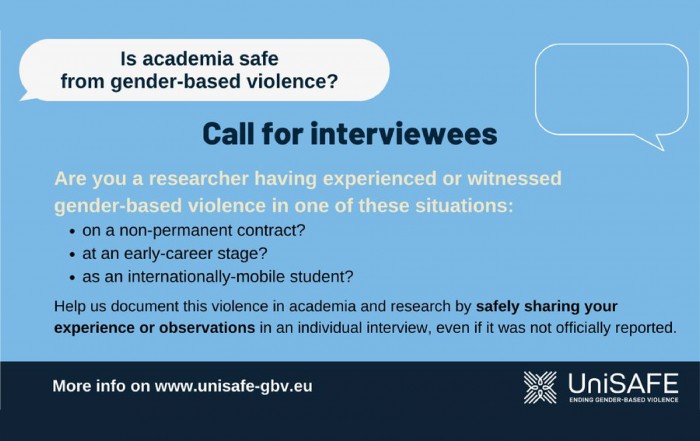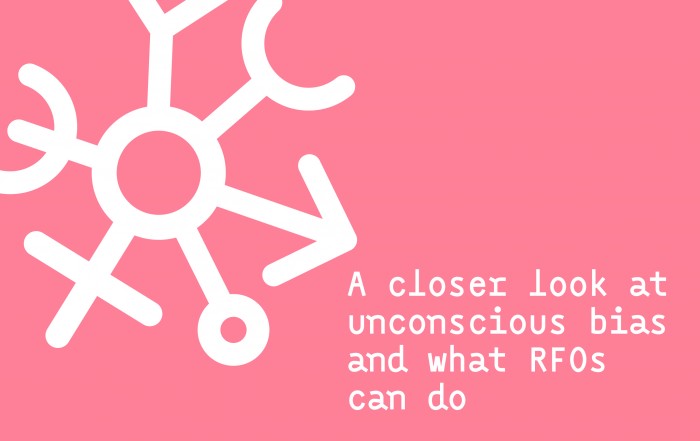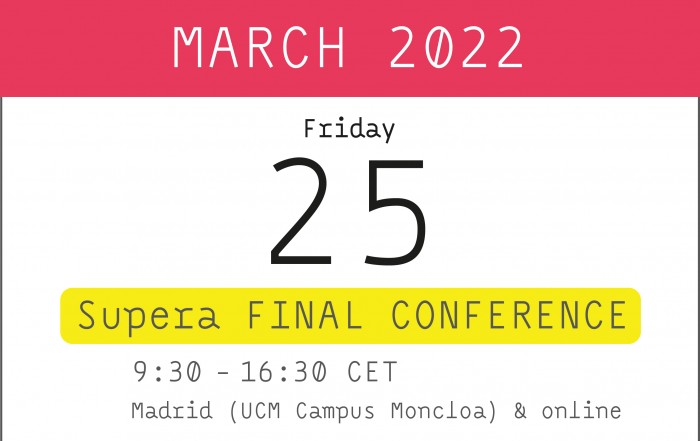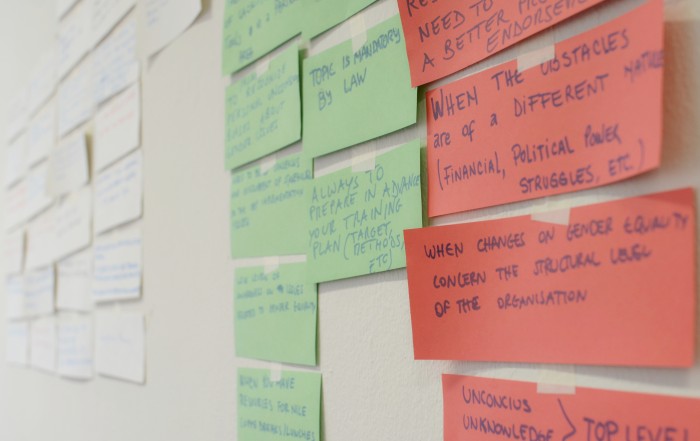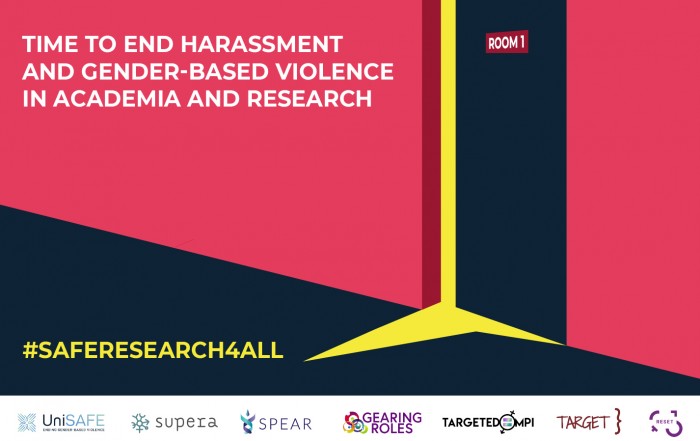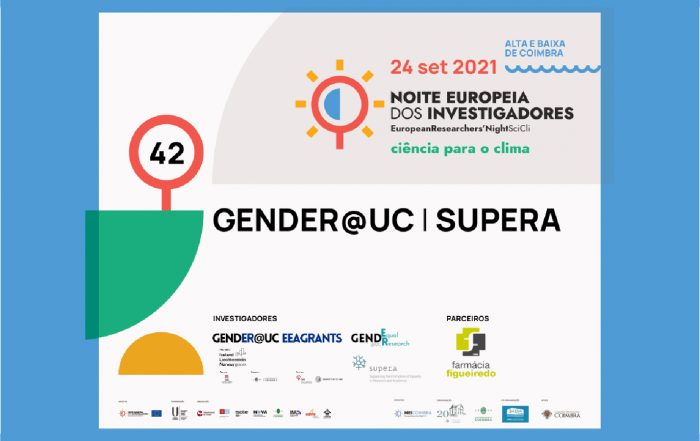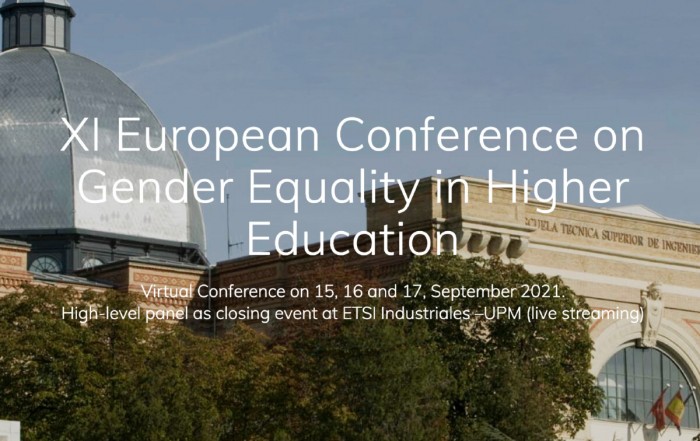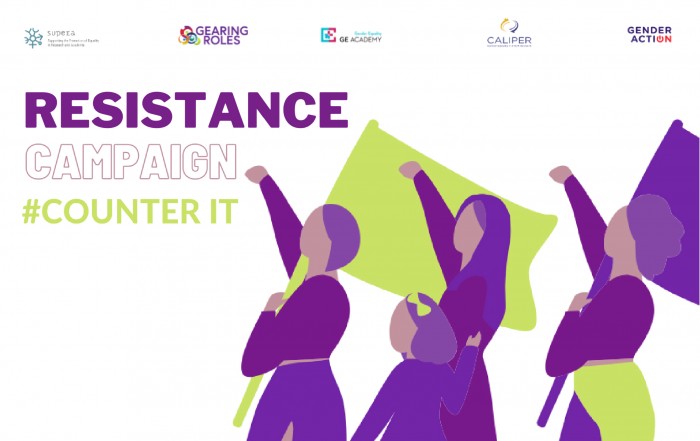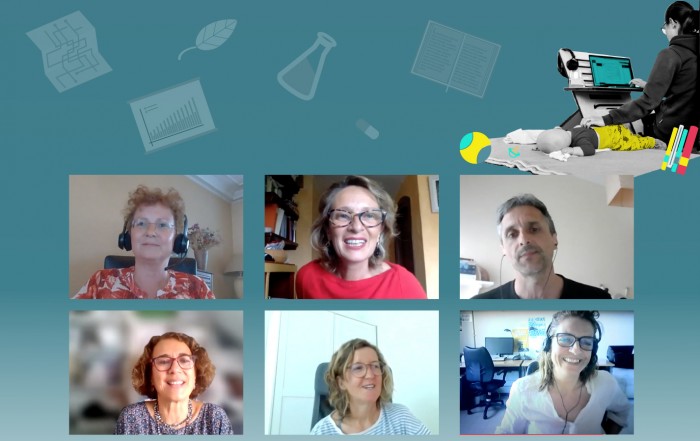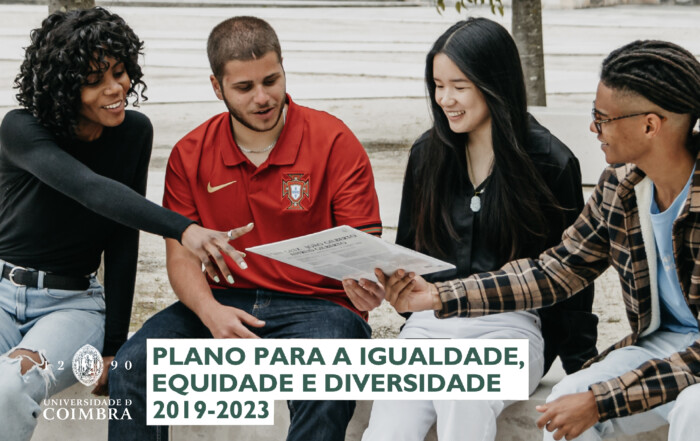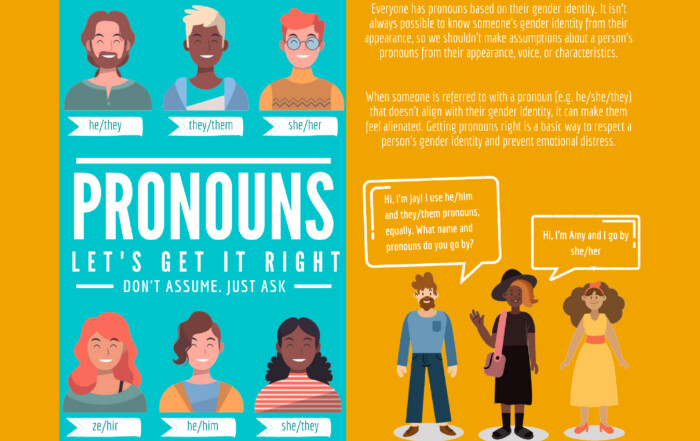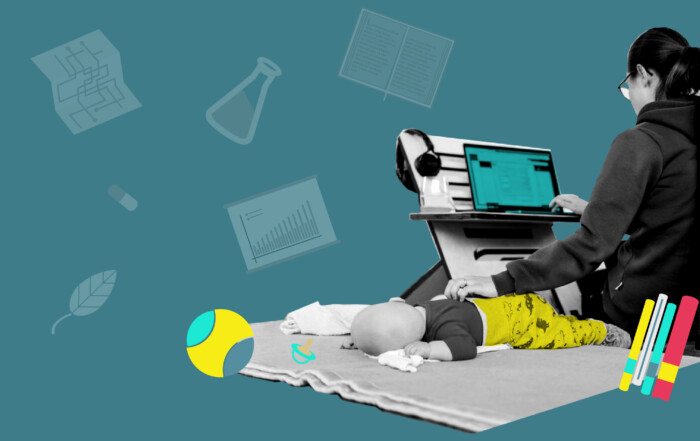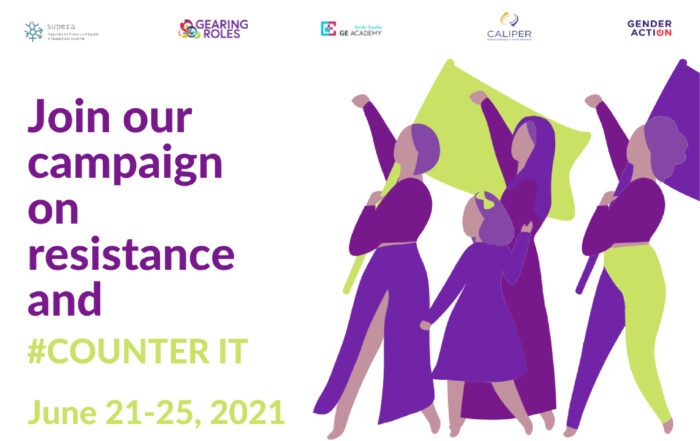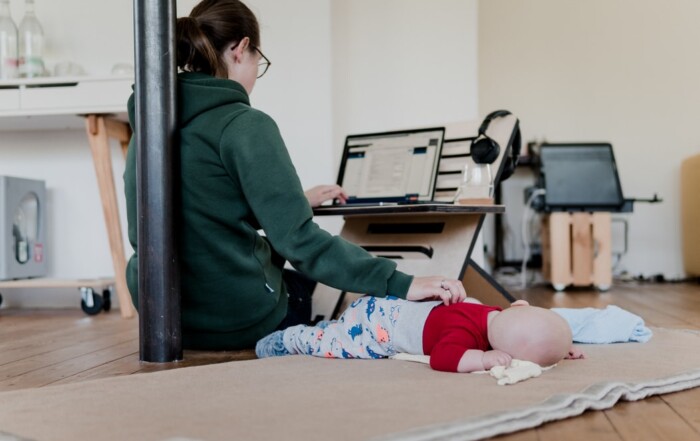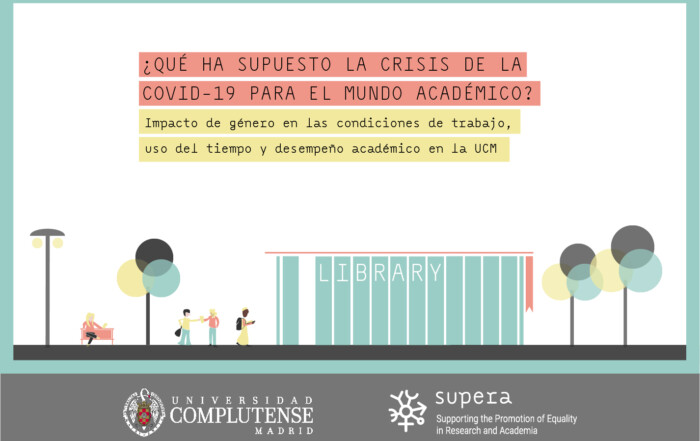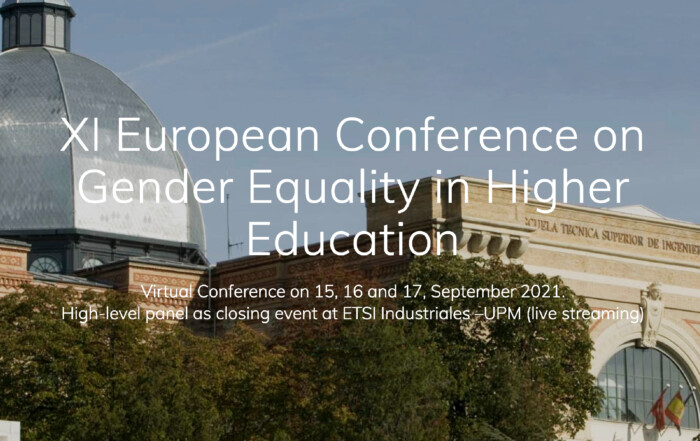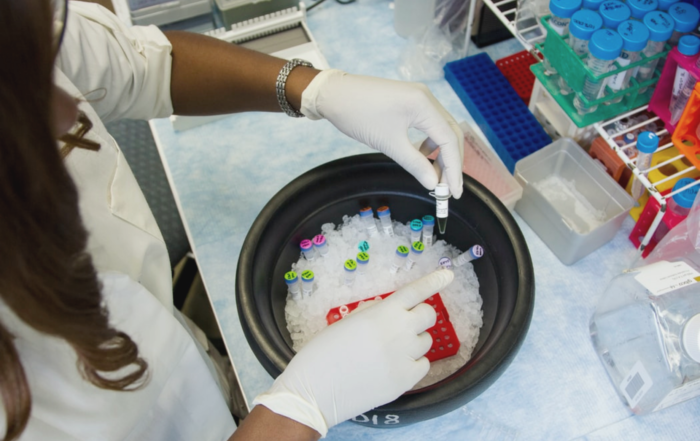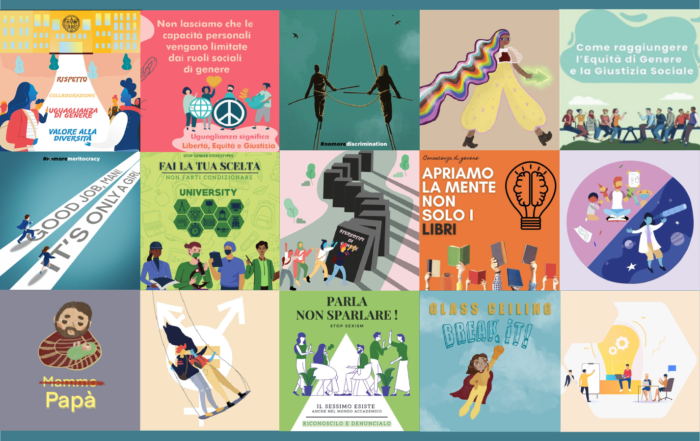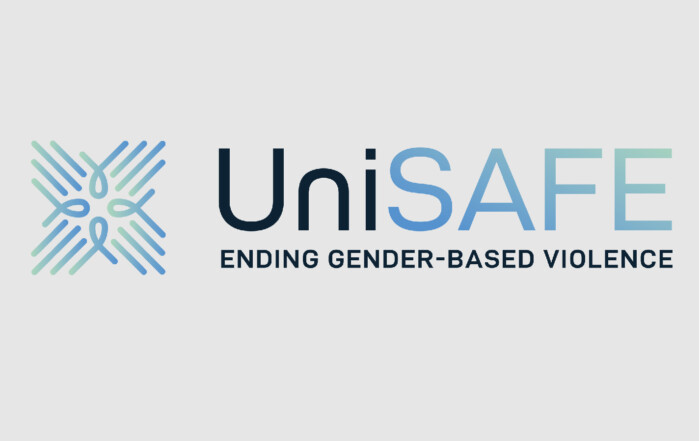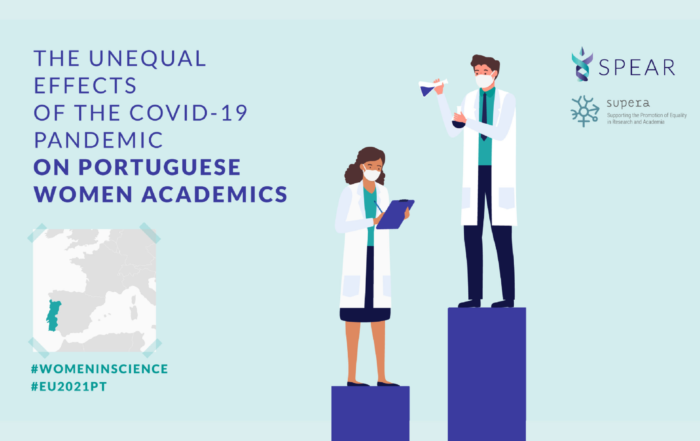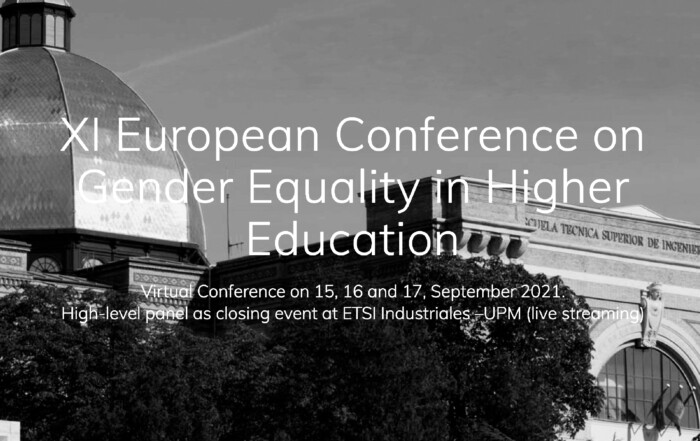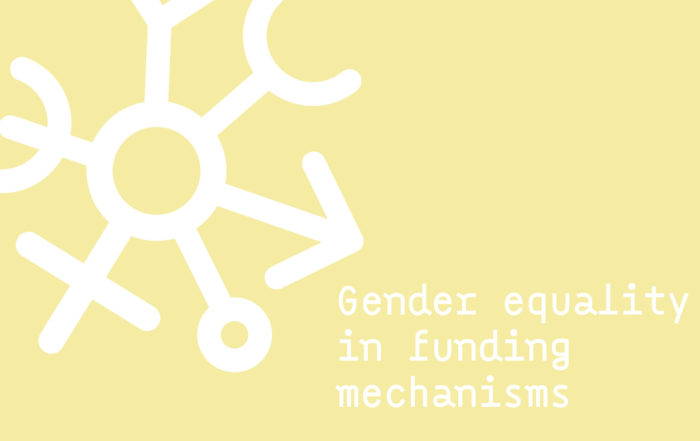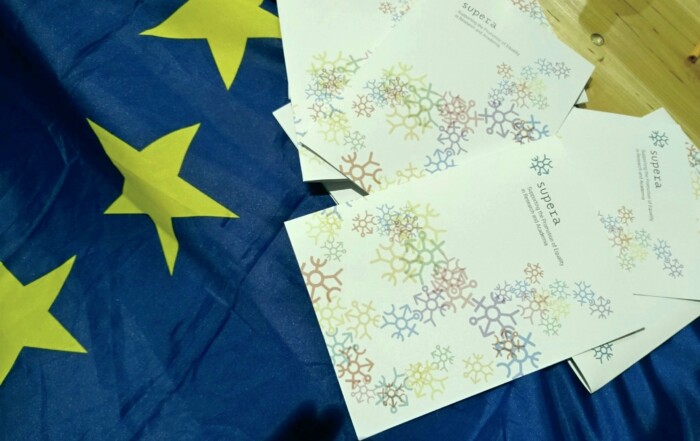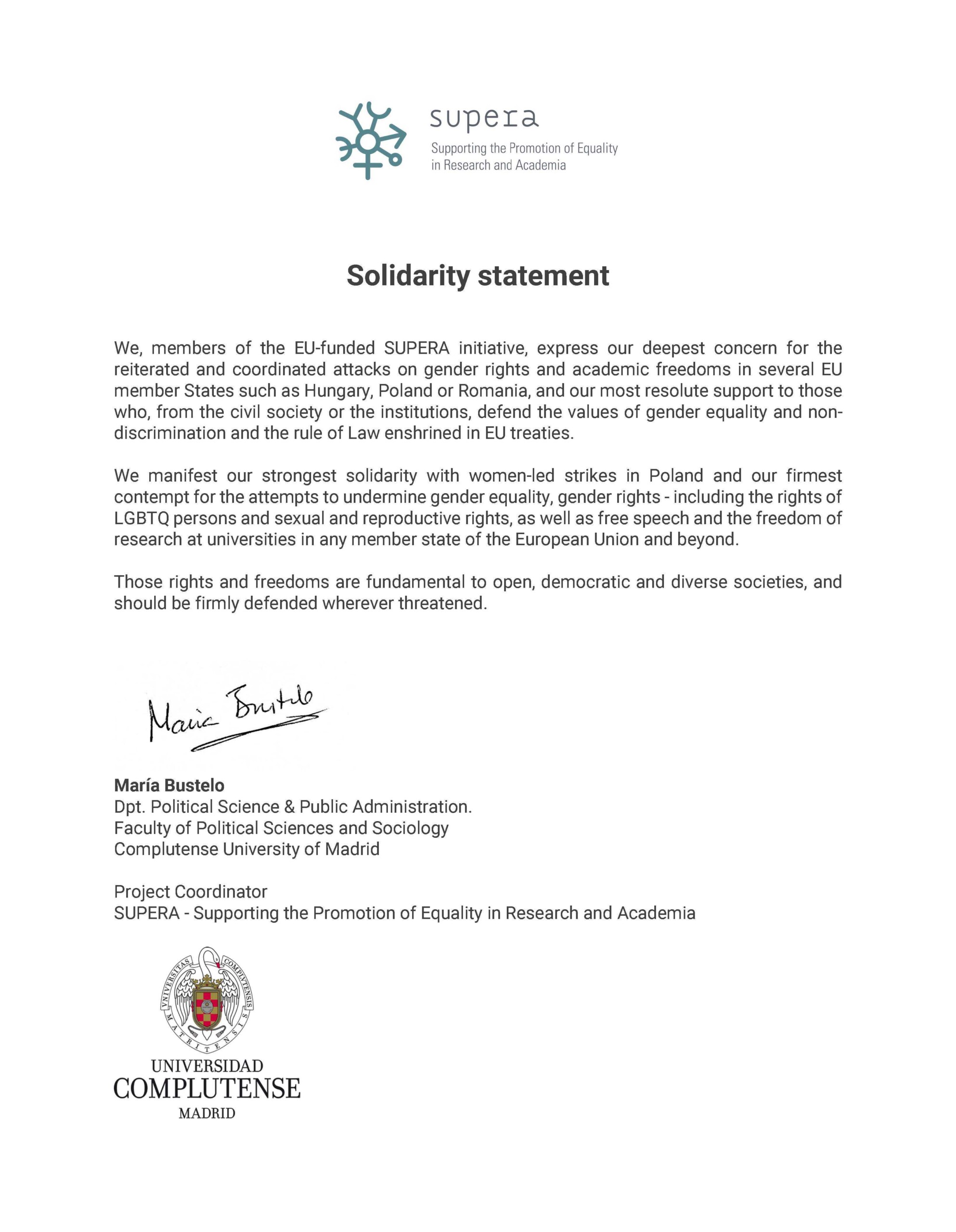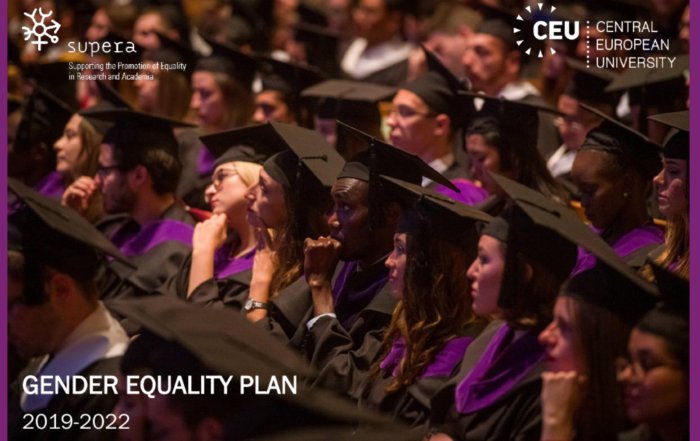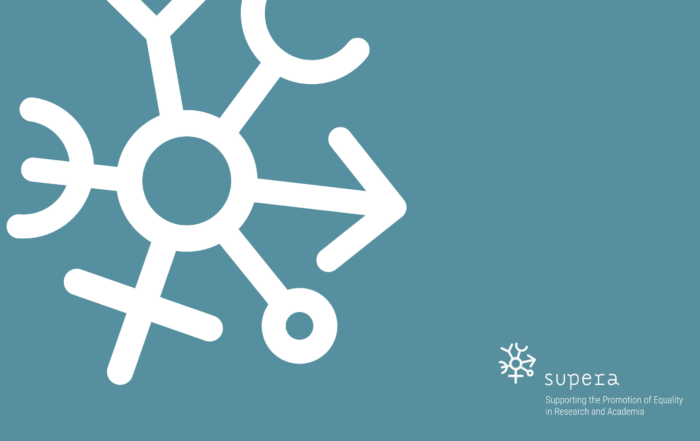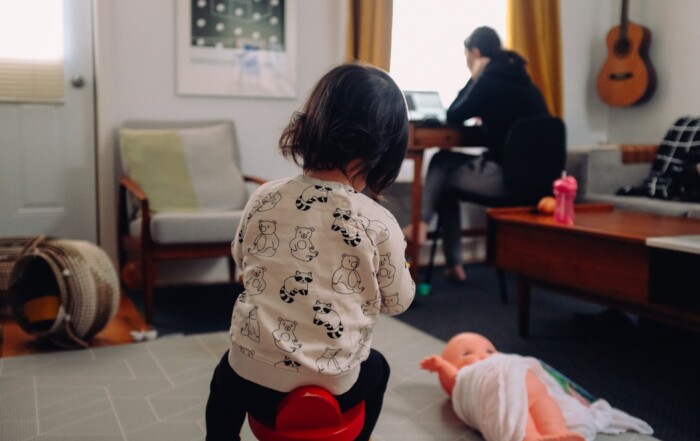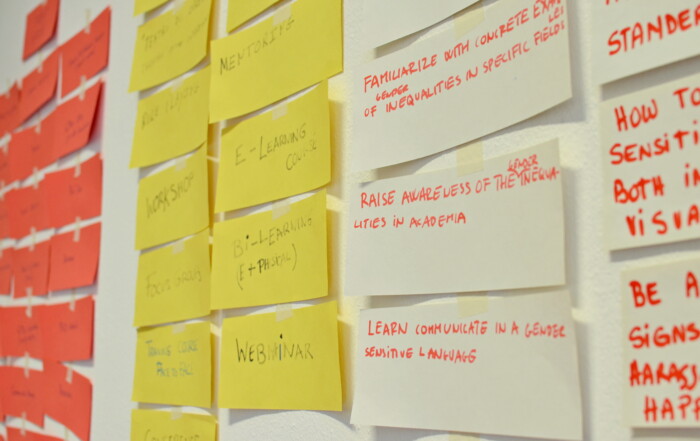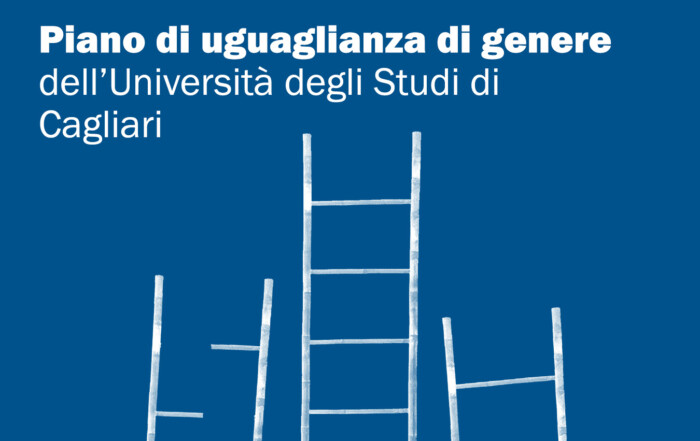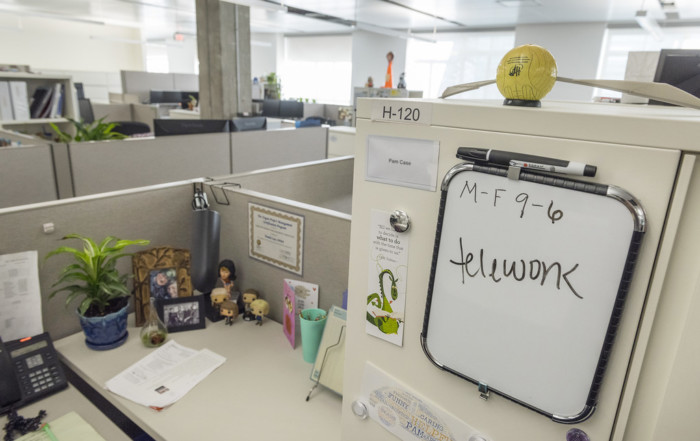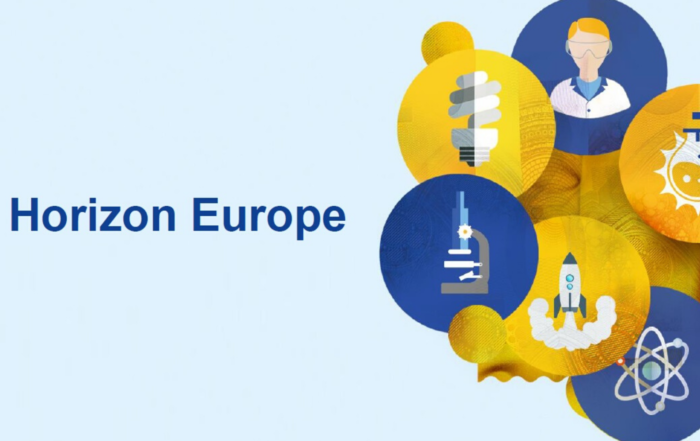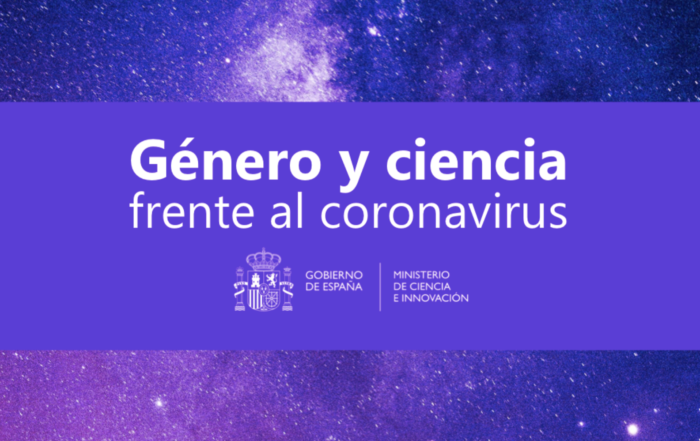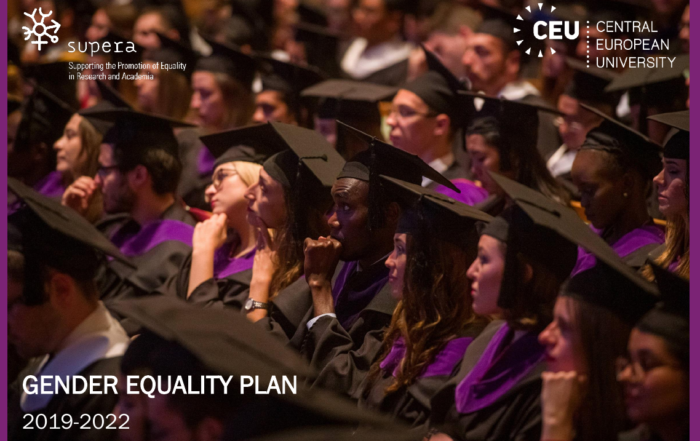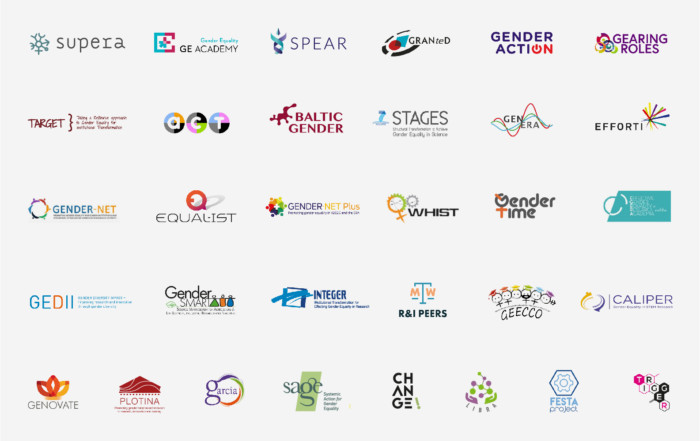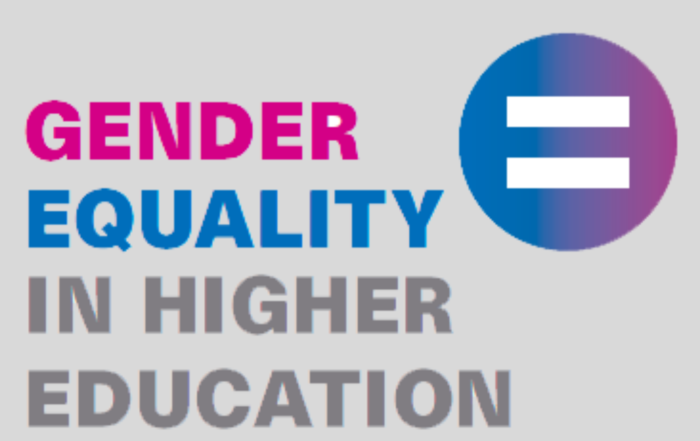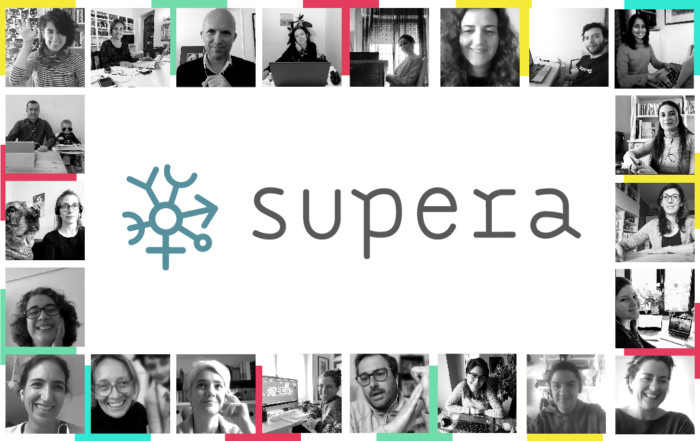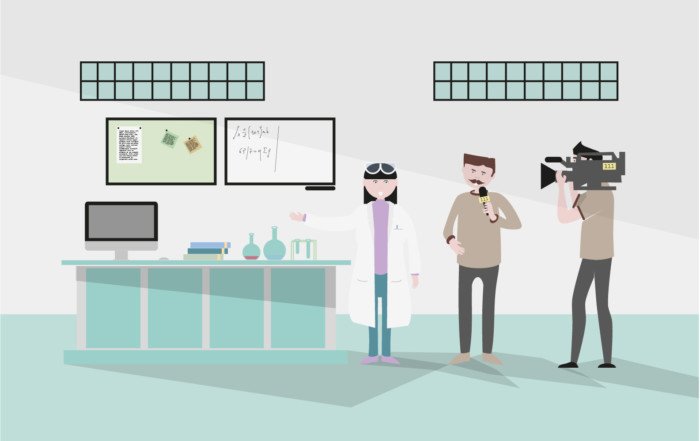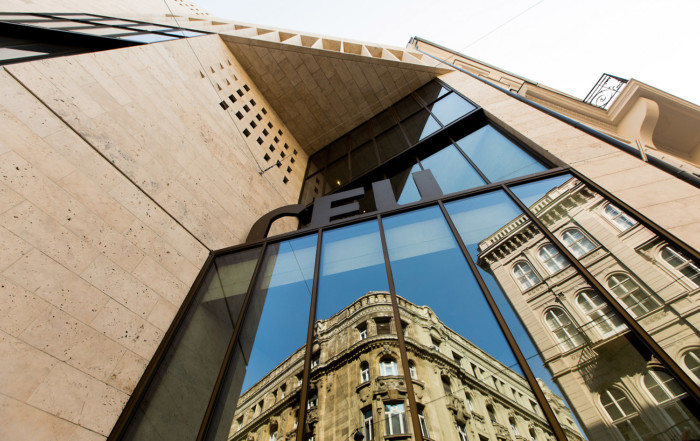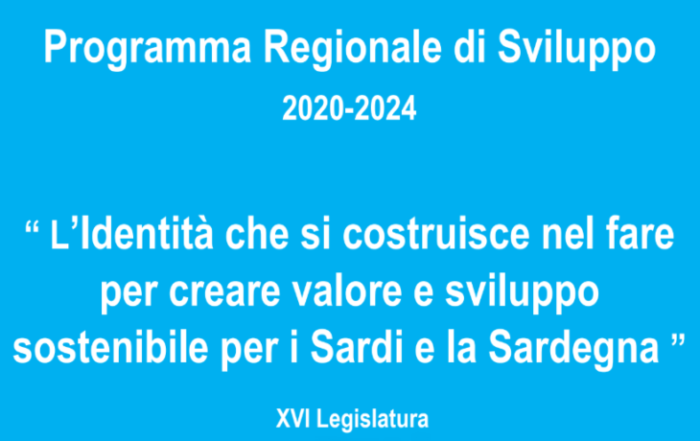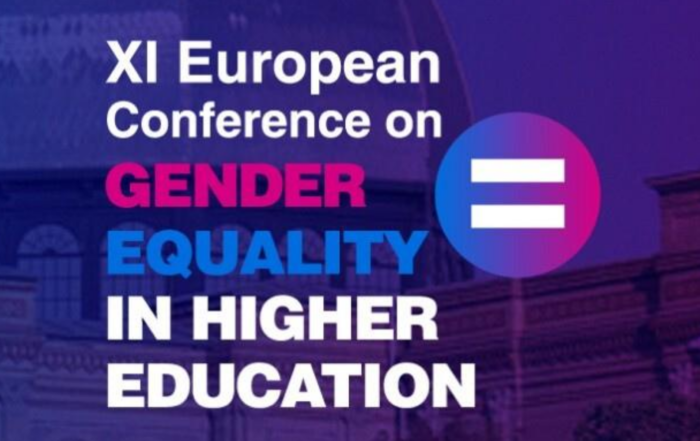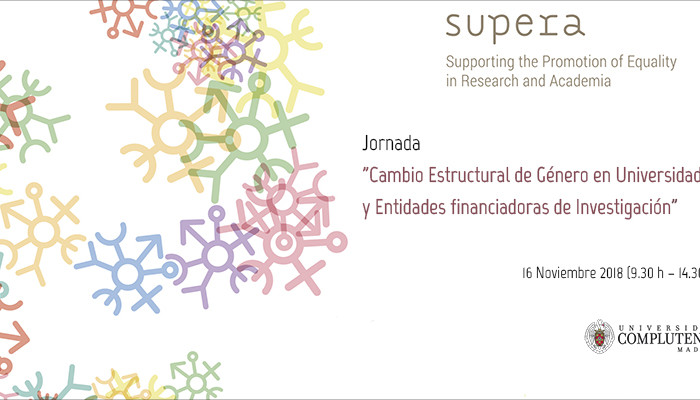Project Description
NEWS
Participatory approaches towards GEP design and implementation guide
Based on the experience of the SUPERA, Yellow Window developed a guide on how to facilitate participation from stakeholders in the design and implementation of Gender equality Plans (GEPs). The document builds on the one hand on a project deliverable that was made available to the SUPERA core teams in each GEP implementing institution at the start of the project, and on the other hand on the actual experience of using these techniques. It aims at providing guidance to all those who will implement Gender Equality Plans on how to proceed with this type of techniques.
This publication is meant as a reference document and guide for all who intend to use participatory techniques. The target of this publication are the members of the core team in charge of the GEP inside an institution, as well as those acting as change facilitators.
Download the Participatory approaches towards GEP design and implementation SUPERA guide [file .pdf]
Visit the web page dedicated to participatory techniques
E-learning training modules on gender equality for R+D+I financing activities
The Spanish State Research Agency has issued a series of e-learning training modules on different aspects of gender equality in R+D+I, developed in collaboration with the Women and Science Unit of the Spanish Ministry of Science and Innovation, as part of the actions foreseen in the I Gender Equality Plan of the Agency 2021-2023.
Visit the page on the website of the Spanish State Research Agency: E-learning training modules on different aspects of gender equality in R+D+I, for R+D+I financing activities
Visit the section dedicated to training resources on the website of the Spanish Ministry of Science and innovation: Recursos didácticos
Here is the full list of video trainings (in Spanish language, with self-generated English captions):
What comes next? Sustainability of structural change for gender equality after SUPERA
By María Bustelo, Universidad Complutense de Madrid and SUPERA Coordinator
SUPERA is finally coming to an end after four years of being working together. It seems quite far away now those days in early June of 2018 of the kick-off meeting. As I said in the opening of our Final Conference in Madrid last March 25th, looking back now, what four years! We can definitively say that it has been a long and winding road. Throughout this four-year period, quite intensively during the first 18 months of the project life, we faced important institutional and political changes in all our implementing partners. And the pandemic precisely caught us about to hit the midst of the project when we were just finishing the take-off and reaching the cruising speed. All these circumstances made us be constantly adapting our strategies, interventions and change processes to the different contexts, and they also made us highly resilient.
But all in all, SUPERA has also been, beyond an enormous challenge, a fabulous adventure, full of efforts, achievements, and inspiring practices of which we are proud. It has also represented the best of working together, supporting each other, strengthening previous and establishing new professional bonds, which I am sure, will last well beyond the end of SUPERA.
The SUPERA consortium resulted a balanced formula of Research Performing Organizations (RPOs), in this case, four universities, and two very different Research Funding Organisations (RFOs), as we understood from the beginning that gender+ structural change should also be enhanced by how research money is distributed. Although with different logics and being respectful of our different idiosyncrasies, we have had excellent exchanges, used synergies, and learnt a lot from each other. The other wise choice of the SUPERA consortium was to count on two excellent supporting partners, one, Yellow Window, for training and guiding us through innovative methodologies and resources, and Science Po, as an embedded formative evaluator providing soundly continuous feedback to the implementing partners. For me, it has been a pleasure and an honour to coordinate this excellent consortium.
So, what comes next? How does SUPERA ensure sustainability? Sustainability has been one of the four core principles with which SUPERA was designed and developed. But the other three: cumulativeness, innovation and inclusiveness also contribute significantly to the sustainability of the project.
The first principle we wanted to observe from the design and inception of the project was cumulativeness. It was about taking advantage of what was already there, not trying to reinvent the wheel. Therefore, SUPERA was drawn upon tools & instruments already experimented and evaluated by other experiences and structural change projects. Moreover, throughout the project, we have continuously exchanged with other sister projects, encouraging, and participating in joint initiatives and campaigns, common seminars, and webinars. This has been facilitated by the fact that several partners in the SUPERA consortium participated in other past projects, and the others will continue to contribute to future ones. And SUPERA leaves several materials, methodologies developed, and documented inspiring practices that will contribute to this common European legacy.
The second principle, that one of innovation, made us develop innovative implementation structures using transformation design techniques, as Gender Equality Hubs and Gender Equality Fab Labs, which were thought for designing, prototyping, and testing affordable and innovative policy solutions to gender bias and imbalances identified through gender audits and diagnoses. Gender Equality Hubs, adapted to each institutional context, have been the most important key actors for launching and enhancing gender structural change processes at SUPERA implementing institutions. Gender Equality Fab Labs have also been an interesting and useful resource, which was used productively in different formats and for various topics by all partners. What we learnt from the SUPERA experience is that the initial diagnoses that were planned and successfully performed during the first year of the project, were also needed to be monitored in a continuous manner throughout the project. The reasons for that are the invisible and many times difficult-to-grasp character of gender+ inequalities, as well as all the confronted political, institutional, and global changes (pandemic included). This need of constant and updated information strongly incentivized us to prioritize, from the beginning, the promotion of sustainable and stable gender management information systems.
The third principle, inclusiveness, is at the core of our methodology and has strongly defined the SUPERA spirit. It means that we are absolutely convinced that the only way for reaching a real structural change is through the involvement of the entire research & university communities. Therefore, in SUPERA we have emphasised the importance of using participatory techniques and active stakeholders’ involvement, as this really increases their support to change processes and helps to reduce resistances. This conviction alludes also to the need of reaching everyone in the community, including men and all genders, without requiring the feminist or gender expert “card” to entry the club: the real sustainable change starts when non previously gender advocates become gender+ allies and change agents. And after four years we can say that we are very proud as, beyond the core teams, the SUPERA communities in partners’ institution are huge and diverse.
Coming back to the fourth SUPERA core principle, sustainability, from the beginning of the project we committed to design, implement, and evaluate interventions whose results have chances to endure over time producing gender structural change in our institutions. For securing this sustainable institutional change, we have done efforts towards project top management endorsement apart from the visibility of actions in our institutions, and the inclusive long-term involvement promotion explained above.
Another hard-won lesson learned from SUPERA is that the necessary top management commitment and endorsement should be always combined with bottom-up approaches from the communities. These last ones are so important that, if already started, they can remain being the change driving force when the first one disappears, or that well combined with adequate institutional political will, they can have amazing multiplying results. In all partners institutions, most of the participatory structures and networks created by SUPERA will remain in place and keep on being important change drivers. This is the case of the Gender Equality Nodes network at UCM, with representatives in all the 26 UCM Faculties, which has been increasingly active in gender promotion activities at the UCM towards the end of the project. For instance, as a result of a Conference on how to integrate a gender perspective in teaching organized by this Network with SUPERA support, an edited guide with recommendations for integrating gender in the areas of STEM, Social Sciences, Health Sciences and Art & Humanities will be released at the UCM very soon. But even going beyond SUPERA, this Network promotes a true interdisciplinary approach to gender by participating together in an innovative gender-sensitive pedagogical project and in another one for studying classroom student participation for the UCM Student Observatory. No project team at the UCM had ever covered so many faculties and areas before.
SUPERA also leaves concrete outputs, as for example, the already disseminated the Tailor-mage guides for gender-sensitive communication in research and academia, highlighted as a key good practice in the field in the newly updated version of the GEAR (Gender Equality in Academia and Research) online tool by EIGE. Other examples from SUPERA are also referenced in the GEAR tool, Gender Equality Fab Labs and the Gender Equality Nodes network at the Complutense University of Madrid (UCM). At the end of the project this month, SUPERA will also submit the last public deliverables, among others, Guidelines and best practices for RPOs and its version for RFOs. Also, several participatory and co-creation techniques have been developed and adapted by YW under SUPERA, like journey maps, lotus blossoms, stakeholder mapping, cause diagrams or personas, and guides and edited materials on those techniques will be uploaded and made available in the SUPERA web for further use by the structural change community.
As part of our resilient response to the COVID-19 crisis, as part of SUPERA, Central European University (CEU) provided the senior leadership team with a list of recommendations for a gender-sensitive implementation of telework in relation to COVID-19 pandemic, while the UCM performed a Survey on working conditions, academic time usage perception and academic performance during the COVID-19 crisis, which was also adapted by the University of Coimbra (CES-UC) and the University of Cagliari (UNICA). Their results have been already disseminated in reports, conferences, and future academic publications.
At the level of implementing partners, key initiatives have leveraged change beyond SUPERA organizations. This is the case of the network of regional research funding bodies committed to advancing gender equality and mainstreaming gender in research set up by the Spanish Research Agency (AEI- Partner MICINN), in a country where regional governments have significant agency regarding higher education and research. At the Autonomous Region of Sardinia (RAS), a regional research funding body granted with specific capacities under Italian Law, the SUPERA-driven Gender Equality Plan was taken up as an opportunity to mainstream gender not only in research funding calls, but also for structural funds, at a time when the insular region receives considerable funding through the EU recovery plan. This impact also leverages the leading role the two Sardinian partners (both RAS and UniCA, this last one being the largest university of the Island) are taking in building a gender sensitive research eco-system in the region. Also, in Portugal, SUPERA has been the driving force in establishing Coimbra as a pioneering university, actively sharing practices and knowledge also with national gender equality policy stakeholders, at a time when parity laws became applicable to higher education and research bodies. As an example, during the latest legislative campaigns, Coimbra University’s Vice Rector for Research publicly engaged Prime Minister Pedro Costa with the gender dimension in research as a topic for his next term.
Summing up, SUPERA leaves six Gender Equality Plans in our six implementing partners, but also important changes and structures in our institutions that go beyond those plans. We leave materials, reflections, and inspiring practices as well as active professional bonds and networks that feed and contribute to the European structural change and sister projects’ community. We also leave a good group of colleagues who became good friends while struggling together to make the best of the project during difficult times. I am sure all of these will continue to impact our institutions and our personal and professional lives beyond the end of SUPERA.
Inspiring gender equality: the new institutional videos are online!
By Valentina Citati and Paola Carboni, University of Cagliari
After a huge collective selection and editing effort, the SUPERA Consortium identified some of the most inspiring practices developed during the 4 years of our project, and collected them in a new institutional video, together with selected highlights of the values and methodology that inspired our approach.
The work, developed with contributions from all partners and coordinated by UNICA, produced an institutional full video and 9 short extracts of the inspiring practices from each partner.
Cumulativeness, innovation, inclusiveness, sustainability: in the first short extract our Coordinator María Bustelo presents the four key principles that inspired the work in Supera with the aim to promote institutional change for gender equality.
In the second video “Capacity building, training and support”, Lut Mergaert (Yellow Window) explains how the application of co-creation and participatory techniques supported the promotion of institutional change for gender equality throughout SUPERA, becoming a key success factor and a source of inspiration for the partners implementing gender equality plans.
Tara Marini presents the initiatives foreseen by Regione Sardegna to support female researchers: for instance, the use of gender-sensitive language in the funding calls, and the introduction of a section dedicated to ensure gender balance.
In the video Working Group on #genderequality in R&D&I funds Angela Martínez-Carrasco tells about the experience promoted by MICINN with the development of a roadmap for the integration of a gender dimension in the planning and evaluation of R&I strategies, programmes and calls for proposals.
Ester Cois explain the institution of the Delegate for Gender Equality in UNICA: a key step to promote gender equality in the university.
Mónica Lopes’ video presents the Coimbra University’s strategic plan to ensure gender equity, an innovative and transformative measure to inspire other universities in inclusiveness and equality.
Paula de Dios presents the experience developed by the Complutense University with the gender equality nodes network.
The importance of CEU’s New policy on harassment and its innovations is described by Ana Belèn Amil, with highlights on how to increase the effectiveness of the policy itself and the trust of the academic communities in reporting cases.
Finally, Maxime Forest, SUPERA internal evaluator (Sciences Po), explains the role of monitoring and evaluation for the gender equality plan development.
The invitation is to watch, share and be inspired by the practices and tools for promoting gender equality narrated in our videos.
Feminist project management in Covid-19 crisis
By Paula de Dios Ruiz, Universidad Complutense de Madrid and SUPERA project manager
One of the main challenges of the SUPERA project has been grappling with Covid-19 crisis. At the beginning of the project, we were planning to implement several activities with the conviction that face to face discussions were crucial to change mindsets and policies. Suddenly, in March 2020 the Covid-19 crisis led to emptiness of campuses and the imminent shift toward remote work.
SUPERA partners were used to working online among our international Consortium, thus we rapidly transferred our local activities to online formats, using new online tools to continue our co-creation processes of GEPs design, however new challenges emerged that so far no one had experienced before.
During the tough lockdown period, the main problem was to balance personal and professional life; as a consequence of that, gender inequalities in research and academia were aggravated, as the surveys conducted by our institutions revealed. However, this has not been the only consequence of Covid-19 crisis.
In the following list, I would like to highlight some lessons learnt during the last two years of project management in times of Covid-19 crisis.
- If someone is not answering my emails or complying with deadlines, I should address the situation with flexibility and understanding, because there is a wide range of particularities affecting every person in these times, especially women with care responsibilities.
- Online tools are not user-friendly for everybody, so it is important to be patient and supportive and avoid awkward situations. Feeling clumsy in online meetings could lead to lack of participation and, due to gender and age technology gaps, we can infer who will be less involved.
- Online meetings, as well as face-to-face ones, require facilitation and time management. Since the Covid crisis started, a lot of meetings have been set up with no clear aim, just because it’s easy and convenient to arrange one. However, without a clear agenda and goal, meetings easily become time consuming and frustrating, so it’s crucial to prepare them in advance and avoid overtime and online fatigue. Taking into account that at certain moments it’s highly likely that participants (especially women) are simultaneously at the meeting and taking care of someone at home. Thus, every time a meeting is held, have a clear objective, agenda and stick to the time allotted.
- Additionally, it’s important to facilitate meetings in which we guarantee attendees´ total participation. It goes without saying that it’s pretty easier to be mute in a virtual meeting than in a face-to-face one. Women tend not to speak out as often as men do. In view of this fact, I strongly recommend putting into practice participatory techniques. A good example of this would be to let participants know in advance that a round of opinions will be asked for. Another tip would be to use the chat box instead of giving the floor, which will make participation more inclusive.
- Mental health problems have always existed, however since the outbreak of Covid-19 there has been a dramatic surge of these cases of anxiety, stress and depression. Consequently, medical leaves have kept soaring drastically. Therefore, we should be aware of this reality and treat it respectfully, with confidentiality and avoid stigmatizing.
- Sexual harassment and gender based violence has been still ocurring eventhough we are all telecommuting. Therefore, as always, we must be sensitive, act in those cases where we have clear evidence and be supportive to women at risk of violence.
- This crisis has been experienced in different ways by each of us, depending on each one’s family situations, health conditions, place where we live, loss of close relatives due to Covid, hospitalization due to Covid… As a consequence, each one has different perceptions of risks, concerns, vaccination status and willingness to establish higher or lower prevention measures. If we are planning a presence event we must deal with this diversity, discuss it openly and not put anybody in an uncomfortable situation, or expose anyone to risks without previous agreement.
All in all, a feminist approach in project management is a must when we are working on gender equality projects which, in my opinion, means that we must understand and boost diversity, give value and visibility to all types of knowledge and put care responsibilities and live needs at the center of our managament, because feminist theory must be put into practice also in management practices.
Mutual learning & exchange between RFOs to foster institutional change: webinar recording available
Date: Thursday, 21 April 2022 at 10.00 – 11.30 Central European Summer Time.
This webinar will take the format of a facilitated exchange between less advanced and advanced organisations, where the first will pose questions related to setting up and implementing a GEP (e.g. how to start, how to set up a team, how to decide on priorities, resources to foresee, how to mobilise internally, etc.) and the second will try to address the questions presenting their experience. The duration will be approximately an hour with the participation of four RFOs. The session will be offered to the SUPERA GEP implementing partners and it will be opened to interested RFOs across Europe.
Learning objectives:
- Mutual learning and exchange: getting inspiration from others with examples of promising practices
- Present the pitfalls and strengths of applying institutional change in RFOs
- Inspire about possible benefits and interventions
Invited speakers:
- Laurence Guyard, Responsible for relations with scientific communities, ANR (Gender-SMART project)
- Donia Lasinger Deputy Managing Director & Programme Manager, Vienna Science and Technology Fund, WWTF
- Nadège Ricaud, MSCA National Contact Point, Contact Person for Gender Fonds de la Recherche Scientifique, FNRS
- Elena Simion, International Projects Expert, Executive Agency for Higher Education, Research, Development and Innovation Funding UEFISCDI (CALIPER project)
Agenda
10.00-10.10 Welcome / Expectations about the webinar
10.10-10.40 4 RFOs presenting their journey
10.40-11.00 Facilitated Q&A between the RFOs
11.00-11.30 Q&A and wrap-up
The webinar recording is accessible via this link on the SUPERA YouTube channel.
Engaging with external stakeholders and innovation ecosystems: recording and presentations available
Friday, 8 April 2022 at 11.00 – 12.30 CET
This webinar aims at presenting the experiences of working with external stakeholders and the innovation ecosystem while implementing a Gender Equality Plan. Capitalising on the knowledge gained from our sister projects, Gender-SMART and CALIPER, the webinar will present the benefits of this collaborative approach which could be structurally built into the GEPs process to foster institutional change.
The session will be offered to the SUPERA GEP implementing partners and will be open to sister projects. The webinar will take the format of two presentations of approximately 20 minutes each, followed by a question-and-answer session facilitated by two facilitators.
Learning objectives:
- Provide examples of promising applied solutions and familiarise with existing promising practices
- Inspire about possible benefits in institutional change from working with external stakeholders
- Inspire about possible interventions with current and new partnerships
Invited speakers:
- Panayiota Polykarpou, Project Manager at CUT for the Gender-SMART project Download the presentation by Panayiota Polykarpou
- Maria Sangiuliano, CEO and gender expert at Smart Venice, Scientific coordinator of the CALIPER project Download the presentation by Maria Sangiuliano
Facilitators:
- Lut Mergaert & Vasia Madesi (Yellow Window)
Agenda
11.00-11.10 Welcome / Expectations about the webinar
11.10-11.30 Presentation: Working with external stakeholders at CUT
11.30-11.50 Presentation: The quadruple helix innovation ecosystem of CALIPER project
11.50-12.20 Q&A
12.20-12.30 Wrap-up and evaluation
The webinar recording is accessible via this link on the SUPERA YouTube channel.
How do we deal with resistances to structural change in gender equality in higher education?
By Lucy Ferguson, Yellow Window
We know that resistances are a normal and necessary aspect of structural change for gender equality. As Fiona Mackay argues:
“We should celebrate as a success cases where the status quo has to start to work hard to reproduce itself and has to invest resources and energy in resisting gender change. The need for visible resistance to positive change is a success. It is evidence of the chipping away of patriarchy; it might be chipping away really slowly, but it is changing.”[i]
However, for many of us, the daily practice of dealing with resistances is challenging, and often exhausting or demotivating. The recently published Toolkit: Resistances to structural change in gender equality – co-authored with Lut Mergaert – was developed in order to support for those implementing structural change in higher education institutions to deal with resistances in their work. While reading the Toolkit, we invite you to reflect on a couple of key questions: How do you currently deal with resistances? How could you deal with resistances differently?
The Toolkit draws on the collaborative efforts of a range of H2020 structural change projects – particularly SUPERA, GE Academy, Gender-SMART and GEARING-Roles. It incorporates the learnings and reflections from three in-person and two online workshops on dealing with resistances, as well as a SUPERA project webinar which followed up on the resistances toolkits developed during the in-person workshop. Following these workshops, the majority of participants reframed their thinking by acknowledging that resistances are a normal and necessary part of change. They also agreed that resistances are something which can be managed, and felt encouraged to be subversive and strategic, often within unfavourable or challenging political circumstances. The Toolkit is organised in three sections: Categorising and theorising resistances; Common guidelines for dealing with resistances; Resistances Action Plan.
Categorising resistances – why, how, who?
Building on previous work developed by the FESTA project[ii] as well as other research, the toolkit presents a set of examples and questions to help readers understand how to categorise the resistances they are experiencing when implementing their Gender Equality Plans (GEPs) and structural change programmes. Reasons why resistances are being experienced include a wide range of aspects, such as, for example: limited human and financial resources; conflicting interests and priorities for funding; lack of capability; not knowing how to do it or uncertainty on how to start; gender blindness; and a perception that gender equality has already been achieved. As shown here, resistances are not always specifically about gender equality per se. Indeed, as discussed during the workshops, our assumptions regarding what is behind resistances may at times be arbitrary and not necessarily reflect the actual reasons for resistance.
Resistances to structural change can be manifested in a number of different ways – which can largely be categorised into active/explicit and passive/implicit. Active or explicit resistances tend to be easier to identify, such as: hostility, sexist humour, devaluation and disparaging women’s accomplishments or professional commitment, interrupting, denial of access to resources, etc. Further expressions of explicit resistances include: “essentialist” discourses about gender inequalities; depoliticising and marginalising gender inequality arguments and data as a matter of contrasting opinions, rather than “facts”. In contrast, passive or implicit resistances can be more difficult to identify and address. These include: making procedures more difficult, limiting access to institutional resources, providing mere lip-service support but nothing else, etc.
In terms of who is creating resistance to structural change, individual resistances come from a single person, more often from men, although not exclusively. Group resistances can also be identified, such as a specific department or group of colleagues within a department. As discussed in the workshops, institutional – as opposed to individual or group – resistances are more difficult to address, as they tend to be a product of institutional culture or an institution’s legal or administrative procedures. Moreover, the superficial or preliminary manifestation of resistances may be seen differently as the implementation process develops. It should be noted that in some workshops, participants found it more difficult to identify institutional resistances compared to individual.
Common guidelines for dealing with resistances
The Toolkit presents the collective work of participants in the resistances workshops. In terms of caring for the “core team”, an emerging theme in structural change projects is the lack of recognition of “academic care work”. In order to acknowledge this, the Toolkit develops the “Four Ss (for us)” approach:
- Success – celebrate small wins to help motivation
- Sanity – use energies where they can have most impact
- Self-care – look after each other’s well-being
- Sustainability – bear in mind this is a long-term process
Within the ‘For Us’ approach, participants developed the Anticipate – Prepare – Rehearse strategy. Rehearsal involves practising arguments and counter-arguments and learning to communicate politically – for example, use of role plays has been particularly useful. As set out in the Toolkit, role plays can be used by the core team to practice particularly challenging or stressful situations in advance, managing reactions and preparing strategies. More broadly, in order to tackling resistances to implementation, the Toolkit discusses the following aspects: develop tactics and strategies; build networks and alliances; learn to deal with bureaucracy; and improve arguments and communication.
Resistances Action Plan
Finally, the Toolkit presents an Action Plan, composed of five stages: Identify and Categorise; Prioritise; Conduct a Follow-up Session; Revise.
Stage 1 – Identify and Categorise
Stage 2 – Prioritise
Stage 3 – Follow up Session
Stage 4 – Revision of Action Plans
We invite you to use the Toolkit to support your ongoing efforts in structural change for gender equality. The full document can be found here at this link.
[i] Fiona Mackay, quoted in Aruna Rao, Joanne Sandler, David Kelleher, Carol Miller (2016), Gender at Work: Theory and Practice for 21st Century Organizations, Routledge
[ii] Saglamer et al. (2006), Handbook on Resistance to Gender Equality in Academia, available at: https://www.festa-europa.eu/public/handbook-resistance-gender-equality-academia
From training the trainers to training the community: the experience at CES-UC
By Cláudia Araújo, Universidade de Coimbra
Throughout the duration of SUPERA, all Consortium members devoted significant efforts to training and capacity building, as, from the beginning, our project was about improvement: improving our institutions, improving the wellbeing of our communities, but also improving ourselves, as academics and as human beings. Our starting point at CES-UC was one of general lack of awareness and expertise on gender equality in academia by key stakeholders, as well as absence of institutional action or mandate in pursuing gender equality, so we were aware that our work would necessarily include training and capacity building.
The participatory approach to these activities developed in the Consortium was a fundamental step in pursuing this multifaceted improvement.
Training the trainers
Although the core team at CES-UC was well versed in gender equality in higher education institutions, and experienced in delivering training, participation in the first training sessions organised within the Consortium constituted a much-valued opportunity for obtaining new skills and gaining new insights. We appreciated the hands-on approach to acquiring knowledge, the experienced gained on working with an array of participatory techniques that we then applied in our own university, and enjoyed mobilising our creativity to design collective outcomes that could be adapted to our own institutional context. It was also an opportunity to engage partners from the University’s central services that would be able to multiply efforts across our organisation: for example, the HR Officer, selected with the purpose of fostering her ability to incorporate GE in her work, as well as her engagement with GEP implementation or the Head of the Planning Division, whose in-depth practical knowledge about the structures and procedures of the institution made him a valuable asset for foreseeing and navigating resistances.
These training sessions were also excellent opportunities to build a more personal relationship with the teams from the other universities, research funding organisations and expert partners. The added value of the personal interconnections built during these sessions cannot be understated: as we faced challenges, resistances and difficulties during the implementation of the project, we knew we could benefit, from the start, from a strong inter-institutional support network that we could rely upon – even in such unprecedented pandemic times.
We also took part in training sessions promoted by sister projects, such as the GE Academy, that were also valuable in enriching our experiences and building our capacities to pass on valuable knowledge to our own community at CES-UC, but also to network and expand our horizons.
Training the community
The Supera team at CES-UC run multiple training sessions, workshops and co-creation actions since Supera’s inception. We chose to articulate traditional exposition-based training with co-creation techniques, as that stood as the most appropriate path for our institution. That allowed us to provide innovative spaces of knowledge creation, with the participation of multiple members of the academic community: students, research and teaching staff, technical and administrative staff, and institutional leaders. We were thus able to create participatory venues where they were lacking, and support participants’ efforts in co-designing solutions for complicated gendered problems, that we then streamlined to decision-makers in the university, in the form of specific recommendations/ guidelines/ checklists. This practice also created a much valued avenue of engagement and open discussion, enabling further networking for gender equality across the institution.
This alliance-building and stakeholders empowering work was rewarding for both trainers and trainees, and the multiplying effects of the sessions cannot be diminished. We received very good feedback from our participants, who often returned for subsequent sessions with different topics and recruited colleagues and friends to join them. But these sessions also constituted a great opportunity for the Core team to reflect on its own ability to create impact, and to find support and encouragement in the interpersonal connections that were built during these encounters.
In lieu of a conclusion: training and capacity building for GEP design, implementation and monitoring
Training and capacity building are fundamental for structural change, and efforts devoted to these activities were crucial in all steps of GEP creation and implementation at CES-UC. In GEP design, there was, firstly, a need for relevant stakeholders to embrace the pursuit of gender equality as essential for a fairer, more inclusive and more sustainable institution; secondly, ownership of the GEP would be deeper if said stakeholders were involved in its design. It was to these two dimensions that the team at CES-UC firstly devoted its training efforts, which were continued through the inclusion in the GEP itself of a number of training and capacity building actions encompassing all publics that make up the academic community, devoted to a variety of themes that stood up as particularly relevant during the initial assessment (i.e., inclusive communication, recruitment and promotion, integration of the gender perspective in research and teaching content). What is more, the importance of gender analysis in monitoring and reporting were also part of the general capacity building for gender equality promoted by the Core team at the University of Coimbra.
In addition, the sessions were also an important avenue for members of the Gender Equality Hub and other interested parties to gather – in person or online – in a safe environment, and discuss how they could enhance their own work towards gender equality, often in connection to actions included in the GEP that they could pursue in their faculties or units/divisions. Training, then, was a catalyst for networking, lobbying, finding collective answers to institutional resistances, and support for initiatives taken. Human connections were built and, we like to believe, friendships were created. In that sense, SUPERA training sessions became community-building moments, with a focus on the promotion of Gender Equality.
As we move towards the end of SUPERA, we build on those connections as an essential takeaway from our hard work, and are certain our experience does not differ dramatically from that of other members of the consortium. As our final conference approaches, we look forward for another valuable moment of learning and sharing with the people who accompanied us through this journey, in the certainty that it will not be our last encounter.
Beyond ticking the box: the Final conference recording & presentations are online
The SUPERA project is coming to an end and on Friday, 25th March 2022 (h. 9:30-16:30 CET) our Final conference will take place!
We are proud of our efforts and achievements on gender equality so far and we would like to take the opportunity of the closing event to have an exchange with all the committed colleagues of the gender & science community about lessons learned, promising practices and common challenges for the sustainability of gender equality actions and policies.
Join us on the 25th of March, 2022 at the SUPERA Final Conference Beyond ticking the box: sustainable, innovative and inclusive Gender Equality Plans. The event will be held in a hybrid mode: we look forward to meeting you in Madrid, at the UCM Campus Moncloa (Faculty of Medicine. Room Professor Botella), and online.
Online registration is mandatory: please find the registration form at this link.
You will be invited to choose between the in-presence and the online attendance and you will receive a reminder a few days before the event. Please don´t hesitate to contact the SUPERA Project Team if you have any enquiries: superaprojectoffice@ucm.es
CONFERENCE RECORDING & PRESENTATIONS
The conference recording is accessible via this link on the SUPERA YouTube channel.
The slided used by the speakers are accessible on Slideshare and via the dedicated page of our website.
CONFERENCE AGENDA
9.30 -10.30 Opening
Margarita San Andrés Moya, UCM Vice-Rector for Research and Transfer
Domènec Espriu, Director of the Agencia Estatal de Investigación, MCIN-AEI
Athanasia Moungou Gender Sector Unit D4-Democracy & European Values DG Research & Innovation, European Commission Presentation
10.30 – 11.30 Welcome from the SUPERA Consortium and Keynote speech: “GEPs Eligibility criteria and beyond”
Maria Bustelo, SUPERA Coordinator, Universidad Complutense de Madrid
Marcela Linková, Head of the Centre for Gender and Science. Institute of Sociology of the Czech Academy of Sciences Presentation
11.30-12.00 Coffee Break
12.00-13.30 Round table “Stories of institutionalisation in Universities and Research Centers: inspiring practices”
Moderator: Emanuela Lombardo, UCM
- Mónica Lopes – Centro de Estudos Sociais Universidade da Coimbra: Gender Mainstreaming Monitoring Structure Accountability mechanism of the GEP Presentation
- Ana Belén Amil – Central European University: Increasing the representation of women as Faculty Presentation
- Marta Aparicio – Universidad Complutense de Madrid: Gender Equality Nodes Network Presentation
- Ester Cois – Università degli Studi di Cagliari: Institutionalisation of Gender Equality Delegate position Presentation
- María Pilar Rodríguez and María Jesús Pando – Universidad de Deusto (Project Gearing Roles): Guidelines to mainstream gender in research and teaching Presentation
13.30-14.30 Lunch Break
14.30 -15.45 Round table “Sustainability of GEPs and Networks in Research Funding Organisations”
Moderator: Sophia Ivarsson, VINNOVA
- Massimo Carboni – Regione Autonoma della Sardegna
- Lourdes Armesto – Agencia Estatal de Investigación Presentation
- Carry Hergaarden – Netherlands Organisation for Scientific Research Presentation
- Jana Dvorackova – Technology Agency of the Czech Republic Presentation
15.45-16.00 The SUPERA RFOs network: goals and next steps
Lut Mergaert – Yellow Window Presentation
Marcela Linkova – Institute of Sociology of the Czech Academy of Sciences
16.00-16.25 Concluding remarks – SUPERA International Advisory Board
Jörg Müller – Open University of Catalonia, Anne Laure Humbert – Oxford Brookes Business School, Miguel Lorente – University of Granada, Nicole Huyghe – Boobook, Maxime Forest, Sciences Po Paris
16.25-16.30 Closing
Dream it, be it! A joint campaign for 11/02
On the International Day of Women and Girls in Science, 11th February 2022, the EU Sister projects CALIPER, Gender-SMART, SUPERA, LeTSGEPs, RESET, SPEAR, CASPER, ACT, GenPORT, MINDtheGEPs, ATHENA, GRANteD, Gearing-Roles, Gender STI and EQUAL4Europe are joining forces in order to share inspiring stories to encourage other women – and especially young girls – to pursue a career in Research & Innovation (R&I).
On the 11th and 12th of February 2022, we invite you to join our campaign by sharing your stories as women researchers, focusing on what did inspire you them to pursue your career.
The campaign is based on 3 inspiring questions, that are meant to be answered shortly to fit in the poster:
1. What is your professional background?
2. What did inspire you to pursue this career?
3. Who was your role model?
Download the editable Response template [power point format] and share it on social media. You are more than welcome to include photos in your posters. Don’t forget to use our hashtags #DreamItBeIt and #EUSisterProjects and tag us!
On 18/02 an online seminar on Gender Perspective in Teaching at UCM
Recommendations and teaching practices with a gender perspective from the Gender Equality Nodes Network of the Universidad Complutense de Madrid
During this 2021/2022, the Gender Equality Nodes Network of the UCM has worked on the analysis of experiences and practices on how to incorporate the gender approach in teaching. Results of this work will be presented on Friday, February 18, from 10:00 a.m. to 2:00 p.m.
The main aim of this event is to provide handy resources and recommendations for the Academic Staff on how to easily incorporate gender equality within classes and teaching tasks and content.
Info and details: https://www.ucm.es/supera/noticias/51479
Registration is required here: https://forms.gle/QHXkSs2tekyin5uJ8
Agenda
10.00 -10.10 Opening
10.10 – 10.45
Introduction to the Incorporation of Gender Equality Perspective in Teaching
General Recommendations in Classroom Management, Methodologies and Evaluation
10.45 – 11.30 Inspiring practices in Arts and Humanities
11.30 -12.15 Inspiring practices in Social Sciences
12.15-12.30 Break
12.30 -13.15 Inspiring Practices in Health Sciences
13.15 – 14.00 Inspiring Practices in STEM
14.00 Closing
Info: SUPERA – Project Office superaprojectoffice@ucm.es
Towards violence-free research organisations: interview with Anne Laure Humbert, UniSAFE project
Anne Laure Humbert, Oxford Brookes Business School, interviewed by Paola Carboni, University of Cagliari
Gender-based violence affects many organisations, with Universities and research organisations making no exception, but despite the scale of the issue, gender-based violence in research organisations is deeply under-reported and under-researched. The UniSAFE H2020 project is conducting the first large-scale study on the topic. Following the joint #SafeResearch4All awareness campaign, we had the pleasure to interview Anne Laure Humbert, a member of SUPERA international advisory board and also a UniSAFE partner.
In which forms can GBV occur in academic and research environments? Who are the victims and the perpetrators? Are the victims of intersectional discriminations more at risk?
The Istanbul Convention highlights four main forms of gender-based violence: physical, sexual, psychological and economic. In the UniSAFE project, we include all four but also consider other forms of violence relevant to the academic and research context such as sexual and gender harassment. We are also interested in emerging forms of violence, such as those linked to the increase in online activities, or the forms of violence not always recognised as violence such as institutional violence.
The issue of gender-based violence is often conflated with that of violence against women. While men represent the majority of perpetrators of all types of violence, and women are the majority of victims of gender-based violence, suffering disproportionate consequences, it is important to stress that both women and men can be perpetrators and victims. Intersectional factors play an important role besides gender alone. Being non-binary, trans, or from a sexual minority for example can increase exposure to gender-based violence, as does working in more precarious positions or not studying in one’s country of origin.
Is data available on how many people experience harassment and GBV in academia in Europe?
Few data are available on gender-based violence generally across Europe, with even fewer information available in the context of academic and research institutions. The UniSAFE project will provide the first large-scale study on this topic, providing both quantitative data through a survey carried out in 45 institutions across 15 countries and in-depth qualitative data through case studies of institutional responses in 15 countries and interviews with researchers more at risk of gender-based violence. The project is currently launching a call for researchers having experienced or witnessed gender-based violence at an early-career stage, on a non-permanent contract, or as an internationally-mobile student or staff, to share their experience in an individual interview. Find out more about the interviews.
These results will be contextualised through an extensive mapping of legal frameworks and policies at the national level and within the institutions taking part in the research.
The project has already delivered 33 country reports on national and regional policies on gender-based violence in universities, research institutes and research funding organisations, that are publicly available at this link.
What does it mean to switch from an individualist perspective to an organisational violence perspective?
Gender-based violence should not be understood solely from an individual perspective, where the traits or behaviours of either victims or perpetrators are the focus of attention. Instead, it is important to understand violence as a structural issue, and part of a system that produces and reproduces inequalities between groups, including on the basis of gender. Organisations, such as for example universities, create and uphold the norms that shape this system of inequalities. Studying organisational violence therefore means also putting the focus on the environment, and what it does to enable or challenge gender-based violence at the individual level, but also how it can be violent towards individuals in its own right. This is visible when institutions not only fail victims, but in fact revictimise and blame them in turn rather than address the problem of violence itself.
What are “violence-free” organisations and workplaces?
International standards such as the ILO Convention n.190 recognise the right for individuals to a world of work free from violence and harassment. The UniSAFE project aspires to contribute to the creation of violence-free universities and other research organisations. This can be achieved by developing policies and practices to counter violence, promoting violence-free cultures and enable leaders to support this. It is not only about eradicating different forms of violence, but also about creating and sustaining structural change of an environment where individuals feel – and are – included and safe.
How can a research institution address the issue of GBV, for instance including specific actions in their GEPs? How should institutions challenge the power structures behind GBV?
The Horizon Europe Guidance on Gender Equality Plans – aimed at supporting institutions to meet the Gender Equality Plan (GEP) eligibility criterion of Horizon Europe – recommends five content-related (thematic) areas, including measures against gender-based violence, including sexual harassment. It is likely that this will lead to an increase in the number of institutions in Europe that develop and implement actions to tackle the issue of gender-based violence. A danger, however, is that if this is only done as response to a financial incentive such as access to funding, then it will fail to properly address the power and inequality structures that are at the root of gender-based violence in the first place. It seems that many institutions are realising the extent and importance of the problem as a result of societal campaigns such as #MeToo, but all too often only putting meaningful processes and structures in place in reaction to critical incidents and/or media exposure. On an optimistic note, the UniSAFE will provide many evidence-based tools by the end of 2023 for institutions that seek to eradicate the problem and change their culture, and thus create the shift in power relations that is needed to create inclusive and safe universities and research organisations.
The project’s latest developments are regularly shared on Twitter (@UniSAFE_GBV), LinkedIn, and through a quarterly newsletter to which you can subscribe here.
Unconscious bias in research funding: a new webinar for RFOs on December 16th. Register now!
How research funding organisations can intervene to avoid unconscious biases in their work? A new webinar designed for RFOs will take place on Dec, 16th h. 11-12:30 CET.
The first speaker, Maxime Forest (Science Po, SUPERA Monitoring and Evaluation partner), will explain the different aspects of RFOs’ work where unconscious bias may slip in and influence ultimate effects.
The intervention of the second speaker will be of a more practical nature: Carry Hergaarden, from the Dutch Research Council (NWO), will share NWO’s experiences with the ‘inclusive assessment’ initiative. This practice is being promoted by the European Commission in its recently published “Horizon Europe Guidance on Gender Equality Plans”.
After the two presentations, there will be time for questions and answers.
Click here for the registration form
This is the 4th webinar organised by SUPERA and specifically dedicated to gender equality in research funding organisations.
SAVE THE DATE! On March 25th 2022 the SUPERA Final Conference: see you in Madrid & online
Time to save an important date on your calendars!
On Friday, 25th March 2022 (h. 9:30-16:30 CET) the SUPERA final conference will take place. The sustainability of institutional change for gender equality will be the core topic of the day.
We are glad to announce that Marcela Linkova is confirmed as keynote presenter. Stay tuned to know all the speakers!
The event will be held in a hybrid mode: we look forward to meeting you in Madrid, at the UCM Campus Moncloa, and online. A registration form will be available in the next weeks.
You are more than welcome to share the news with your colleagues!
Gender equality in R&I ecosystems: engaging external actors in institutional change processes
By Maria Sangiuliano (Research Director and CEO at Smart Venice, CALIPER scientific coordinator)
In recent years ERA policies on gender equality in research have expanded their scope to cover innovation at large. This is reflected in several policy documents, and responds to an overarching emphasis on bridging academic research with society and the economy, an orientation that is visible in the Horizon Europe Work Programme and the value attributed to research impact thereof.
More specifically, the European Commission most recent policy directions on Gender Equality in R&I and institutional change that seek for ‘inclusive’ Gender Equality Plans, refer to “multi-sectoriality” as one of the dimensions (along with intersectionality and geographic inclusiveness) on which a forthcoming Horizon Europe funded Centre of Excellence on gender in R&I and the next generation of sister projects on institutional change will be called to investigate, generate knowledge, and experiment about.
The H2020 CALIPER project was designed and is now implemented, since 2020, having multisectoriality as its key specific feature to be embedded in all steps of the institutional change process, from the internal assessment to the GEPs design and implementation phases, as well as in monitoring and evaluation. In concrete, this has implied for example an expanded scope for the internal initial assessment studies: Third Mission, Technology Transfer, Science Communication have been included to the usual recommended areas that are also part of the Horizon Europe requirement on GEPs. Also, the internal assessment/audits have been complemented by ‘external assessments’ and a gender sensitive mapping of innovation ecosystems using different methods including Social Network analysis, by each one of the 9 partner RPOs and RFOs, according to a specific set of indicators and to map.
Adopting a quadruple/multiple helix and gender sensitive approach to innovation ecosystems, all the 9 RPOs and RFOs have then formed their own “CALIPER R&I Hubs” engaging with national, regional and local authorities, private companies, social innovation actors and civil society (including feminist) organizations, as well as high schools and media. A co-creation process running in parallel with both internal and selected and motivated external actors has led to the design of GEPs. While the plans clearly keep their main focus on generating internal sustainable change, they include collaborative initiatives to be implemented in synergy with external actors: the purpose is thus to promote and support gender equality inward at the CALIPER partner organizations, while having an outward and multiplying effect at the territorial level.
At the consortium level, continuous efforts have been devoted since the very first phases on studying and sharing good and promising practices and criticalities potentially emerging from this approach, enquiring gender expert organizations, communities of practices, sister projects (SUPERA included), and the Advisory Board members. Specific, hands-on and interactive training sessions and modules have been delivered to partners including simulations on the engagement strategies to be devised.
All in all, we believe in the transformational potential of a multi-sectorial approach to gender equality in R&I, and at the same time we are aware of potential risks and tensions that might arise.
Even if the experience from the project is still ongoing as most of the partners have recently started the first GEPs’ iteration with some delay mostly due to the covid19 pandemic, our learning path on these matters can be summarized as follows:
- It is important to re-interpret and re-define the multisectorialy/intersectorial dimension of inclusive GEPs going beyond the mere interaction with the private sector, relying on gender and feminist interpretations of innovation ecosystems and, including those ‘marginal’ actors whose voices and positions are often more critical of mainstream (often gender blind or neutral) innovation policies and discourses.
- Synergy processes, alliances and exogenous change factors can be featured as potential levers, generating exchanges of gender expertise, facilitating internal consensus building particularly from high management positions, and their buy-in towards gender equality.
- At the same time, risks are to be taken into account, and efforts well balanced as external factors can become scapegoats to avoid taking full responsibility towards internal change, or lead to losing focus from the internal change dynamics that have an already high level of complexity to handle.
If you have experience and methods to share, we are more than interest to learn and interact on multi- inter-sectorial approaches to institutional change for gender equality, so do not hesitate to contact us!
Gender-based violence in research and academia: a joint awareness campaign with the sister projects
Leveraging on the International day for the Elimination of violence against women (25 November), the H2020 UniSAFE project on gender-based violence in university and research organisations has joined forces with sister projects involved in structural change for gender equality in research and academia (SUPERA, SPEAR, TARGET, TARGETED-MPI, GEARING ROLES, RESET) as well as with other projects, organisations, and individuals, to raise awareness on gender-based violence in research and academia through a campaign running between 22 and 29 November 2021.
Gender-based violence is a complex, prevalent, persistent feature and force in many organisations, with pandemic proportions. Violence, violations, and abuse may be physical, sexual, economic/financial, psychological – online or offline – and can include gender or sexual harassment.
Universities and research organisations are not exempt from this pandemic. Specific organisational structures can even create conditions for hierarchies of power that are structured by gender and age and regularly underpin violence. While gender-based violence deeply impacts individual lives, it also has serious social, economic, and health repercussions on organisational and social levels.
Despite the scale, the political significance and the growing interest in academia, gender-based violence in research organisations remains largely under-reported and under-researched. It also often remains unspoken.
A selection of the contents shared during the #Saferesearch4All awareness-raising campagin can be found at this link.
From 22 to 29 November, all projects, organisations, and individuals intent on eradicating gender-based violence in academia and research organisations are invited to actively post on social media using the hashtag #SafeResearch4All.
Media, articles, reports designed or collected by UniSAFE and sister projects have been made freely available in an Awareness-raising Toolkit. When sharing UniSAFE results, full acknowledgement of the project and authors must be mentioned, as stated in the introduction.
Fighting gender-based violence in academia and research starts with bringing the issue to the surface, paving the way for victims to speak out, and for all students and research staff to be proactive role models in this respect.
Contact: Colette Schrodi, European Science Foundation, UniSAFE communication officer: cschrodi@esf.org
Gender@UC & SUPERA: the University of Coimbra at the European Researchers Night
By Claudia Araùjo, Universidade de Coimbra
On September 24th, the SUPERA team at the University of Coimbra participated in the European Researchers Night.
In Coimbra, we organised a spot in one of the busiest streets downtown with another project at the University, GendER@UC EEA Grants, which focus on promoting the integration of the gender perspective in research. We opted for a participatory approach aimed to highlight the importance of gender mainstreaming in higher education, and invited a number of other inspiring gender-sensitive (action)research projects and initiatives rooted or ongoing at the UC to collaborate with us.
We present below the activities developed by each of our partners:
SUPERA – CES/UC
We decided to focus on the importance of the Equality, Equity and Diversity Plan of the University of Coimbra and created both a presentation and an interactive kahoot quiz that we used to engage with our audience. In the quiz, we were able to communicate both the need for Gender Equality Plans in higher education institutions (through questions about horizontal segregation, work-life balance, etc.) and the impact the plan has already had in the leadership structure of the university itself (through questions about the percentage of women in leadership at the UC both before and after the approval of the GEP). We also highlighted, through practical examples, the overarching influence of the GEP, demonstrating as it affects the whole academic community – and also the society as a whole. Another aspect whose importance we reinforced was the importance of using inclusive communication.
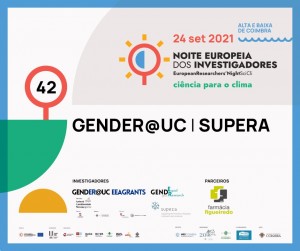
Figure 1. The flyer for the Supera & GendER@UC spot at the European Researchers Night
GendER@UC EEA Grants – Institute for Interdisciplinary Research at the University of Coimbra
The project GendEr@UC spoke about the importance of integrating the gender perspective in research content, through a role of examples of projects whose results were skewed due to its absence, as well as those which have successfully integrate gender into the design, analysis and presentation of results, thereby producing more inclusive, realistic, and useful research overall.
Pandemic and Academy at Home – CES/UC
The Pandemic and Academy at Home project proposed an interactive game of questions and answers about the differentiated impacts of the pandemic on the research and teaching activities of women and men in Portugal, as well as questions about the integration of the gender dimension in scientific research and the University of Coimbra.
Glass Frontiers
The Glass Frontiers project proposed an interactive presentation on how gender stereotypes affect educational and professional trajectories of men and women.
Phoenix – Citizens Voices for a Greener Europe
This project, which has recently received a grant from the European Commission, discussed the importance of integrating women in the public discussions on the Green European Deal, in particularly in citizen assemblies, by highlighting the importance of the gender perspective in addressing the climate emergency.

Figure 2. SUPERA in action at the European Researchers Night
It was also important for us to present the work of initiatives currently rooted at the University of Coimbra that are working to break stereotypes and increase the presence of women in scientific areas where they remain underrepresented, so we invited the Coimbra delegations of Women in Engineering and Girls Who Code to collaborate with us. Both were represented by both female and male students, thereby demonstrating that gender equality in higher education concerns both women and men.
Women in Engineering
Women in Engineering discussed the importance of including women in engineering and the gender perspective in the work of engineers through interactive quizzes, deconstructing gendered stereotypes that prevail in women’s access to STEM areas.
Girls who Code (As Raparigas do Código)
Girls who Code presented two separate activities – they had an interactive game about Gender in IT professions and brought the theme of stereotypes in artificial intelligence to discussion, an increasingly important issue in the network society, through a practical demonstration on facial recognition.
We were also lucky to count with the collaboration of the State Secretary for Equality, Rosa Monteiro, and the President of the Commission for Citizenship and Gender Equality, Sandra Ribeiro, who both sent videos in support of our event, and also featured some presentations produced by Journalism and Design students about gender equality at the University of Coimbra and in IT start-ups/companies.
Overall, this was a fantastic opportunity for us to present a collective narrative on why gender needs to be a factor in university governance overall, and we were lucky to spread the message to both the academic community and the general population in the city, including younger people. This was a successful occasion to disseminate our project to an audience that is normally removed from it, and our presentations and practical exercises certainly gave the public some food for thought on Gender Equality.
Gender-sensitive data collection and monitoring: the experience of CEU
Ana Belen Amil, Central European University, interviewed by Paola Carboni, University of Cagliari
Implementing gender equality policies in academic environments requires the availability of gender-sensitive data to support evidence-based decisions. The challenge to properly analyse such data is huge, if we consider that not only it should be systematically collected and stored, but also monitored and updated over time.
With this in mind, following the experience developed during the gender equality baseline assessment performed within SUPERA, CEU’s Gender Equality Officer Ana Belén Amil and CEU’s Institutional Research Officer Anna Galacz developed a “Handbook of gender-sensitive data collection and monitoring”.
The drafting process required the involvement of several university units, responsible for the collection and storage of different data sets, and the result is a tailor-made, step-by-step guide to data collection and management, with a solid gender equality background. The Handbook is currently under revision, in collaboration with prof. Anne Laure Humbert, researcher at the Centre for Diversity Policy Research and Practice at Oxford Brookes University and member of SUPERA’s international advisory board, and will be publicly released in the next months.
In the following paragraphs, Ana Belén Amil provides us with several highlights about the process that led to the development of the Handbook and some practical examples and advice.
What does “gender-sensitive data collection and monitoring” mean?
In short, gender-sensitive data collection means that gender is systematically included as a variable at the moment of collecting data on individuals. It is also know as “gender-disaggregated” data. Without it, it is impossible to assess the status of gender equality in a given context (in an institution, in a country, in a continent, for example) for a particular indicator. Once the assessment on that indicator is done, and an gender inequality is found, different types of measures shall be applied to improve such inequality. During the monitoring phase, data is collected and analysed once again on that particular indicator to assess if the measures taken had led to progress in gender-related terms (and if so, to which extent). Monitoring can also occur for indicators in which no inequality was found but that, according to research, tend to show gender inequalities. This way we can closely follow an indicator and be aware of any deterioration that might occur.
Can you give us some practical examples of why is it important for a research institution to collect data in a gender-sensitive way?
Collecting data in a gender-sensitive way only makes sense if a research institution is interested in promoting gender equality among its staff, students (if we talk about a university), research content and knowledge transfer. This might sound as an obvious interest on the side of HE&R institutions but, depending on the particular (political) context in which the institution is embedded (at a national or regional level), improving gender equality might not be a goal for the institution or might not be easy to pursue.
Assuming that the interest (and feasibility) are there, then there is no way to take evidence-based measures for the promotion of gender equality without a proper assessment to know where we are standing vis-à-vis a variety of indicators. To give an example: gender-disaggregated data on salaries is paramount to diagnose gender pay gap in an institution and act upon any disparities that such indicator might show. Collecting the gender of principal investigators across research teams will enable us to analyse gender disparities in leadership positions and design measures to correct them if needed.
How did you became aware that managing data with a gender-sensitive approach is a key asset for a university?
This became evident to me during the assessment phase of the SUPERA project. We had developed many indicators, and when we started approaching different Units in the University to provide us with data to run the calculations, we found that many of this data was not collected at all, was collected in a way that did not allow for statistical analysis (i.e., on paper, no digitalization), it was inaccurate, or dispersed across different units without a central database. This made it impossible (or too time-consuming) to analyse data and see how badly (or well) we were doing in certain gender equality indicators. That is when the idea of the Handbook came up: as a response to all data gaps that were found during the diagnostic phase.
Which university offices are involved in such an in depth-analysis?
It very much depends on the University and its structure. In the particular case of CEU, lots of offices are involved since the scope of the data needed is very wide. Human Resources Office and Student Records Office – Admissions Office collect data on employees and students respectively. Academic Cooperation and Research Support Office collects data on research projects (externally funded). Institutional Research Office is key for performing calculations. This list is not comprehensive but covers the offices with the highest involvement in data collection.
Which are the key action areas in which the monitoring indicators are organised? Can you describe them with some examples?
The data collection and monitoring are organised in key action areas that follow the European Commission’s suggestions with some adaptations that were more suitable for our University. Some examples of areas and their indicators are:
- Gender Equality in leadership and decision making: gender distribution in leadership positions (Rector, Provost); gender distribution in the Senate – both of them from a historical perspective.
- GE in recruitment, retention and career progression: gender distribution of the average time it takes for staff to be promoted, gender distribution of academic staff turnover, gender distribution of Faculty recruitments.
- Work-Life Balance: gender distribution of average time taken for parental leave.
- Gender in research and knowledge transfer: gender distribution of researchers in research teams, number of courses that incorporate a gender dimension in their syllabi.
- Sexual harassment: number of cases registered, severity of the cases.
How can you adopt a non-binary and intersectional approach in data management?
For a non-binary approach, we made sure to adapt our IT systems to allow students to freely describe the gender they identify with. For employees this is more difficult since the software that processes employee data does not give that option; this is still a matter to be solved. Regarding intersectionality, this is much more complicated. In theory, data collection should include other variables besides gender, such as race/ethnicity, disability, age, nationality, etc. This is a very difficult task in practice; it is already extremely challenging to collect gender data systematically, even more so to collect data for variables that were never considered for analysis. Data on race/ethnicity is particularly challenging due to the sensitivity of the topic, so for the moment we are using some (imperfect) proxies for it, such as nationality and country of birth.
Which are the most challenging aspects of introducing this approach in an institution? Do you have any practical advice to give?
I found two main challenges: collecting data under GDPR, and the lack of centralized database. Collecting and analysing data in a way that is GDPR compliant should not be, at least in theory, a complicated task. But practice showed me that due to a (sometimes) too restrictive reading of general data protection regulations, the task becomes highly bureaucratic and therefore very time-consuming. I do not think there is a way around this other than getting familiar with the content of these regulations to be clear about what can and cannot be done in terms of data collection/processing.
Regarding the lack of a centralized database (in our case this only applies to the employee body; student data is much better organized), my suggestion is to work intensively with the IT Department and Human Resources Office to come up with strategic solutions to put the data “in order”. This will not only benefit gender equality related assessment but also the strategic planning of the University as a whole. It is important to raise awareness on how important (gender-sensitive) systematic data collection is for the running of the institution.
Another challenge, but this is not specific to gender-sensitive data collection, is the low level of prioritisation it tends to receive. Unless there is an urgent need derived from other aspects of the functioning of the university, this task is so time consuming and sometimes overwhelming that it gets dropped to the bottom of the list.
Is it possible to introduce gender-sensitive data management on a low-budget basis?
If by budget we only refer to financial resources, I would say yes. If we include internal human resources as part of the budget, my answer would be: it depends on the mess that the university has in terms of data management. The more chaotic and unsystematic, the more work in terms of human involvement will be required to bring order to the chaos. And this is of course specific to each institution.
What sources provided you inspiration for this work? Can you recommend some reading in particular?
The main source of inspiration was the work done by several sister projects of SUPERA, who had already developed a compilation of indicators and shared them in public deliverables. Since one of the core principles of SUPERA is cumulativeness, we built up from what other projects have done before and adapted it to our own institutional context. Of course we let go of some indicators that were not relevant for CEU, while we also added others that were not present in previous compilations, but we don’t have to reinvent the wheel each and every time.
Our main resources were the deliverables of Gender Diversity impact (GEDII), Plotina, Baltic Gender, Target, GARCIA, EFFORTI, Gender Net, and of course She Figures.
The XI European Conference on Gender Equality in Higher Education is approaching
By the Local Committee of the 11th GEHE Conference
The Spanish institutions organizing the 2021 online edition of the GEHE Conference (15th – 17th September) are proud to present an inspiring and diverse program with high-level contributions received from the gender & science community and practitioners. Our goal is to provide the space for them to share their knowledge and expertise so that the public authorities can design better and more effective policies.
When the organizers of the XI GEHE Conference had to take the difficult decision to postpone the 11th GEHE Conference to September 2021, the situation was uncertain both due to the global health emergency and in relation to the organization of the Conference. Today, after considerable efforts to launch a new call for abstracts in 2021 and to adapt the whole program to an online event, the organizers are glad to communicate that the agenda for the upcoming 11th edition of the GEHE Conference has been published in our website and the registration has been closed.
Since the beginning of 2021, the Women and Science Unit of the Spanish Ministry of Science and Innovation, the Ministry of Universities, the Spanish Foundation for Science and Technology and the Universidad Politécnica de Madrid, with the financial support of the Spanish Institute for Women, resumed work on the organization of the Conference. First, the organizers decided to open a new call for abstracts in order to give the opportunity to present new works. Indeed, given the importance acquired by the impact on the confinement in women’s research careers and the sex/gender analysis of research on covid-19, the organizers added a new topic. Then, our international scientific committee once again proceeded to evaluate the new proposals submitted following the same evaluation criteria. Taking into account both 2020 and 2021 call for abstracts, this 11th edition received more than 200 proposals, what can be considered as a success of the Conference given the difficult conditions. The organizers are grateful to the scientific community and practitioners for their committed work revealing persistent inequalities and producing valuable knowledge to build better science and innovation systems.
The online registration process was opened during June and thanks to the dissemination work conducted, more than 300 people have registered for the Conference. Our attendees come from institutions in 23 different countries, mostly European countries, but also Brazil, Canada, India, South Africa, among others. This is indicative of the global dimension of this research field and the interest in advancing gender equality policies in R&I in different global regions.
As a result of all these joint efforts, the agenda for the three days of the Conference includes 144 oral communications and 12 workshops/symposia on the different topics of the Conference. Attendees will be able to choose between more than 30 experiences with gender equality plans, more than 20 discussions on fostering scientific-technical vocations and more than 30 presentations on the integration of the gender dimension in university teaching, among other topics. The impact of the confinement on women’s research careers, to give another example, will be addressed by at least 10 presentations. In addition to workshops and oral communications, around 30 posters on the different topics will be exhibited in an ad-hoc space of the online platform of the Conference.
Moreover, the program offers two plenary conferences on the 15th and 17th. Thamar Heijstra (University of Iceland) will give the opening lecture “Academic career making in a gendered environment: Men as the norm, women as the deviant and feminists as double deviants”, while the closing conference “Building feminist futures in European research: major shifts, continued contestations, new challenges” will be in charge of Marcela Linkova (chair of the ERAC Standing Working Group on Gender in Research and Innovation). The conclusions of the three days of the Conference will be addressed during the roundtable on gender equality policies in R&I moderated by the head of the Women and Science Unit. This panel includes high-level profiles at the European level, including representatives from EU institutions, civil society and academics.
The organizers hope that this interesting and inspiring program due to the high-level contributions received from the gender & science community and practitioners will contribute to reinforce the knowledge production on gender equality policies in R&I and will motivate further steps at national and supranational levels. Last but not least, the Conference discussions will be enriched by the participation of researchers, practitioners and students as attendees to the Conference. All of them are invited to learn as much as possible from the oral communications, posters and workshops/symposia as well as to make new professional contacts taking advantage of the online networking space provided by the online platform. One of the objectives of this Conference is also to enhance the European Network on Gender Equality in Higher Education, precisely in times of difficult connections and gendered impacts of the global health emergency at all levels.
For more information about the XI GEHE Conference visit the website and the Twitter profile.
Using social media to raise awareness on resistances against gender equality
Resistances against equality in research organisations: how to counter them? Many strategies can answer to this question and we at SUPERA, in a joint initiative with the sister projects GEARING Roles, GEAcademy, CALIPER and GENDERACTION, tried to collect them by launching in June a social media campaign.
#COUNTERIT is a communication initiative designed to encourage people and organisations to share their thoughts and experiences about the resistances to gender equality in research and academia. The main goal of this awareness campaign was to create a social brainstorming on the topic, focusing on methods, tips and examples to counter any form of resistance.
Each sister project started the campaign with a different approach: GEAcademy focused on highlighting the valuable suggestions of other sister projects and research organisations; Caliper firstly shared the direct experiences of its partners about the methods to counter resistances; GENDERACTION engaged its community with questions and useful resources developed in the framework of the EU funded projects; Gearing Roles preferred to adopt a step-by-step approach introducing people to the topic gradually with definitions and quotes about resistances and their features; last, but not least, we at SUPERA started with some practical advices to deal with this problem in academia, suggesting specific initiatives and a focus on gender-sensitive communication.
Both individual and institutional experiences have been shared during the campaign. This variety of approaches was essential to analyse the problem of resistances through different points of views and support people and organisations in this process towards gender equality. Indeed, as the various contributions showed, resistances can take many forms: they can consist of a complete denial of the problem, disinterest in the issue, inaction or even complete ideological opposition. They could be cultural or social resistances, individual, institutional, implicit and explicit: raising awareness of the topic is only the first step.

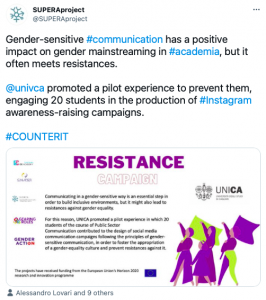
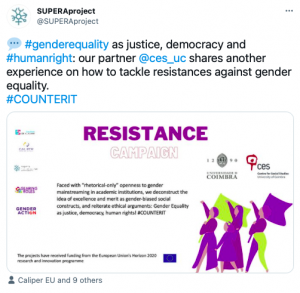
Some of the tweets published on the SUPERA’s account
We want to say THANK YOU! to all the people, networks, organisations and projects that joined us for this campaign. If you missed the campaign, please visit the SUPERA, GEARING Roles, GEAcademy, CALIPER and GENDERACTION Twitter profiles or search the hashtag #COUNTERIT.
The impact of the pandemic on gender equality in Academia: three case studies
On June 9th 2021, the online event “How COVID-19 impacted on gender equality in research and academia” provided the SUPERA core teams from the University of Coimbra, the University of Cagliari and the Complutense University of Madrid with the opportunity to present the preliminary results of three studies on the gendered impact of the pandemic on the academic and research communities.
The research focused on working conditions, time usage and academic production of the academic staff at UC, UNICA and UCM during the COVID-19 health emergency. The reports containing the preliminary results of the surveys have been released between February and March on the SUPERA website: see here for more details.
The official presentation of the research results has been introduced and commented by two components of SUPERA’s international advisory board: Jörg Muller, expert in concepts and methods for researching the impact of gender diversity on research performance (Open University of Catalonia), and Nicole Huyghe, expert in data analytics from a gender perspective, CEO and founder of Boobook.
Mónica Lopes, researcher at the Center for Social Studies, opened the following presentations with the results from the UC; Barbara Barbieri, Associate Professor at the Department of Political and Social Sciences, illustrated the evidences from UNICA; María Bustelo, Associate Professor of Political Science and Public Administration – and SUPERA coordinator -, closed the session with the presentation from UCM.
The slides used during the event are online on Slideshare with a CC Attribution-ShareAlike license:
- University of Coimbra (here a second resource shared);
- University of Cagliari;
- Complutense University of Madrid.
The recording of the event, including the final session with the Q&A by the participants, is available on the SUPERA’s YouTube channel at this link.
The University of Coimbra approved the Plan for Equality, Equity and Diversity 2019-2023
By Mónica Lopes, Universidade de Coimbra
In April 2021, the University of Coimbra approved its Plan for Equality, Equity and Diversity 2019-2023. It was first drafted by the SUPERA team, based on the results of the participatory gender diagnosis, and further harmonised and framed within the wider institutional strategy for Equality, Equity and Diversity, whose principles were recently endorsed by the UC.
The Plan, chronologically aligned with the 2019-2023 UC Strategic Plan, is both a means and a mechanism for its full implementation. It embraces the vision defined in the Strategic Plan’s Citizenship, Equality and Inclusiveness pillar: “promoting active, enlightened, socially responsible and inclusive citizenship, by preserving the right to have rights, respecting dignity, equality and the right to difference, so that all people can reach their full potential, based on a collective formulation of common goals and challenges”.
The UC’s Plan for Equality, Equity and Diversity 2019-2023 is a comprehensive plan, structured around nine strategic objectives, defined to tackle the challenges identified in the baseline assessment:
- Mitigate horizontal segregation, by promoting the integration of women and men in scientific/study areas in which they are underrepresented;
- Combat vertical segregation, by removing institutional barriers to career progression and support professional development;
- Improve the conciliation and balance between work/study and personal/family life;
- Ensure inclusivity in the governing bodies;
- Integrate equality, equity and diversity into the University´s structures and policies, ensuring the sustainability of proposed actions;
- Integrate a gender perspective and the principles of equality, equity and diversity into all scientific areas, educational and research contents, as a component of academic excellence;
- Raise awareness of equality, equity and diversity in the academic community;
- Promote inclusion and minorities’ protection policies, prevent discrimination and combat harassment and violence at all levels (sexual, sexist and moral);
- Deepen citizenship and equality, by continuously implementing improvement measures.
Each strategic objective is broken down into specific objectives operationalised into 56 measures and initiatives in the action plan, which incorporates different types of activities – data collection and analysis, awareness-raising, capacity-building, and transforming structures and processes. Each strategic objective is associated with a set of measurable goals, representing the expected impacts. Regular monitoring of the Plan’s actions and objectives will be aligned with the monitoring of the UC´s Strategic Plan, and materialised by the assessment of the degree of implementation of activities and the analysis of the outcomes achieved in the corresponding key performance indicators.
Recognising the quality of the UC’s Plan for Equality, Equity and Diversity, the Portuguese Secretary of State for Citizenship and Equality, Rosa Monteiro, publicly highlighted it as an example to be followed by other Higher Education Institutions: “The first Plan for Equality at the University of Coimbra. This is how an equality plan should be designed. (…) Well-defined areas and objectives, goals to be met based on clearly stated indicators. A model to be adopted by other plans.” Source: Rosa Monteiro’s Facebook profile
The first Equality Plan of the University of Coimbra is an important milestone in the pathway and commitment to promoting equality in the institution, standing in line with its values, and proactively acting to include its principles in the University´s policies, processes and practices. This commitment results from a perspective of social responsibility, and a commitment to make the most of the privileged role of the University, as an entity which produces and conveys knowledge, in the promotion of a social environment characterized by substantive equality between men and women.
The English version of the Plan is available at this link.
“Don’t assume. Just ask”: a CEU’s awareness raising campaign on pronouns
“Don’t assume. Just ask”. It’s not possible to guess someone’s gender identity from the way they appear; the way people communicate is crucial to ensure that nobody feels alienated or discriminated against. This is particularly important in the academic environment, where students, researchers and administrative staff contribute daily to the advancement of knowledge and claim the right to work and study in an inclusive and non-discriminating environment.
For this reason, our partner CEU (Central European University) has recently launched an awareness raising campaign to sensitise the community on the importance of the use of pronouns in daily communication. Indeed, everyone uses pronouns based on their gender identity: the use of the correct ones is the most respectful way to communicate and refer to people.
CEU has promoted 9 best practices following the “Ideas for Getting Pronouns Right” published at the University of Warwick.
The advice to use the pronouns “they/them” until someone’s pronouns are known opens the list, followed by other recommendations based on the principles of a respectful and inclusive communication:
- When you introduce someone use their pronouns in order to help others to learn them;
- Listen to how people speak about themselves;
- If someone uses the wrong pronouns for another person who is not present, gently correcting the mistake;
- Consider wearing a badge with your pronouns;
- Include your pronouns in your email signature;
- If you don’t know, just ask “What pronouns do you use?”;
- If you get wrong with someone’s pronouns, simply apologise and correct yourself;
- People’s names and pronouns are not to be questioned but respected: make no personal or invasive questions.
Download the best practices and the poster of the initiative and share them with your friends and colleagues: help us to spread the word and sensitise people on the right way to use pronouns in order to ensure inclusion and respect of diversity in daily communication.
CEU’s awareness campaign is fully in line with the SUPERA’s principles of gender equality beyond the male-female binary, and with the advice illustrated in the “Gender-sensitive communication guidelines in research and academia” developed as a project deliverable and available at this link.
COVID-19 impact on gender equality in academia: on 9/06 an online event to present the surveys’ results
Photo by Standsome Worklifestyle, Unsplash
On June 9, 2021 from 4.00 to 5.30 pm CET, the SUPERA core teams from the University of Coimbra, the University of Cagliari and the Complutense University of Madrid will present the results of the study on the gendered impact of COVID-19 carried out in the three respective European universities.
The presentation will be introduced by Jörg Muller, expert in concepts and methods for researching the impact of gender diversity on research performance (Open University of Catalonia), and Nicole Huyghe, an expert in data analytics from a gender perspective (Boobook) will comment on the results; a final session will be devoted to the Q&A by the participants.
The participation to the event is open to everyone but registration is required through the link available here: a Zoom link to join the meeting will be sent a few hours before the start of the event.
For any question or information, please contact us at superaprojectoffice@ucm.es.
Agenda
- Welcome by Lut Mergaert, Yellow Window
- Introduction by Jörg Muller, Universitat Oberta de Catalunya
- Presentations of Results
- CES-UC: Mónica Lopes, researcher at the Center for Social Studies of the University of Coimbra
- UniCA: Barbara Barbieri, Associate Professor at the Department of Political and Social Sciences of the University of Cagliari
- UCM: María Bustelo, Associate Professor of Political Science and Public Administration at the Complutense University of Madrid (UCM)
- Comments on the results by Nicole Huyghe, CEO and founder of Boobook
- Questions & Answers session by participants
- Closing
#COUNTERIT: join the new social media campaign about Resistances
SUPERA, GEARING Roles, GE Academy, CALIPER and GENDERACTION have joined forces to launch the social media campaign #COUNTERIT
Supporting gender equality and efforts towards improving equality are often met with resistances.
They can take many forms: they can consist of a complete denial of the problem, disinterest in the issue, inaction, or even complete ideological opposition. They could be cultural resistances, social resistances, individual, institutional, implicit and explicit.
Throughout the campaign, in order to raise awareness of the topic of resistances and to show how we can counter them, we will be sharing examples of tips and methods that our partners have developed to overcome resistances, both at the individual as well as institutional level.
Share your experience on these resistances between June 21 and 25 on your social media accounts (Facebook, Instagram and Twitter): download the Powerpoint template here or create your graphics.
Tell us in any language about the resistances you have had to face and what did you do to counter them, or what you think we should do as a society to stop them.
Don’t forget to use the hashtag #COUNTERIT and join us!
Psychological dimensions of the impact of Covid-19 emergency
By Cristina Cabras, Silvia De Simone, Barbara Barbieri and Mirian Agus, University of Cagliari
How did the pandemic scenario affect the performance of the academic staff? In order to answer to this question, in the context of the SUPERA project the University of Cagliari developed a survey with the aim to explore the impact of psychological, sociological, economics and communicative dimensions on the productivity of the academic staff during the Covid-19 crisis. This report anticipates the preliminary results concerning the psychological dimensions.
The survey was administered to 968 participants between September and October 2020 with a response rate of about 25%; the participation was completely voluntary, and the questionnaire ensured anonymity. A total of 243 participants (researchers, associate and full professors), 50% men and 50% women, ranging from 30 to 70 years old, completed the questionnaire. Ot them, almost 56% of participants have children.
We investigated the relation among perceived stress, work-family interface, workload, perceveid organizational support, work engagement, workplace social isolation, scientific productivity and satisfaction. To measure these variables, we administered standardized scales.
Multivariate analysis
We performed the multivariate analysis of variance (MANOVA) to determine if there were significant differences between gender, academic position, presence/absence of children, scientific productivity and productivity satisfaction on the variables studied. The multivariate analysis of variance has age as a covariate.
While the results show a significant effect regarding gender, academic position, presence/absence children, productivity satisfaction, no significant effect was found on scientific productivity.
The results show that women feel more negative stress. A possible interpretation is that they feel to have less control over the most important aspects of their life and also to face too many difficulties in working environments.
Moreover, women perceive greater organizational support. In other words, they feel that their contributions and their efforts are appreciated, believing that the organization cares about their well-being and their job satisfaction. In addition to that, we found a significant effect regarding the academic position in relation to the negative interface of the family at work. In particular, the results show that full and associate professors have the highest levels of negative interface from family to work. This could mean that they have more problems with family interference in carrying out work assignments. In contrast, researchers hired on temporary contracts have the lowest levels of interference from family to work. The results show the highest levels of workload for associate and full professors: they are frequently asked to work hard and fast. On the other hand, researchers hired on temporary contracts have fewer workloads: this could mean that, compared to the other roles, they perceive a greater usefulness of their job duties and perceive they have less workload in terms of quality and quantity.
The presence of children is associated with higher levels of negative interference from work to family. It’s likely that those who have children have more negative relationships between work and family. Moreover, the presence of children is associated with higher levels of negative interference from family to work: those who have children have more negative interactions between family and work.
Finally, the results show that high levels of productivity satisfaction are associated with positive interference from work to family. It could mean that those with high satisfaction have positive experiences of interference from work to family.
Regression model
In order to test the role of the different dimensions of the work-family interface, workload and perceived organizational support on positive and negative perceived stress, productivity and productivity satisfaction, four regressions were conducted.
The regression models considered as dependent variables respectively: positive stress, negative stress, scientific productivity and satisfaction productivity; while as independent variables we have two blocks: workload and perceived organizational support, the four work-family interface dimensions.
Three models were significant, while the regression model of the scientific productivity variable did not show significant results.
The first regression model (dependent variable: Positive Perceived Stress) explains 6.3% of the variance, the second regression model (dependent variable: Negative Perceived Stress) explains 20% of the variance, and the third regression model (dependent variable: productivity satisfaction) explains 18% of the variance; instead, the four regression model (dependent variable: scientific productivity) did not show significant results.
Specifically, the results of the first regression show that only the positive work-to-family spillover is predictive of the positive perceived stress; there is therefore a positive association between the positive perception of stress and the positive work-to-family direction.
The results of the second regression show three predictors with a significant influence on the negative perceived stress. In particular, the data show a negative relationship between age and the negative perceived stress, between the positive work-to-family spillover and the negative perceived stress, while there is a positive relationship between the negative work-to-family spillover and the negative perceived stress.
Finally, there are two predictors for the productivity satisfaction dimension. The data show a positive relationship between positive work-to-family spillover and productivity satisfaction, while there is a negative relationship between the negative family-to-work spillover and productivity satisfaction.
SUMMARY
- Women feel more negative stress, even though at the same time they feel more supported by their own organization.
- Full professors and associate professors are those who perceive the most workload and who perceive a conflict between the family and work domains with the family that negatively interfere with work.
- Parents experience more negative stress than non-parents, but they feel more supported by the organization and experience more negative work-to-family and family-to-work spillover.
- Positive stress is more associated with positive work-to-family spillover.
- Negative stress is more associated with age (with increasing age, negative stress decreases) and with positive and negative work-to-family spillover.
- Satisfaction with scientific productivity is mostly associated to a positive work-to-family spillover and to negative family-to-work spillover.
- Scientific productivity is not explained by the dimensions analyzed in this study.
What has the covid crisis meant for the academic world?
By Paula de Dios Ruiz and Lorena Pajares Sánchez, Universidad Complutense de Madrid
On Friday 5th of February, the UCM organised the online presentation act “Gender Impact of COVID-19” in which the UCM – SUPERA Team presented the results of the study done on working conditions, use of time and academic performance during the Covid-19 crisis among the academic staff of the UCM (PDI). Study that was carried out in June 2020, just after the hardest months of confinement and the State of Alarm in our country.
The event counted with the participation of Eva Alcón, Rector of the Jaume I University and Delegate of the Presidency for Equality Policies of the CRUE (Spanish Universities Rectors’ Conference); Magdalena Suárez Ojeda, Director of the Equality Unit at the UCM; and María Bustelo, Coordinator of the SUPERA project. Moreover, around 120 participants attended the event and enriched the discussion with questions and comments about the results. The recording of the event can be found at the UCM – SUPERA website, here.
The UCM – SUPERA Team has also systematised and described all the results of the study in a report, divided in 5 chapters following the surveys’ structure:
1. Academic and sociodemographic variables;
2. Working conditions;
3. Scientific production;
4. Uses of time and perception of efficacy;
5. Institutional support.
One of the main findings to be highlighted is that significant differences between men and women appear in the answers of all chapters of the questionnaire. They reflect the presence of structural gender inequalities that perpetuates the traditional gender roles and stereotypes in academia, which seem to have been aggravated during the confinement and lockdown, as shown in the examples hereafter.
Significant differences are found already when looking into the sociodemographic variables of the UCM’s faculty staff, especially regarding family units, where it is identified that more women than men live with children under 18 years old and that the units with a single adult living with children are mostly headed by women.
As regards the working conditions, female faculty have worse material working conditions than their male colleagues, shown by the fact that fewer women than men have good computer equipment and a working room for their own.
Related to the distribution of reproductive works, women from the PDI of the UCM express to have dedicated more time than men to care and domestic work during confinement, with differences as relevant as 3 more hours per week on average dedicated to housework and cleaning, or caring for minor children. Moreover, it has come to light that the female faculty of the UCM have had less time available for rest, leisure and personal development.
If we focus on the scientific production, male PDI have been working and sending to publish more than the female PDI, with a clear difference in the production of articles for peer-reviewed journals. Analysing the perception of time dedicated to the different tasks of academic work, it can be highlighted that men dedicate more hours per week to writing papers, articles and books, while women dedicate more hours to preparing and teaching classes and exams and attending students.
These are just a few examples of the inequalities yielded by the study, but the overall results clearly outline the underlying academic profile of a successful scientific person: someone who has an exclusive dedication to scientific production, many hours a week invested in research activities and with less dedication to reproductive and care work. Not only at home but also at the university, care works seem to be a female responsibility, where there are tasks which are not recognised and valued on the career’s development criteria, such as preparing lessons or attending students, and those are tasks mainly done by women.
The results must motivate us to continue working on gender equality at the UCM. For this reason, the report ends with a section of recommendations, which is considered a starting point from which to continue designing and proposing measures for the UCM’s GEP, as well as to continue working on the training and capacity building for the promotion of the implementation at all levels and departments of the gender mainstreaming strategy.
The report is available in English and Spanish:
Desigualdades al descubierto en la universidad por la crisis de la COVID-19
Inequalities exposed at the university by the COVID-19 crisis
XI European Conference on Gender Equality in Higher Education: save the date!
The Women and Science Unit of the Spanish Ministry of Science and Innovation and the Ministry of Universities, in cooperation with the Universidad Politécnica de Madrid (UPM), the Spanish Institute of Women, and the Spanish Foundation for Science and Technology (FECYT), are pleased to invite you to the 2021 Conference on Gender Equality in Higher Education: https://www.genderequalityconference2021.com/
The European Conference Gender Equality in Higher Education (GEHE) is an academic forum to communicate new research and analysis on gender and science. These conferences also welcome presentations on the development of gender equality policies as well as on the implementation of gender equality plans in research performing organizations (RPOs) and research funding organizations (RFOs). The topics of the Conference that include a new thematic area on gender, science and COVID-19.
The 11th edition of GEHE was planned to be hosted by the UPM, Madrid, in September 2020 but the pandemic led to postpone the event. The Conference will be online from the 15th to the 17th of September 2021. More than 200 abstracts were already received and evaluated by our international scientific committee last year.
The online edition will include different activities:
- Plenary conferences by main speakers.
- Oral communications in parallel sessions.
- Symposia/workshops.
- High-level panel as closing event at ETSI Industriales –UPM (live streaming).
- Online networking activities.
Follow the news on #GEHE2021 in the webpage: https://www.genderequalityconference2021.com
Advancing in gender equality in Spain: the State Research Agency approves its first Gender Equality Plan
By Zulema Altamirano (Women and Science Unit, Ministry of Science and Innovation), Ángela Martínez-Carrasco (Spanish Foundation for Science and Technology), Victoria Ley (State Research Agency). Ph: Daniel Sone, Unsplash
In January 2021, the Governing Board of the State Research Agency of Spain (Agencia Estatal de Investigación- AEI) approved its first Gender Equality Plan (GEP) 2021-2023. As part of SUPERA, the GEP has been developed by the Strategic Group on Gender Equality (GEI-AEI), supported by the Women and Science Unit (UMyC) of the Spanish Ministry of Science and Innovation, one of the partners of our project. The GEP represents an effort to systematise and advance in the equality strategies and measures committed to in the Roadmap for the Development of the European Research Area in Spain 2016-2020, while integrating the measures already implemented by the AEI in its calls for proposals.
The GEP design is oriented towards the identification of needs and the implementation of measures to promote effective equality between women and men in R&I funding activities, which is the main mission of the AEI. The GEP includes objectives, specific measures and corrective actions, as well as the timetable for their implementation, which show the commitment of the AEI to promote effective equality between women and men in R&I activities.
Specifically, the objectives of the AEI with the implementation of this plan are:
- To reduce inequality and under-representation of women in leadership, visibility, recognition and presence in positions of high responsibility in the R&I system, particularly significant in some scientific-technical areas.
- To mitigate the consequences of possible interruptions in research activity due to maternity and caregiving, especially by young women researchers.
- To promote the balanced presence of men and women in decision-making bodies and processes related to the evaluation and funding of R&I activities.
- To incorporate sex and gender variables in proposals and to strength gender perspective in evaluation and monitoring processes.
- To promote the careers of women researchers, by supporting the balanced presence of women in all activities arising from their research activity, including the leadership as Principal Investigators or their participation in evaluation bodies and processes.
- To consolidate an organisational culture in the R&I system that is sensitive to gender equality and intolerant of discrimination and harassment based on gender, gender identity or orientation.
To achieve these objectives, the GEP includes, among others, the following measures:
- To publish a report after the main award resolutions with sex-disaggregated data of the funding actions, among other indicators.
- To analyse the success rate inequalities in the calls for proposals, identifying the possible causes and designing measures to reduce them.
- To analyse the application and distribution by sex of the measures designed to mitigate interruptions in the research activity.
- To design actions and training materials on gender equality and gender bias in evaluation for the staff of the AEI, the technical commissions and the evaluators.
- To promote gender balance in the selection of evaluators.
The GEI-AEI will collaborate with the UMyC and the SUPERA project in the implementation of the measures included in this plan. In 2023, the GEI-AEI will carry out an independent evaluation of the impact of the GEP measures adopted, as well as additional measures carried out during the implementation period.
The AEI’s GEP is available in English at this link and in Spanish at this link.
Gender-sensitive communication on social media, in practice: a pilot experience at UNICA
By Manuela Aru and Alessandro Lovari, University of Cagliari
“A challenging, but definitely inspiring and stimulating experience. Every step of the process was fundamental: from the study of the materials to the design of every single part of the communication campaign”.
With these words, a student of the course of Public Sector Communication at the University of Cagliari described the experience in which she has been involved with other 19 students in January-February 2021: a role-play activity in which the students had to act like a real communication agency, with the goal to design communication campaigns on Instagram, following the principles of gender-sensitive communication.
The initiative, designed and developed by Alessandro Lovari, Manuela Aru and Maria Antonietta Tolu (Department of Political and Social Sciences), has been promoted with the aim to foster the mainstreaming of a gender-equality culture within the students community and to put in practice the concepts highlighted by the gender-sensitive guidelines developed in SUPERA. In UNICA, the gender equality plan (GEP) can be conceived as an open laboratory, that may host pilot activities directly involving the different parts of the university community.
While the general goal of this pilot initiative was the engagement of the student’s community on the topics of equality and inclusion in academia, one of the specific objectives was to guide the students among the four steps of the design and implementation of an institutional social media communication campaign:
1) research and analysis of the context and the target groups;
2) remote brainstorming sessions to understand and analyse the proposed topics and key messages;
3) design and creation of gender-sensitive graphics and texts;
4) publication of the contents on Instagram, following an editorial calendar.
The final results can be described as effective, impactful and surprising, especially in terms of visual identity (the way you shape perception and create an impression through the values communicated by the graphics), tone of voice (the way students have decided to communicate the messages) and coherence between the general strategy and the objectives.
Effective – Although free of a previous knowledge or experience in the field of gender-sensitive communication, the students managed to adopt a perspective free of unconscious biases.
How shall we represent the impact of gender stereotypes on academic career? “No common metaphors: let’s pick the image of the domino effect”
What visual images can we use to describe the gender inequalities? “Not only ladders: what about depicting two funambulists linked each other by a rope, or two people together on a swing?”
A wide range of original representations have been chosen, from comic strips to statistics and graphs: an innovative and effective way to understand and describe gender-related issues to the wider public of the University community.

Campaigns by Adelaide Fois, Luca Scintu, Marta Rachele Pusceddu, Riccardo Ansaldi, Elisa Frongia, Dario Fonnesu, Simone Pucci and Davide Caboni
Impactful – One of the most relevant outcomes one could highlight is the care devoted by the students to inclusion and gender-sensitivity both on texts and visuals. The thing that mainly drew our attention and curiosity has been the great variety of the visuals used to depict the different moments of the academic life. Books as big as houses, people with blue skin, paths made of words, non-binary people with rainbow hair: an impactful representation of the concept of inclusion.

Campaigns by Michela Locci, Valentina Demurtas, Sara Mandis Pusceddu, Francesca Delepierre, Adelaide Fois, Luca Scintu, Marta Rachele Pusceddu, Riccardo Ansaldi, Laura Spissu, Silvia Uccheddu, Michela Vargiu and Giangabriele Tortora
Surprising – The use of Instagram could be considered an ordinary, daily and common task by 19-24 years old students; but it may still provide an effective way to get these students feel free to express their imagination and creativity. Indeed, Instagram includes text, video and pictures, with the possibility to create engagement with polls, question’s boxes, Stories and live streaming.
The most surprising detail concerns the capacity – and the courage – of the students to put themselves out there to create contents, express an opinion and talk about difficult topics such as gender-based violence, sexual harassment and mobbing with empathy and care. They created contents using the most powerful Instagram tools as the Stories (contents that disappear after 24 hours), the IGTV (longer videos used to create more compelling contents) and Reels (a new instrument to record and edit 15-seconds videos with music and effects). They always kept their language clear, as required by a public sector organisation, and respectful of all the differences and needs, in the effort to adopt an intersectional perspective.
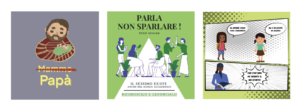
Campaigns by Michela Locci, Valentina Demurtas, Sara Mandis Pusceddu, Francesca Delepierre, Lara Sciola, Marta Lilliu, Alessandro Useli and Alessandro Marras
It is important to highlight that the use of this uncommon approach by the students required an intense preliminary study: indeed, the first step of this project, according to the goals of the course, was the study of the key concepts of public sector communication and gender communication, and the analysis of different communication campaigns on gender topics released in Italy and Europe in the last few years. This preliminary work aimed at developing the ability to distinguish good and bad communication practices in the development of a campaign.
The study of the SUPERA communication plan provided a structure to the work projects: each group chose six of the SUPERA key messages – targeting the students communities – and developed six Instagram posts, with original graphics and captions. The analysis of the gender-sensitive communication guidelines produced by SUPERA has also been essential to guide the students through the values and the standards of gender-sensitive communication.
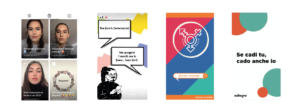
Campaigns by Laura Spissu, Silvia Uccheddu, Michela Vargiu, Giangabriele Tortora, Adelaide Fois, Luca Scintu, Marta Rachele Pusceddu, Riccardo Ansaldi, Lara Sciola, Marta Lilliu, Alessandro Useli and Alessandro Marras, Elisa Frongia, Dario Fonnesu, Simone Pucci and Davide Caboni
Each project was presented via Zoom to a committee of researchers and professionals in the fields of public and gender-sensitive communication who expressed its opinions and points of view on each work group, creating an inspiring moment of exchange and knowledge sharing. The committee was composed by a representation of the SUPERA team at UNICA and by a specialist in the public sector communication field, Franca Faccioli, Professor at the University of Rome – Sapienza.
We can definitely say it: the students of UNICA won this challenge! Great job!

Fighting gender-based violence in research and academia: the UniSAFE project
By the UniSAFE Consortium
Gender-based violence is a pervasive global problem, and the context of research and higher education is no exception. Despite the scale and the social, economic and health costs of gender-based violence, it remains largely under-reported and under-researched.
Funded under the EU’s Horizon 2020 programme, the UniSAFE project aims to produce better knowledge on gender-based violence (GBV) in research organisations and to translate this knowledge into operational tools for higher education, research organisations and policymakers. Launched in February 2021, UniSAFE will run for three years.
The project explores the mechanisms of GBV, its social determinants, antecedents and consequences, by developing an ambitious multi-level research design and a holistic 7P model, to collect, analyse, synthesise and compare qualitative and quantitative evidence at three levels:
- Prevalence and impacts of GBV will be analysed via data gathered by a survey among 45 research performing organisations and by a Europe-wide survey of mobile researchers (micro level).
- Organisational responses and infrastructure will be investigated via data gathered by in-depth case studies, interviews, and strategic mapping of research organisations in 15 member states (meso-level).
- Legal and policy frameworks will be examined through extensive mapping by national experts in the 27 European member states and 3 associated countries (macro-level).
The 7P research model employed at UniSAFE covers Prevalence, Prevention, Protection, Prosecution, Provision of services, Partnerships and Policy. This holistic approach is better equipped to collect comprehensive data, analyse their relation, and translate findings into operational tools than the conventional 3P model (Prevention, Protection, Prosecution) or the Istanbul Convention 4P model (3P and Policy).
UniSAFE is designed to achieve its results through research, education and outreach activities involving researchers, stakeholders and policymakers across Europe. As a result of the multi-field design, the project will provide in-depth knowledge of existing problems on the one hand, and current and future priorities on the other. Its outcomes will include:
- A better understanding of GBV in European universities and research organisations and its impact on people, organisations and society.
- Effective policies and measures implemented at universities and research organisations.
- Increased capacity of students and staff to address GBV.
- A toolkit and recommendations to reduce GBV in academic environments and research workplaces in Europe.
UniSAFE relies on a highly qualified and multi-disciplinary consortium, with a strong record on research, the law and policies to combat gender-based violence in the EU field of academia and research. Two of SUPERA’s partners are part of the UniSAFE consortium: the Complutense University of Madrid and Yellow Window.
The unequal effects of the Covid-19 pandemic on Portuguese women academics
By Filipa Marques, Sofia Miguel (NOVA University Lisbon) Mónica Lopes (University of Coimbra)
The COVID-19 has caused substantial disruptions to academic activities:
- Working parents have to balance their time between academic responsibilities, childcare and domestic tasks;
- Professors have to ensure online lectures for their students, sometimes using pre-recorded lessons, in order to mitigate the distance;
- Researchers have to adapt to a new reality, which constrains the lab work to a minimum.
The general impact of confinement measures in the academic performance of professors and researchers has been a subject of interest, mainly because most of working professors and researchers are also parents, some with young children in their care. It is a matter of public discussion that COVID-19 is having an uneven influence with those with child/adult care responsibilities – particularly women. Female professors and researchers have been facing more difficulties to publish their research due to the confinement caused by COVID-19, according to data that show that women’s publishing success dropped after schools closed [1, 2]. A recent study indicates a sharp decrease in original research-papers submissions by female researchers in several international journals, during confinement caused by COVID-19 [3]. As the novel virus reveals an endeavour to researchers in the medical and health sciences disciplines, the proportion of published papers in such fields dramatically increased to promptly allow results dissemination. In this regard, female publication success during this period should have increased, not decreased, since women have been increasing their representativeness in these fields [4, 5]. This fact illustrates the confinement effect on women’s publication records and at the preprint and journal submission stages.
In Portugal, COVID-19 has affected professors and researchers similarly, as in other countries, facing the same challenges. Aware of this, SPEAR partner, NOVA University Lisbon, has been laying foundations towards a more equal-opportunities-academic environment that aims to implement gender-sensitive policies and help reduce the institutional gender gap.
The data on the effects of COVID-19 in female academics are still scarce. However, there are two research projects ongoing, specifically devoted to exploring the effects of the pandemic at the national level. The only empirical research already documenting the impact of COVID-19 in the work conditions and academic performance of women in Portuguese research institutions has been carried out by the University of Coimbra, within the framework of the SUPERA project. Based on a survey questionnaire of teaching and research staff, the findings shed light on gender inequalities that are shaping COVID’s impact on working conditions, work-life balance, and academic time usage and efficacy. It has been particularly more difficult to academic women, especially younger mothers in non-tenure-track positions.
In Portugal, academic women seem to be more exposed to not only the severity of psychological/emotional effects of the COVID-19 crisis but also to the increased burden of domestic and care duties during confinement. Moreover, the pandemic appears to affect disproportionately the housework and care routines of women (especially younger academic mothers), as well as the personal routines of female academics, who reported more often a reduction of leisure time during the lockdown.
The increased household and emotional burdens arising from COVID restrictions also affect the work-family negotiations and conflicts, posing differentiated challenges to reconcile the competing time demands of paid work and family. Substantial differences are observed between men and women perceptions of how the pandemic has affected their work. Female academics and academics with young children in the household most frequently emphasise the influence of COVID-19 on the amount of time dedicated to professional work. Moreover, when analysing the changes on time allocation to the various domains of the academic activity, one can observe that the reinforcement of teaching and administrative tasks during the confinement is specially bound to female dedication. In the case of young mothers, the priority given to teaching occurs at the expense of research activities (e.g., manuscript and grant writing, peer review and serving on funding panels) which are critical to career progression.
The study also gives important insights on the extent to which the distinctive burdens imposed by the lockdown to female scientists and scientists with young children impacted academic productivity. Nevertheless, it is too early to get a complete picture of this impact, as the lockdown period has been relatively short compared to normative research timelines. The outputs considered to explore the effects of the pandemic in academic productivity were mainly of scientific character but also connected to pedagogical activities, knowledge transfer and dissemination. When solely considered, neither gender nor parental status significantly affected the changes in academic output observed during the “stay home order”. Nonetheless, when considered in combination, gender and parental status displayed a significant influence in the differences observed between the pre-pandemic and pandemic period, placing female scientists with children up to 12 in a particular disadvantage.
Moreover, women without children and men with and without children have increased their output submission during the confinement, whereas younger academic mothers faced an inverse trend. This difference may further aggravate the gap between men and women, as said institutions have an increasingly research-oriented strategy. This may translate into a significant disproportion of the performance management policies regarding tenure, recognition and promotion since most academic careers evolve directly from strong publication records and academic performance [6].
Although limited in scale and scope, this study provides sound quantitative evidence highlighting gender disparities in how the pandemic has affected the scientific workforce in Portugal. Academic institutions and funding organisations should consider the inequalities regarding not only academic productivity but also material and non-material working conditions to put in place some measures. The metrics to assess funding and academic position applications rely on bibliometric indicators that tend to be unidimensional. Therefore, a requirement for academic assessment and monitoring should include institutional measures to promote career development and talent retention, a more diverse and inclusive working environment, and family-friendly policies. These would be important to provide resources for early-career academics, particularly women with young children, to attenuate the negative effects of academic productivity resulting from the COVID-19 pandemic.
This article is the result of a joint initiative among the H2020 sister projects SPEAR and SUPERA and has been published also on the SPEAR website.
XI European Conference on Gender Equality in Higher Education: call for abstracts
The Women and Science Unit of the Spanish Ministry of Science and Innovation and the Ministry of Universities in cooperation with the Technical University of Madrid (UPM) and the Spanish Foundation for Science and Technology (FECYT) are pleased to announce a new call for abstracts for the 2021 Conference on Gender Equality in Higher Education:
https://www.genderequalityconference2021.com/call-for-abstracts/
More than 200 abstracts already received and evaluated in 2020
New deadline for abstracts submission: 24th of March, 2021
See the topics of the Conference that include a new thematic area on gender, science and COVID-19
The European Conference Gender Equality in Higher Education (GEHE) is an academic forum to communicate new research and analysis on gender and science. These conferences also welcome presentations on the development of gender equality policies as well as on the implementation of gender equality plans in research performing organizations (RPOs) and research funding organizations (RFOs).
The 11th edition of GEHE was planned to be hosted by the UPM, Madrid, in September 2020 but the pandemic led to postpone the event. The Conference will be online from the 15th to the 17th of September 2021. More than 200 abstracts were already received and evaluated by our international scientific committee last year. The aim of this new call for abstracts is to give the opportunity to present new research, analysis and experiences from the gender and science community across Europe.
The online edition will include different activities:
- Plenary conferences by main speakers.
- Oral communications in parallel sessions.
- Symposia/workshops.
- High-level panel as closing event at ETSI Industriales –UPM (live streaming).
- Online networking activities.
Follow the news on #GEHE2021 in the webpage: https://www.genderequalityconference2021.com
Gender equality in funding mechanisms: a new webinar for RFOs on 26 January
Among RFOs, there is an increasing interest in the design and implementation of measures to improve the impact of their funding schemes on gender equality. With this regard, SUPERA has launched a series of webinars and online workshops to facilitate experience exchanges between Research Funding Organisations (RFOs) that develop – or plan to develop – a Gender Equality policy. After the first two events that took place in November 2020, a new webinar is planned for Tuesday, the 26th of January 2021 (h. 11-12:30 CET): “Gender equality in funding mechanisms“.
During the webinar, participants will have the possibility to listen to two experiences of Gender Equality Policies and measures with regard to funding research. Both experiences are from Spain, a country that has been a pioneer in the EU to develop gender equality measures.
The first experience is from the regional Government of Navarra. Juan Cruz Cigudosa García, Counsellor for the area of University, Innovation and Digital Transformation, will share the experience of the Government in using their funding mechanisms to improve the gender balance in research teams, as well as in including gender in the research content of the proposals.
The second is from the State Research Agency active at national level, directly linked to the Ministry of Science and Innovation. This agency recently approved a Gender Equality Plan. Victoria Ley, Head of the evaluation and monitoring department, will share the content of the GEP as well as the context and process to get it approved.
The second part of the webinar will be devoted to questions and answers and exchanges with the participants.
The participation to the webinar is open to everyone; prior registration is required via the online registration form.
In support of gender rights and academic freedoms: our solidarity statement
By the SUPERA Consortium
We, members of the EU-funded SUPERA initiative, express our deepest concern for the reiterated and coordinated attacks on gender rights and academic freedoms in several EU member States such as Hungary, Poland or Romania, and our most resolute support to those who, from the civil society or the institutions, defend the values of gender equality and non- discrimination and the rule of Law enshrined in EU treaties.
We manifest our strongest solidarity with women-led strikes in Poland and our firmest contempt for the attempts to undermine gender equality, gender rights – including the rights of LGBTQ persons and sexual and reproductive rights, as well as free speech and the freedom of research at universities in any member state of the European Union and beyond.
Those rights and freedoms are fundamental to open, democratic and diverse societies, and should be firmly defended wherever threatened.
Read and download the solidarity statement.
The Central European University GEP now available for download
In May 2020, the Central European University has approved its first gender equality plan. Now the full document is fully available at this link.
Read the interview to Andrea Krizsan, research fellow at CEU’s Center for Policy Studies and Ana Belen Amil, gender equality officer at CEU, about the GEP approval: https://www.superaproject.eu/ceu_gep/
Join us! The institutional SUPERA video is online
By Manuela Aru and Paola Carboni, University of Cagliari
The SUPERA values, methods and key action areas to foster gender equality in research organisations can now be presented in a new format to anyone interested in knowing more about gender mainstreaming in Academia: the SUPERA institutional video is online!
This project outcome is the result of an intense work that involved all the partners in exchanges and interaction to define the creative concept and the best way to communicate it: from the voiceover to the selection of images, and to the translation of the subtitles. It is worth noting that the Cagliari-based team who implemented the video (editing, illustrations, animations, production) it is totally composed by female professionals.
At first, we had planned to develop the institutional video by making interviews to key actors during the Consortium Meeting that was meant to be held in Cagliari las June. Due to the spread of the Covid-19 crisis, the whole event was held on Zoom. For this reason, we had to radically rethink the initial concept. The new idea was to be developed completely in a distance-mode, without the chance to film or interview tany of the key people we had in mind. The new video concept is based on the animation of photographs and original graphics, created to represent and communicate gender inequalities and our actions to fight them.
A special attention was devoted to adotp a gender-sensitive, non-stereotypical and inclusive communication register. The video will be available soon with subtitles in English, Italian, Portuguese and Spanish.
For the first European Gender Equality Week on October 26-29, we started a communication campaign marked by the hashtag #JoinUs, representing an invitation to all the people interested in engaging with our initiatives toward gender equality and social justice in research and academia. The #JoinUs campaign is now live on SUPERA social media channels and several European institutional accounts are sharing it.
Watch the video and follow the #JoinUs campaign on Facebook, Instagram, Twitter and Youtube: two short videos will be released in the next days!
Experience exchange between Research Funding Organisations: register to the webinars
Among RFOs, there is an increasing interest on the design and implementation of measures to improve the impact of their funding schemes on gender equality. Sometimes these measures may take the form of a Gender Equality Plan, or of a policy, or other individual measures.
SUPERA is launching a series of webinars and online workshops to facilitate experience exchanges between Research Funding Organisations (RFOs) that develop – or plan to develop – a Gender Equality policy.
The first two webinars will take place on 13 and 18 November, 2020. Each webinar has a 90 minute duration and starts with two RFOs that explain their experience linked to the theme of the webinar. This is followed by a 40-minute Q&A and exchanges with the audience.
Webinar #1 – 13 November 2020 from 10:00 to 11:30 am CET
“Gender Equality in RFOs, two experiences”
Experiences from the Autonomous Region of Sardinia (RAS) and the Vienna Science and Technology Fund (WWTF) on the steps in developing a comprehensive policy.
Click here for the registration form.
Webinar #2 – 18 November 2020 from 10:00 to 11:30 am CET
“How can RFOs fight gender bias”
Experiences from French Agence Nationale de la Recherche (ANR) and the Technology Agency of the Czech Republic (TA CR) on measures to avoid gender bias.
Click here for the registration form.
To complete and enhance these initiatives, Yellow Window developed a tool that brings together resources and examples of measures that RFOs can take (and in several cases are already taking). The tool follows the typical journey or cycle of a call for proposals and is available as a web page at this link and as a board on Miro at this link.
Overcoming gender gaps in research funding organisations: RAS approves its Gender Equality Plan
By Autonomous Region of Sardinia core team
The Regional Programming Centre of the Autonomous Region of Sardinia directly supervises and manages the regional funds for research and innovation. These funds finance basic research projects, young researchers and the investments in support of the innovation system. These functions and responsibilities of the Sardinia Region are carried out on the basis of a specific law, the Regional Law n. 7/2007, in favor of research and innovation, which currently has no any reference to gender policies. Therefore, the objective of the RAS in the activities within SUPERA project has been focused on creating an operational tool aimed at intervening on gender issues in the research field in Sardinia: the Gender Equality Plan (or GEP).
With the goal of building a GEP that could have the most effective impact, RAS started its activities by verifying the possible existence of a gender gap in the provision of resources to support research. The aim was to give indications to the policy maker and to create a favorable environment for the access to resources.
Specifically, this first phase was carried out following three guidelines:
1) ANALYSIS. This step concerns: the reference regulatory framework; the scope of applicability of the gender discipline in the research field; gender differences in the provision of grants for the implementation of research projects.
2) LISTENING. A shared and participatory path has been started among regional stakeholders on gender issues. The goal was to bring together in a hub the internal and external stakeholders, capable of providing data, suggestions and ideas useful for the drafting of the GEP. So far, the following external stakeholders participated in the hub: the Department of General Affairs and Personnel of the Sardinia Region, the agency Sardegna Ricerche, the Regional Councilor for equality, the Regional Commission for equal opportunities, Giulia Giornaliste, Corecom Sardegna, the Equality Councilor of the Metropolitan City of Cagliari and the Formez PA. This phase is dynamic as the hub is always open to the adhesions of new members. The stakeholders will support the GEP throughout its implementation phase.
3) OBJECTIVES. The definition of the objectives of the GEP led to the drafting of the Plan.
The first objective identified by the GEP is to bring about a structural change in the approach to gender issues in the Sardinia Region. Within the actions carried out to achieve this goal, it is important to emphasise the inclusion of the SUPERA principles in the PRS – Piano Regionale di Sviluppo (RDP – Regional Development Plan) 2020-2024. The RDP is the five-year regional planning document that defines the strategies and policies that Sardinia intends to implement over the course of the legislature. Consequently, the inclusion of SUPERA in the Plan represents a clear political commitment on the part of the President of the Region and his Council towards gender policies.
The second objective of the GEP is focused on Regional Law 7/2007 and it is intended to introduce corrective actions aimed at guaranteeing gender equality within the calls for basic research.
The third objective recalls the results of the descriptive analysis and the suggestions of stakeholders within the project hub. In particular, it considers the criticalities of the system of evaluation of research projects, which is not very sensitive to gender issues.
In conclusion, it is emphasised again that the GEP is conceived as a dynamic and constantly evolving tool, which can always lead to positive updates. Its structure has been defined by using the Logical Framework Approach (LFA) and indicates objectives, actions and indicators providing for appropriate actions throughout the life span of SUPERA.
The RAS Gender equality plan is available at this link.
Working conditions, time usage and academic performance in Covid-19 times: preliminary UCM survey results
By Maria Bustelo, Paula de Dios Ruiz and Lorena Pajares – Universidad Complutense de Madrid
As part of the planned work at the SUPERA project, the UCM team had started to design a study on gender roles and academic time usage when the Covid-19 crisis broke out, last March. This initial idea turned into a specific survey of how gender roles apply to situations of lockdown for academics and researchers. In May 2020, a survey on working conditions, academic time usage and academic performance during the Covid-19 crisis was designed, and in June 2020 it was launched at the Complutense University of Madrid with a high response rate: more than 27% of the total Faculty Population, reaching almost 1.600 responses.
The preliminary results are clear in confirming strong gender roles’ segregation in academic time usage & performance, and significant differences between female and male academics in many of the studied variables. Moreover, these differences have aggravated and increased during the pandemic, while in general female faculty have experienced a significantly harder time working remotely during the Spring confinement than their male counterparts.
The presentation shows some preliminary results related to the fact that female faculty staff have experienced a much harder time during the lockdown than their male colleagues. For example, women show significant differences in claiming that they have felt more sadness, preoccupation, anxiety and stress, feeling overwhelmed, and of losing control than men. Also women ranked significantly higher in working at unusual hours, in having difficulties for working without being interrupted, and in using concentrating on work as a way of dealing with the situation. Men claim more than women that they have taken advantage of the lockdown to catch up with academic work.
Differences in time devoted by women and men to care and domestic work have been aggravated during lockdown. Gender roles in academic work are not only confirmed before the pandemic, but also aggravated during lockdown: women claimed to devote more time to class preparation and to students’ attention, and men to writing and sending to publish papers/articles.
Regarding the academic time usage perception, before lockdown females claimed to devote slightly less weekly time than men to academic work (approx. 20 minutes less), but during lockdown figures reversed, claiming women one hour and a half more weekly than men.
Further analyses are being performed by the SUPERA-UCM team, who is also working, along with the Gender Equality Nodes Network at the UCM, on the development of recommendations and proposals for actions to be integrated as part of the upcoming GEP.
Short outline of the first results (presentation on SlideShare).
Video of the presentation of the first survey results, given by Maria Bustelo (Associate professor of Political science and Public administration at UCM and SUPERA Coordinator).
Design, discuss, approve! The path of UNICA towards the GEP publication
By Ester Cois and Luigi Raffo, University of Cagliari. Interview by Paola Carboni
In the meetings of June 29th and 30th, 2020 the Academic Senate and the Board of the University of Cagliari approved the Gender Equality Plan designed in the framework of SUPERA. Now the GEP is available as an open access book at this link. Here’s the main highlights of the process that led to such an important milestone.
The process of design of the UNICA gender equality plan started with a baseline assessment of gender equality within the institution, in early 2019. Can you give us some details of the situation at the time of the assessment?
Since the beginning of the process aimed at involving the University of Cagliari as a whole in the development of its Gender Equality Plan, the UNICA core team has been able to contact all the types of stakeholders at the various levels of the organisation: from the top positions of the administrative structure, up to the teaching and research staff, the technical staff and the wide community of students. Every kind of interaction with the different categories of employees and students at UNICA has provided an opportunity to register many forms of resistance, with respect to the issue of improving gender equality within the organisation, but in general their frequency and tenor have been lower than we initially expected, probably due, above all, to the institutional support formally offered by the University’s governing bodies, on which the SUPERA project has always been able to count, starting from the endorsement expressed by the Rector in all the phases of the work carried on so far. It is therefore important to distinguish between the institutional level and the individual and occasional level: while in the first case there have been no explicit or implicit obstacles to the efficient development of the work conducted by the UNICA Core Team, some resistances have been instead expressed at the level of the single individuals involved in various forms in these early stages of the project.
Specifically, there have been three main relevant touch-points with regard to resistances: the documentary analysis related to the current rules and policies on gender equality in the University of Cagliari (when the administrative and executive officers did not express any form of resistance, rather being fully collaborative and effective in transmitting the requested documents); the collection of quali-quantitative administrative data related to the four thematic key-areas of the baseline assessment (when the staff of the various Departments contacted didn’t expressed as well any kind of resistance, neither explicit nor implicit, showing an excellent collaboration and an enthusiastic attitude to make themselves useful for the completion of the required task); the completion of the qualitative questionnaire on gender equality by the teaching and administrative-technical staff and by the students’ body, which was the only event in which several types of resistances emerged, on the individual level, although we can consider the response rate to the Survey quite satisfactory: respectively 29% of the teaching and administrative staff and 9% of the students.
We do not have enough information to infer that the asymmetry between females and males in the completion of the questionnaire among the students’ body (72% vs 28%) can necessarily identify a gender bias with respect to the interest in this matter. In the same way, it is not possible to surely assume that the distrust towards the anonymity guaranteed by the tool may have played a role in retaining a part of the population contacted to complete the survey (especially in the teaching and technical-administrative staff). From this point of view, we were in fact prepared to distinguish a gender-related resistance to other types of resistance, which in this case could simply be due to the fear of being identified after expressing opinions or declaring personal experiences on sensitive issues. In any case, detecting the resistances has been a useful starting point to understand where and how to focus the actions and strategies necessary to develop an approach as participatory as possible in the co-creation of the GEP, on different levels: in the first instance, starting with the involvement of the Hub as a support, advice and expertise channel within the various areas of UNICA as an institution; secondly, it has been important to correctly identify all types of resistances with respect to the issues related to gender equality, because failing in recognizing these critical nodes could have also blocked the subsequent implementation of the GEP throughout UNICA as an organisation.
So, beside its main goal, the baseline assessment was an interesting moment to understand if and how our institution was able to collect important gender related data, cross information from different database that usually don’t talk to each other. It was not a straightforward procedure, but we obtained the data and now we know how to automate such process.
The GEP design has not been a top-down process, but rather a participative one. Which parts of the university community were involved? Was this a positive experience from your point of view?
The SUPERA core team of UNICA has a quite large size: fifteen people with different background and responsibility. This aspect gave us the opportunity for starting the process internally, but we obtained important inputs from several working groups on specific topics, in the form of four fab labs: two of them involved administrative staff to discuss the issues related to work-life balance, the third involved Ph.D. students to discuss about career progression, and the last one was with assistant professors and dealt with sexual harassment. We preferred fab labs to online platforms as tools to guarantee inclusiveness and maximize the participation of representatives of the whole research and academic community in the decision-making process. We also organised several meetings with the SUPERA Hub, a structure foreseen by the project which, in our case, is composed by 12 people with roles at the top of UNICA organigram. The people we involved represent the complete community of UNICA, though for the next activities we want to enlarge the participation of students, that we involved so far only during the preliminary survey and through their Senate/Board representatives.
Gender-disaggregated data collection and management have the first place among the GEP actions. Can you provide us some examples of what can be achieved if data about staff, students and research products are collected using this method?
The disaggregation of data by gender is a first step to detect, both in terms of snapshot of the current situation and in terms of trends to be monitored for the near future, the persistent asymmetries with respect to career mechanisms in the university, or even with respect to the perception of the perspectives opened by their degree courses by male and female students. Mechanisms that cannot be explained by aggregate numbers.
For example, with regard to the enhancement of the skills acquired in their degree course and the perceived encouragement to undertake a future congruent profession, slight but significant differences persist between male and female students, given that less than 30% of the former declared having perceived a differentiated treatment in this sense compared to 40% of the girls.
What is the purpose of the mentoring activities and why are they important in a GEP?
Mentoring activities by senior colleagues are useful to ensure that junior academics’ personal goals are consistent with the institution’s expectations. Many studies have shown that female researchers are less productive than their male counterparts. For example, for Italy, we suggest to read the article by Marianna Filandri and Silvia Pasqua “Being good isn’t good enough: gender discrimination in Italian academia” (2019).
Quoting their words, “gender differences in publication output could explain the lower percentage of women among associate and full professors in Italian universities. If this were the case, there would be no gender discrimination and policies should be promoted to sustain women’s research activity. A second possible explanation of the gender gap in Italian academia could be women’s reluctance to apply for promotion. Previous literature has shown that women are less self-confident than men and therefore are less likely to apply for high-responsibility jobs and career advancement, and, specifically for academia. Again, if this were the case, we could not claim that gender discrimination exists and policies to sustain female researchers through mentoring should be promoted”. Therefore, the planning within our GEP aimed at supporting female researchers’ careers through mentoring activities, through the identification of peers within all structures, appears as a valid tool to reduce the asymmetry of opportunities that bind women more in reaching top positions.
Family-friendly policies always have a central role in gender-equality policies in the workplace. Which is the situation in UNICA and which further improvements can be achieved with the actions contained in the GEP?
UNICA complies with Italian legislation on compulsory maternity leave and optional leave for biological and adoptive parents (Paternity leave, parental leave, rest for breastfeeding, child sick leave). Detailed information on any type of leave is available at the university website in transparency handbooks, which clarify that after a first period of parental leave (30 days for Admin staff and 45 days for Faculty members) there is a cut in salary, which drops to 30% of the full amount. As confirmed by interviews with the Personnel office and by administrative data at hand, parental leave is not used by Faculty members. In the period under our first review for the baseline assessment report, only 3 women have ever opted for parental leave, and in the same period 29 women (about 7.8% of the total) were absent due to compulsory maternity leave. Among technical and administrative staff there is a higher use of parental leave: about 4% of men and 13% of women used it, and in the same period 27 women (5% of the total) were absent due to compulsory maternity leave.
Since 2015, UNICA is committed to pursuing family-friendly policies, whose direct beneficiaries are students and personnel. We can mention, for example, the Baby-Card (Tessera Baby) and Pink Room (Stanza Rosa) projects that aim to promote study and work-life balance. There is evidence of a gradual but steady process of institutional learning within the domain of family-friendly policies. The ultimate goal of promoting gender equality, both in terms of quality of services offered and quantity of potential beneficiaries involved, can be achieved only through the constant monitoring of the ways in which these practices are implemented. The collection of administrative data about the number of potential beneficiaries, the actual use of the services and the dissemination of transparent information about the services to prospective and current students are essential for estimating the effect of the policy and suggesting further improvements.
During the designing of our GEP, we have explored the individual experiences of work-life balance policies and tools set out by the University for its staff and students. Nearly 70% of staff respondents share household chores and childcare duties with their partner. Among them, the large majority (nearly 70%) said there was a largely unbalanced division of those duties, a result that is in line with a well-known picture of gender asymmetry in the division of household work in Italy, where men’s contributions are among the lowest in Europe. Clearly, there are exceptions to the rule, and changes are evident among younger, better educated generations. Women’s greater family duties and responsibilities explain why female staff say they have turned down more often than their male colleagues an appointment or other professional growth opportunities (22% and 10% respectively).
Among students, 16% of respondents to our preliminary survey said they shared household or family chores with their partner (351 students, of whom 76% females and 24% males). Gender division of household work seems more balanced among these students, perhaps due to their belonging to younger population cohorts, compared with those of staff respondents, responding to social pressure to have greater symmetry in gender and family roles. Less than one out of four students stated they perceived a marked imbalance in the distribution of household chores, with a prevalence of female students (27%) compared to male students (18%). A similar finding also applies to caring for children and other family members, both with regard to the limited percentage of those saying they experience an asymmetry in their distribution on the basis of gender (17% of respondents), and to the gap in this regard between female students (20%) and male students (7%).
One of the main objectives of our GEP is obviously to contribute reducing the initial gaps as much as possible, and to enrich existing strategies to favor work-family reconciliation. Just to mention one of the actions envisaged in this direction, we included in the GEP a support to people returning to work after a leave, aimed at maintaining the career path, through the definition of an internal regulation that establishes dedicated reductions in the workload and specific evaluation criteria (in the case of personnel subject to evaluation) for workers who return to work after the birth or adoption of a child or after a period of illness.
Among the actions of the GEP, training has its place and relevance. Which are the goals of this training that will address decision makers, researchers and students?
The objectives in this area aim at mainstreaming Gender Equality at the institutional level: the inclusion of Gender Equality issues in the organisation structure and in the strategic planning and mission of the University, the implementation of gender-specific measures and practices, and the revision of existing procedures in which Gender Equality issues should be considered. From this point of view, our GEP has identified the need of offering training to the staff in leadership positions, including the training for the mentors. But also training and guidance activities addressed to academic staff and students to deconstruct gender bias and promote a gender inclusive work and study environment; or regular training sessions for research staff to add a gender perspective in their work in any disciplinary field.
Which is the role of gender-sensitive communication in a cultural change for gender equality?
Managing the communication of a research institution is a multi-faceted challenge. Universities are, at the same time, learning environments, places where scientific research takes place and workplaces for large communities of human beings. Teaching, research, outreach, public engagement, fundraising, promoting enrolments, establishing partnerships are only some of the tasks a university must manage according to its mission and values. Nevertheless, universities must act as places where knowledge can be developed and shared at the highest levels, ensuring academic freedom and visibility to all the actors involved, including the less represented within the framework of inclusion, for example because of their gender. In this sense, universities play a fundamental role in communication the importance of the principles of equity, inclusion and enhancement of differences in their messages and organisational behavior. See also the Guidelines for gender-sensitive communication in research and academia, developed within SUPERA.
Can you give us some examples of how an integration of gender contents in research can be performed? And in teaching?
Understanding that any research oriented to people needs or behaviour has a gender dimension is not easy and it is not easy to explain it to people, like researchers, that are rightly proud of their intellectual freedom. The same happens for professors about the freedom of building the syllabus of their courses. Examples can change their point of view, and there are plenty of them, for example in the unsuspected field of Artificial Intelligence. The presence of its results in daily life is pervasive, so there are many examples easy to understand. Since this field is largely dominated by male researchers, even limited changes can have a large impact and can lead to large improvements. With regard to teaching, we decided to work at voluntary level, creating discussion groups for professors interested to give space to gender related dimension in their syllabus, for example with regard to the proportion of female authors mentioned in their bibliographic references.
When can we expect to appreciate the first outcomes of the GEP actions? Which is the timeframe of the initiatives?
Our GEP is composed of 32 actions to be completed before the end of 2024. However, it is foreseen that a large number of these actions will give results already before. In particular several informative events (like courses for PhD students) will be already active from the next year.
The Gender Equality Plan of the University of Cagliari now released in open access
In June 2020, the University of Cagliari has approved its first gender equality plan. Now the full document has been published by UNICApress, the University publishing house, and it’s available online in italian at this link.
Return to “normalcy”? Gender-sensitive policies for institutional change after the Covid-19 crisis
By Francisco Rodrigues, Center for Social Studies – University of Coimbra
The escalation of the COVID-19 crisis into a global pandemic brought about unique set(s) of circumstances and resulted into a period of uncertainty and inconvenience, as the paradigm of social and professional relations quickly shifted.
Much has been written and discussed about the possibilities of accelerating progress on various fronts, by capitalizing on the adaptations and solutions brought about by this new reality. The same logic can be applied to the higher education context and gender equality, by recognizing and understanding the many issues, both new and old, that the current crisis brings (see, for example, Malisch et al, 2020), in order to identify any windows of opportunity that may exist.
Uncertainty, by its essence, raises questions. Combined with inconvenience in the form of loss, harm, or drawbacks, it may become the incentive for the development of answers: solutions towards effectiveness, comfort, productivity and the overall betterment of the situation.
Communication technologies in general, and the Internet in particular, have been instrumental in the development of the current workplace, as their ever-growing ability to communicate instantly, more effectively, and providing tools to solve more complex problems is the defining feature of the present moment in almost every sector of activity. However, there is an inescapable lag between technological development and its widespread use.
Many higher education institutions are clear examples of this, integrating newer technologies at slower paces due to a variety of factors, such as scale – large numbers of staff and students; internal variability – multiple campuses, units, types of staff and areas of activity; non-profit purpose – making funding and liquidity dependent on external sources; and traditional organizational structures – bureaucratic and hierarchical, with multiple governing bodies and levels of autonomy.
E-learning is an interesting example, an area that has been in development and that became mandatory during the pandemic. Since it has not been a priority in many institutions, responses were varied in terms of quickness, quality and sustainability. In general, there seem to be two main takeaways: one negative, as the immediate surge of demand presented issues of inequality and inclusivity beyond the inter-institutional. Within institutions, systems and procedures had to support a much greater variety of student and teacher contexts (gendered family structures and responsibilities, disparate internet access and digital competencies, disabilities and impairments…) at the risk of deepening existing inequalities. One positive, as it highlighted that physical proximity is not a requirement for quality education, as long as teaching and assessment solutions are aptly adapted. Information technologies have been organically gaining ground and have proven to be a powerful tool that can be used strategically to improve the quality, inclusivity and sustainability of the higher education sector.
In tandem, work-life balance provisions, a cornerstone of feminist approaches to gender equality in higher education (and the workplace in general) became a topic of public concern and debate. On one hand, the viability of telework and flexible work schedules for many roles was demonstrated when people were forced to work from home. On the other hand, this was far from an idyllic scenario, as it gave way to generalized negative tendencies (EC, 2020 ; Rodier, 2020) and specific problems, such as the steep decline in the submission of scientific papers by female authors (and sometimes an increase in male authorship), suggesting that the domestic workload became an even greater burden for women, leaving less time for research activities (Vicent-Lamarre, Sugimoto, Larivière, 2020). Once again, this double-edged sword may be positively thrusted, as the discussion on ways to move forward unravels and gains institutional and political traction, with efforts towards swift and effective solutions (Vargas Llave, Weber, 2020).
As a final remark, specifically towards the development of post-COVID gender sensitive policies, it should also be noted that in a return to “normalcy”, the gendered dynamic will not be the same in regards to multiple variables, such as the constant presence of children at home, homeschooling, mental health, free time use. This means measures and strategies developed to take into account the COVID confinement are likely suitable for future scenarios that are not as extreme. Therefore, if upcoming policy changes are done taking into account this experience and gender equality aspects, they may be transformed into opportunities to advance gender mainstreaming, both in the particular effects of the COVID pandemic and transversal issues, making institutions more resilient to future social crises.
Workshop on gender equality plans and structural change in Horizon Europe
By Lucy Ferguson, Workshop Rapporteur
In the last face-to-face event many of us attended before the COVID-19 pandemic was declared, the Directorate-General for Research and Innovation hosted a workshop on “Fostering institutional change through Gender Equality Plans (GEPs) and the way forward towards Horizon Europe” on 4thMarch in Brussels. The workshop was attended by a range of participants involved in structural change projects across the EU, including project coordinators, evaluators and team members, with the aim of strengthening gender equality provisions in the future EU funding programme Horizon Europe, building on a series of co-creation and outcomes of consultation with stakeholders. I would like to take a moment to acknowledge our Italian colleagues who were unable to join in person, and connected from home, in a way that we would all come to know as normal in the months that followed. This article highlights some of the main discussions and recommendations. A full workshop report will also be published by the European Commission later this year, along with an in-depth analytical review of structural change for gender equality in research and innovation.
Opening the workshop, Jean-Eric Paquet, Director-General, DG Research and Innovation, European Commission highlighted that all public institutions will be required to design and implement a gender equality plan in order to be eligible for funding under the Horizon Europe Framework Programme. Mina Stareva, Head of Sector Gender, E5-Democracy & European values, DG Research and Innovation outlined the key pillars of Horizon Europe and how provisions for gender equality have been strengthened at the level of implementation and targeted support, and invited participants to be “bold, frank, direct and ambitious” in their contributions. Invited speaker Marcela Linkova, Coordinator of the GENDERACTION project, noted that this is a very exciting time for people working on structural change, particularly for countries that are less advanced in gender equality in research and innovation.
Following in-depth discussions of key questions, recommendations were developed in three areas. In terms of implementing gender equality plans and good practices, recommendations included: embed a focus on the process in structural change projects – participation, ownership and reflexivity; spread responsibility for GEP implementation across the whole institution in order to increase accountability for successes and failures; and develop support structures for core teams in the form of time and resources, as well as make such work visible within the overall academic culture. Recommendations to further gender equality plans included: develop synergies between the Research and Innovation Framework Programme and Structural Funds; engage civil society more substantively in structural change in research and innovation, in particular in relation to SDG 5; and consider how to strategically engage the private sector in funding aspects of GEP implementation. Finally, the participants discussed how to support gender equality plans, such as: establish a Competency Centre on Gender with an integrated Helpdesk and capacity development component; and set up a Gender Equality Taskforce to facilitate regular contact between relevant actors and stakeholders.
Three over-arching take-away messages were drawn from the workshop discussions. First, the need to focus on process, not outcomes. Second, the importance of a reflexive approach. Third, the value of participation in building consensus and ownership for gender equality across an institution. Fourth, the need to explicitly acknowledge the highly political and politicised nature of structural change.
In conclusion, participants agreed that ongoing mutual learning and critical reflection – both within research and innovation and more broadly in other fields – are the key to ensuring that structural change for gender equality in Horizon Europe is transformative and sustainable.
Decentralized pathways for the integration of a gender dimension in R&E at the University of Coimbra
By Francisco Rodrigues, CES-UC
The UC SUPERA team has been in direct connection with the rectorate from the beginning of the project, and more so since the transition from the baseline assessment to GEP design and subsequent implementation strategies.
Although central support and a reliable working relation are fundamental for the success of the project, this is not the most streamlined approach in the initial stages of implementation. The formal approval process is complex, requiring input from a myriad of relevant stakeholders and decision-making bodies.
For that reason, but primarily to create a decentralized platform that enables the development of specific solutions within the diverse contexts in UC, we adopted a sort of centrifugal approach. This means securing institutional backing at the highest level and leveraging it to capitalize on the various levels of autonomy within the University’s structures. The cornerstone of this approach are Focal Points for the main Research and Education Units, as they were nominated by the respective unit Directors following a direct request at a Senate session. Through capacity-building for gender mainstreaming, providing its members with adequate competencies and data on the institution’s state-of-play, such a network enables the detection and maximization of windows of opportunity for institutional change, not only at the Unit level.
As these Units enjoy scientific and pedagogical autonomy, the integration of a gender dimension benefits from this platform. Directly, it has so far led to the proposal of a seminar for final-year medicine students on gender biases in medicine (teaching, research and practice), as the Focal Point for the Faculty of Medicine identified a window of opportunity in the restructuring of that curriculum. Even though the current public health crisis postponed this process for a year, we are confident that the seminar will be integrated and work in tandem with ongoing parallel efforts in other contexts, while inspiring similar initiatives throughout the University.
Although that is encouraging, more tangible achievements have come from a different source within that decentralized approach. Shortly after confinement was imposed, we were contacted by the recently created Strategic Areas Unit, which sought to encourage female academics to apply for ERC grants. This team had come to us through the Focal Point of the larger Unit it is lodged in, the Institute for Interdisciplinary Research.
Due to the nature of the Institute and the Strategic Areas Unit, they work directly under the supervision of the Vice-Rector for Research. This allowed for that initial contact to blossom into a fully-fledged for the integration of the gender dimension in the UC’s scientific outputs and subsequent betterment of its scientific production.
This initiative entails a number of activities: a EEA grant application for combatting gender-based discrimination; the gender-sensitive revision of research-funding applications produced in the UC; the construction of a repository of relevant resources and inspiring practices with regards to the integration of a gender dimension in research; a communication campaign for the encouragement of academic excellence of researchers of the underrepresented sex in various fields and the development of a training course on the integration of the gender dimension in research, directed to researchers on all levels and fields, designed to take advantage of existing gender competencies throughout the fields and enlarging the group of gender-sensitive researchers (first edition scheduled for mid-September). This cooperative relation is promising for sustainable gender mainstreaming in the University’s scientific activities, as it is grounded on top-level strategic commitment, as well as the devotion of the supervising research structure’s resources.
The instances described are illustrations on the benefits of a decentralized approach, particularly in topic as varied and difficult to implement as integrating the gender dimension in research. For the UC SUPERA team, the most relevant takeaway from this experience is that investing in the embracement of a large and diverse number of stakeholders is complicated, time-consuming, and therefore often frustrating, but gratifying when it is time for returns, as they signify impactful and structural change.
Gender and Science to tackle the Coronavirus crisis
By Zulema Altamirano, Women and Science Unit, MICINN and Lydia González, FECYT
The world health crisis due to the Covid-19 and the consequent confinement in many countries revealed different structural deficiencies and imbalances of the Research & Innovation (R&I) systems. One of the most evident was gender inequality in the current research career model. Since the first weeks of the confinement, different voices from the research community stressed the fact that people with children and dependents at home could not keep pace with pre-pandemic scientific productivity. The situation within this group is not gender neutral, since there is a gender care gap at home, which had been identified by the literature as one of the most important obstacles for women’s careers in the R&I field. This has led to a great concern among the gender community about the consequences, in terms of scientific evaluation and women’s leadership in science and innovation in the coming years.
Less attention has been paid, however, to the different effects of the pandemic in men’s and women’s health as well as to the necessary sex/gender analysis for new medical treatments and potential vaccines. Lessons learned from natural disasters also indicate that sex-disaggregated data are crucial to manage the different impacts of these crises at the short, medium and long term, especially in social and economic areas.
The Women and Science Unit have echoed both the need to have interdisciplinary research on the sex/gender effects of the pandemic and the gender impact on scientific productivity to produce a position paper supported by the Cabinet of the Minister on Science and Innovation.
Why position papers are important?
Through the publication of policy briefs, public organisations highlight a social problem and define strategic lines of action that aim at influencing other institutions and governments. Position papers from very influential organisations have the capacity to legitimate demands, ideas and policy actions. Several international organisations related to gender equality published “policy statements” to remark the negative gender impact of the pandemic in different social domains. The best example for gender equality in the R&I field is the position paper issued by the Standing Working Group on Gender in Research and Innovation (SWG GRI), which inspires the Spanish one “Gender and science to tackle the coronavirus crisis”.
The Women and Science Unit aims to play an active role in the debates on gender equality policies in the R&I field in Spain and also to listen carefully the problems and obstacles that women researchers and technologists bring up. With this position paper, the Women and Science Unit sends a clear message to the scientific community and research organisations in Spain: we are concerned with the issue, we are willing to read scientific analysis on it, moreover we want to anticipate to the negative gender impact of the confinement in the research career. This is one of the raisons d’être of gender equality structures: being there, ready to interact with the research community in order to learn from their experiences and try to address problems by proposing the best solutions according to the experience in gender equality policies and the literature on gender and science.
What are the recommendations?
The Women and Science Unit, after conducting a literature review on the topic, has made recommendations to different agents of the Spanish system of science, technology and innovation:
- Research funding organisations should conduct gender impact evaluations of all the research calls and their evaluation criteria. The aim is to identify gender gaps in research productivity due to the confinement and to design mitigation measures. This would require sex-disaggregated data on the different indicators of research productivity.
- Research performing organisations have a unique opportunity to make changes in the organisational cultures, hierarchical structures and informal power networks in order to eradicate structural inequalities in the science and innovation work. Human resources policies will need to consider the positive and negative impacts of the confinement in the working conditions of women and men and take into account their experiences in order to promote new labour agreements towards co-responsibility, horizontality, collaborative leadership and workers’ autonomy.
- Both coordinated policies from research performing and funding organisations will be directed to achieve the following objectives in the Spanish R&I system:
- Balanced representation of women and men as principal investigators of research projects
- Fair distribution of tasks, roles and benefits within research teams – especially considering the most precarious researchers such as young women – as a criterion of quality in the management of research projects
- Eradication of the “maternal wall” in the research career through temporary special measures in research calls and human resources calls
- Promotion of a reasonable and sustainable mobility that can be compatible with care work
- Tailored gender equality plans, sexual harassment protocols and teleworking agreements in research institutions
- All research projects funded with public resources must consider sex/gender analysis in their proposals and research funding organisations must develop systematic procedures to evaluate and monitor the gender dimension in research projects granted. To improve the gender performance of research proposals, gender and science needs to be part of the methodological training of PhD students in every field.
- Research funding organisations should dedicate funds for interdisciplinary research projects on the covid-19 crisis and its diverse and complex consequences from a gender perspective.
- The gender perspective and gender knowledge need to be mainstreamed in every analysis and policy-design to tackle the coronavirus crisis in order not to produce bias and to have a better knowledge of the phenomenon as well as to guarantee that women’s views and needs are considered in the decision-making process in the R&I field. This is particularly relevant in the health sector where a traditional feminisation of health professions have coexisted with an underrepresentation of women in decision-making positions.
- Investment in R&I must guarantee that research and innovation serve the needs of a democratic society – that is, integrate the gender dimension – and that research career is stable and attractive for researchers, especially for women young researchers.
- Gender equality policies in the R&I field should promote participation and coordination with different public institutions, stakeholders and civil society in order to promote the best policies and facilitate accountability.
Finally, one of the most important contributions of all the articles, papers, policy briefs and social media comments on doing research during the confinement has been to place care work at the centre of the debate regarding research career and scientific evaluation. The gender community, along with gender and science structures, must take advantage of this momentum to achieve career models compatible with care work and women’s own time.
CEU authors first Gender Equality Plan for promoting gender balance and inclusion
By Central European University Communications Office
A key priority for CEU is to be an exemplary institution not only with respect to the academic quality of its gender research and teaching, but also in terms of its practices.
In accordance with this aim, the CEU Senate approved the university’s first Gender Equality Plan (GEP) in May, establishing a framework for promoting gender equality in employment, study and research relations. The GEP covers the three-year period from 2019-2022 and builds on the findings of CEU’s first comprehensive gender equality institutional assessment report.
In recognition of the priorities identified by the report, the GEP covers gender equality in hiring, recruitment and promotion; leadership and decision making; and research content and curricula. It also addresses work-life balance, sexism and stereotypes; and sexual harassment. Crucially the GEP establishes the institutionalization of gender equality within CEU.
Andrea Krizsan, research fellow at CEU’s Center for Policy Studies and Ana Belen Amil, gender equality officer at CEU spoke to us about the significance of the report’s key findings, areas that the new GEP has targeted for improvement, and intervention and actions to make CEU a more gender-equal environment.
What was the background for this initiative?
Andrea Krizsan: The Plan was developed with the support of the SUPERA project (funded by the European Commission), along with substantial contributions from a wide range of people from the CEU community (administrators, academic staff, students and leadership). Consequently, the Plan is a step forward in the institutional development of CEU, as opposed to being an externally driven initiative.
Ana Belen Amil: What research shows, and practice confirms, is that there are two key factors regarding the successful implementation of a GEP: community involvement and support from leadership. The pursuit of gender equality is not a top-down, centralized task in the hands of one or two experts, but rather is a process that requires the commitment and active participation of all stakeholders involved. At CEU we are very fortunate to have both components. The highest ranks of the university have provided clear support and allowed this project to move forward. And we have a community which is generally interested and committed to participating and contributing toward the creation of a more gender-equal work, study, and research environment at CEU. We look forward to continuing this effort within the framework of the newly adopted Gender Equality Plan and Workplan.
What methods can be used to mainstream gender in decision-making processes?
Andrea Krizsan: Our assessment found both strengths and weaknesses in this field at CEU. The numbers showed that while the university’s senior leadership still has far to go, in terms of gender balance, the middle management level features many key decisionmakers who are women. A serious problem was identified in CEU’s main democratic body: the Senate. After some years of relative balance between women and men, the current Senate has very few women (only 21%), which necessitates a proactive intervention.
As a solution, the GEP suggests considering a gender-neutral quota for the different constituencies. Another issue that the report identifies is the vagueness of references to gender equality in CEU’s mission and strategic documents, symbolically extremely important particularly in a country that devotes attention to gender equality such as Austria. Mainstreaming and communicating the idea that CEU cares about gender equality is key and is one of the priorities under the GEP.
How can we make CEU more family-friendly?
Ana Belen Amil and Andrea Krizsan: Research shows that women do the lion’s share in providing care for children and relatives. Therefore making CEU a more family-friendly institution will have a direct positive impact on gender equality. Care responsibilities affect people across CEU’s three constituencies – students, staff and faculty – and each of them requires a different approach, since they are affected in different ways and are governed by different policies. Our analysis shows the need for a comprehensive policy for students with children, covering both parental leave and family benefits. CEU has undertaken many efforts on these topics, and we need to gather them in a coherent manner. Thanks to the amazing work of the CEU PhD Working Group’s Student Family Sub-Committee and its chair, PhD candidate Ruth Candlish, six months of maternity leave for students has just been approved by the Senate, and the Student Family Support Scheme is under revision. We expect a comprehensive policy to be presented at the first Academic Forum of AY2020/21.
Our assessment also revealed that during the previous 10 years, very few male employees took parental leave compared to female employees (at approximately a 1:4 ratio). This creates significant gender imbalance in the division of reproductive (unpaid) labor, career progression, and eventually retirement income. At a sociocultural level, it reinforces gender stereotypes. We are envisioning awareness-raising campaigns on this topic and thinking of possible measures to incentivize men to take parental leave as well.
Disadvantages deriving from disproportionate care duties also weigh more heavily on female academic staff in their career paths. Additional analysis is needed to clearly understand how care impacts promotion. Actions under the GEP work first towards having a clear assessment of this impact and second, will work towards ameliorating the impact of such disadvantages in promotion paths and ensuring that due attention is paid to balancing care-related disadvantage in timelines and criteria for reappointment and promotion.
Are you hopeful that the new job grading process will help ensure that gender imbalances are eliminated among employees and faculty?
Ana Belen Amil: Unfortunately, there is no silver bullet that can guarantee the complete elimination of gender imbalances in the workforce. Since gender equality is a multifaceted problem, different interventions are needed to address it from multiple angles. Nevertheless, we cannot stress enough the importance of a transparent, systematic and meaningful job grading process in the assessment and advancement of gender equality, and equal opportunity in general. The lack of ranks and corresponding salary scales in the administrative sector at CEU – a sector that is predominantly female (68% female composition as of November 2018) has made it impossible to measure Equal Pay for Equal Work, let alone design interventions. It is also a major obstacle for the development of career advancement plans for employees. This has been a long-standing problem at CEU, and the new process of job grading, scheduled to start very soon with representatives from all job families, will be a major breakthrough for Gender Equality in our institution.
How can communication help in eradicating gender biases and stereotypes?
Ana Belen Amil: Gender-sensitive communication can do a lot for cultural change in institutions. Our assessment has shown that CEU is doing quite well in that respect, thanks to the conscious effort by our Communications Office. Of course, there is always room for improvement. An important step is the use of gender-sensitive language. English does not present as many challenges as Latin languages in this respect – where the culture of using the masculine plural to address groups of people regardless of their gender is hard to eradicate. Nevertheless, we must pay attention to the use of pronouns when referring to trans, non-binary and gender non-conforming people and respect their choices in this regard. We should also pay attention to the activities we associate women and men with: are women mostly portrayed in administrative low-rank roles, or in reproductive, care-giving roles, while men are depicted as successful scientists and scholars? Are we using full names and honorifics when writing about men, and only first names when writing about women, or referring to them as somebody’s sister, mother or wife? How much space are we giving to people of different genders on our homepage? This is important not only in text, but also in the use of visuals: we should use photographs that represent the diversity of CEU’s community – which is in fact very rich — and avoid gender, race and class homogeneity. Since we are a higher education institution, the visibility of a diverse pool of role models for students is extremely important. We have the social responsibility of creating and portraying an academic environment where you don’t need to be an upper-middle class white man to feel welcome and reach your full potential.
What types of training does the GEP recommend for the community?
Ana Belen Amil: Training in gender equality-related topics for the CEU community is mostly lacking except for a couple of unsystematic efforts in the past, which is to some extent paradoxical given the cutting-edge gender expertise present at our university. In the Hungarian context, we are a very progressive institution. Now we are moving to Austria, a country that has quite strict legislation and practices in terms of gender equality, we need to make sure we don’t fall behind other higher education institutions in this regard. We took a conscious decision while designing the GEP to postpone majority of training initiatives to the upcoming two academic years. Training requires plenty of time and commitment from the community, and the transition to Vienna was exhausting all of our employees’ capacities.
Andrea Krizsan: An initiative that was in place and that has evolved during the last couple of years is introducing the concept of gender equality and equal opportunities – and related CEU policies – to all incoming CEU students. While numbers have improved (last year we had over 100 students attending these Zero Week sessions) there is more to do both in terms of coverage and in terms of depth and efficiency. Our analysis found continuing high levels of ignorance among students around CEU policies, despite attendance of the info sessions. The GEP aims to improve this, for example, by introducing new formats and different timing to these sessions.
Ana Belen Amil: Another priority under this GEP is to provide training against sexual harassment for the entire community, including bystander training – that is, training for those who witness a harassment incident on how to take an active role in deterring it. We also want to provide the Human Resources Office with training on gender-sensitive HR management. In the academic sphere, training topics will cover how to improve the gender dimension in curricula and research, and gender-sensitive pedagogical practices.
Higher education institutions have a duty to ensure that students have a safe environment in which to live and work. How can CEU’s sexual harassment reporting procedure be improved?
Ana Belen Amil and Andrea Krizsan: Improving the reporting procedures in CEU’s Harassment Policy is one of the top priorities we’ve already embarked on during this academic year. A working group consisting of staff, faculty and students worked throughout the year to develop amendments to the CEU Policy on Harassment with regards to issues identified during the initial assessment. Following several other universities’ best practices in this matter, we are proposing a new complaint procedure with two major innovations: the possibility for victims to report anonymously through an online platform, and setting up a network of ombudspersons that will take and manage complaints at an informal level. Of course, this will not be sufficient in itself: training and awareness-raising efforts are a key component of a solid and trustworthy harassment policy, and there is a lot to do at CEU in that respect as well. The amended policy is expected to be presented at the first Academic Forum in the next academic year (1 October 2020).
To measure the GEP’s success in collecting reliable data is vital. Is there a proven blueprint for collecting gender-sensitive data?
Ana Belen Amil: Gender-sensitive data collection is certainly vital for both diagnosing the state of gender equality in any institution and for monitoring progress in the implementation of the GEP. We encountered several problems in this respect during the assessment phase: some relevant data is currently not being collected at CEU, while some other data is collected by hand, so that its analysis turns out to be very laborious, and still other data are indeed collected but GDPR restrictions made access and analysis almost impossible. Despite this, significant progress has been made in this direction: a clearance system for accessing data for institutional research purposes has been put in place, and we are currently designing a Handbook of Gender-Sensitive Data Collection and Monitoring, with support from Anna Galacz at the Institutional Research Office. This handbook will list all data collection requirements by unit and assign responsibilities. It will include most of the statistical indicators currently in use by the European Commission in its well-known publication She Figures, but this is not the only “blueprint” that serves as inspiration. Other indicators have been developed by higher education institutions through several EU-funded “sister” projects. Our work is to collect all developed indicators that are relevant for CEU and adapt them to better respond to the specificities of our university’s structure, functioning, context and needs. For a more detailed summary of the GEP’s key findings and suggestions, see the “Executive Summary” uploaded to our SharePoint.
The CEU Gender Equality Plan is fully available at this link.
SUPERA and the Sister Projects: the value of being part of a community of practice
By Manuela Aru, University of Cagliari
From the very beginning of the project in 2018, our Consortium has established a fruitful collaboration with the community of practice of the Sister Projects, the network of EU-funded projects active in the field of design and implementation of gender equality plans in research and academia.
Working in the gender equality field is never easy or linear and it is a unique strenght to have a network to rely on to identify common problems and possible solutions. We are glad to be part of this inspiring network, that provides us constant opportunities to share knowledge, advice and mutual support.
This synergy allows us as well to enhance the dissemination of our positive messages, adding value to our communication activities, for example participating to joint social media campaigns such as the ones identified with the hashtags #genderRRIng, #COMMIT2GENDERRING and #GearingLeaders.
Under the Horizon 2020 framework, 28 projects focusing to the development of Gender Equality Plans in research and academia have been funded across Europe, but the topic of gender equality in research and higher education has been tackled since 2007, with other 16 projects focused on gender management, implementation of gender actions and gender dimension in research.
Postponement of the XI European Conference on Gender Equality in Higher Education in Madrid
The XI GEHE Conference: Advancing gender mainstreaming in Academia, Research and Innovation needs to be postponed to September 2021 due to the global health emergency
By the Local Committee of the 11th GEHE Conference
The Spanish Ministries with competences in science, innovation and universities had announced the XI European Conference on Gender Equality in Higher Education in Madrid (16-18 September 2020). The Universidad Politécnica de Madrid (UPM) would host this Conference, also supported by the Spanish Foundation for Science and Technology (FECYT) and the Spanish National Research Council (CSIC). The European Network on Gender Equality in Higher Education has been also assisting in this task. Other national stakeholders have been mobilized for the success of the Conference and its dissemination within the Spanish system of science, technology and innovation. For this purpose, a National Committee devoted to support this Conference has been established at the Spanish Observatory for Women, Science and Innovation.
However, after careful consideration of the situation and the uncertain prospects regarding travelling in the coming months, the Local Committee for this Conference has decided with great regret to postpone the 11th GEHE Conference to 15 – 17 September 2021.
All the organizing institutions are convinced that the 2021 edition of the GEHE Conference will enhance the discussion and exchange among gender experts and practitioners as well as will provide original insights on the topics suggested: sex/gender analysis into the research content, structural change, gender equality plans, scientific-technical vocations, among others, with two cross-cutting areas such as Gender and Intersectionality and Application to Polytechnic Universities, including special focus on STEM fields and Women in STEM, as well as on STEM-SSH interdisciplinarity.
The ultimate goal is to produce valuable knowledge that can help design better and more effective gender equality policies in Research and Innovation (R&I) systems as well as in Higher Education Institutions across Europe and beyond.
This edition has made an effort to include experts on gender, science and innovation from Southern Europe in the International Scientific Committee while maintaining the experience gained in former Conferences. This group of high-level experts is responsible for evaluating more than 200 submitted proposals for communications, posters, symposia and workshops. These numbers speak volumes on the great interest this edition has generated among the gender community from Europe and beyond.
Follow the news on the 11th GEHE Conference on the official website.
Resilience and gender structural change in COVID-19 times
By María Bustelo, Complutense University of Madrid
If someone had told us last Christmas that our life was going to be so different three months later, we would just have simply not believed it. We would have never imagined the changes in our work and personal life due to the Covid-19 crisis, and we still do not know well what the future will look like, even if we all try to guess different scenarios in order to survive by planning (or just learning how not to plan). Who knows?
As our European sister projects, we aim at producing structural change through formulating and implementing sound Gender Equality Plans (GEPs). In SUPERA, we do that in 4 universities (Central European University, University of Cagliari; University of Coimbra; Complutense University of Madrid) and 2 research funding organisations (Spanish Ministry of Science and Autonomous Region of Sardegna), while the life in our institutions, as everywhere, has completely changed over the last two months.
Interestingly, in SUPERA we had started to think and talk earlier in our project about the need to adapt to broad contextual changes. Not as a routinely theoretical or conceptual exercise, but as an urgent need. Among the six implementing partners in our Consortium, since the beginning of our project in June 2018, we had already experienced changes of Rectors and rectoral teams in two universities (UC, UCM), and of the governments leading our two RFOs. In a third university, CEU, a decision of moving to another country was made. All these changes and their consequences were either not expected at all (or, at least, not as fast as they came) at the time we prepared the proposal, and neither when we started it. So, early in our project, apart from the intrinsic difficulties of gender structural change, we added to our landscape of concerns a need to be ready to revisit certain diagnoses about our institutions, and to adapt to changing targets and stakeholders among top leaders and decision makers. SUPERA partners started then to talk about resilience.
The term resilience comes from engineering and has been used for expressing the ability of materials in buildings and infrastructures to absorb assaults without complete failure. Borrowed from engineers first, nowadays it is widely used by psychologists for expressing an individual’s ability to adapt in the face of adverse conditions. But the perspective on which I would like to focus today is the one from organisational sciences, which considers the ability of a system to withstand changes in its environment and still functions.
In SUPERA, we started thinking about resilience because of the changes most of us were facing as early as in our first year of our project, which was really critical as we were in the first stages of our institutional change processes. But we found resilience was also an incredibly useful concept for dealing with the inevitable resistances we all find in our gender structural change endeavour. What can we do with those resistances? In principle we need to identify, recognise, study, even understand them; then, we must assess where and from whom they come from and whether they can be neutralised or counteracted, if we want to successfully overcome them. But very frequently, this is not going to be possible in a direct way: these resistances are not going to disappear, and as our Advisory Board member Jean-Michel Monnot showed us, it is not worth to spend time trying to convince the 10-20% people who will be immune to gender change, no matter what we do. Therefore, the ability to find and use workarounds through identifying windows of opportunity and through creative thinking and co-creation among ourselves and with our different stakeholders became crucial. An ability to adapt while still functioning because we can find diverse ways to (try to) hit our objectives. This is also resilience.
It is clear then that we will need an extra dose of resilience for this Covid-19 crisis, as the changes in environment are huge and affect all. Universities are struggling to cope with a sudden, not expected and total conversion to remote education. In parallel, institutions are fighting to work in a remote work mode for which they are not technically or cognitively prepared yet. These struggles will probably push down Gender Equality to the bottom of the list of priorities in our institutions, as urgencies come first, even if we know important things should not be relegated. How are we going to recover the attention of our communities towards Gender Equality issues?
My point here is that, although we as SUPERA partners have had an extra opportunity to deal with a great deal of uncertainty and to practise resilience, all the colleagues working in gender structural change in academia and research know well about this exercise too. We all know how to deal with resistances, explore windows of opportunities, and use workarounds that, even frequently on a trial and error basis, finally find ways to start breaking gender gaps, biases and stereotypes and open ways for structural and sustainable change.
As well as some resistances to gender, the social distance needed to overcome the pandemic, and the deep changes this situation will produce, are going to remain for a long time, even after the crisis be gladly over. We are not going to be able to do too much about it, but to adapt and find alternative ways to attract the attention to a clearly still necessary gender structural change in our institutions. Let me insist here that I am sure we are quite used to alternative thinking and innovative exploration. A further diagnosis of the implications from a gender perspective of the lock down and its social, economic, political and institutional consequences in academic life; the study of a new work life balance scenario, which requires new measures and puts old gender issues on the radar screen; and the possibilities of online exchanges and remote education, training & capacity development, are only a few to start with. Let’s go for it!
Daily work during the COVID-19 crisis: the experience of UCM SUPERA team
By Paula de Dios Ruiz, Complutense University of Madrid
In Madrid, in-person classes at universities and all educational levels were cancelled last 11th of March. Just three days after, the Spanish government declared the Alarm state and a set a range of measures to ensure social distance, limit people movements and thus try to contain the epidemic. Today, after 5 weeks of lockdown, the situation is not only unexpected but also very critical and frightful. In Madrid, there are more than 50.000 people infected by the Covid-19 and 7.200 people deceased since the beginning of the crisis.
During the first days, it was not easy to work or to be concentrated in any activity rather than listening, reading news or discussing about the situation. After a week, we were starting to understand that the situation was going to take longer than just a few days and we decided to start thinking on how to move forward. Firstly, we had a virtual meeting with the UCM Core Team, having an enriching brainstorming session on how to continue working in these conditions. We decided to move ahead with SUPERA activities adapting them to a virtual space and see how it worked.
Just a week after, we conducted three virtual workshops aimed at students, continuing with our participatory diagnosis. All of them with a high participation level and showing that virtual sessions have limitations due to the lack of face to face contact, but also have a lot of potentialities. After conducting virtual and in-person workshops about sexual and sexist harassment, my personal opinion is that students seem to feel more confident to give their opinion, to participate and to share their personal experiences on virtual discussions than in presence sessions, besides I’ve personally found it easier to pass the ice-breaking moment than I usually do in face to face workshops.
On April 2nd, we convened an online meeting with the Gender Equality Nodes Network. It was the meeting with the major number of participants (26 in total) since the beginning of the SUPERA project. The Core Team exposed and described their experiences with the online workshops conducted and invited the Nodes to continue with foreseen workshops through online sessions. The GE Nodes were enthusiastic with the proposal of virtual workshops.
However, I would like to tell you the real significant story about this online meeting. During the meeting and afterwards several Nodes highlighted and appreciated the importance for them of having this online meeting because they enjoyed the exchange and it made them feel good during these difficult days.
When we sent the email to convene the meeting, we received several responses explaining that due to care responsibilities some of them could have problems to follow it. Our answer was that we completely understood these situations and If they wanted they could just be connected to listen, without feeling the pressure to answer or actively participate. When the meeting started several cameras were off, however during the meeting we started to switch on our cameras. Suddenly, we realised that there were a lot of children around us, with care demands and willing to see the screens. Despite children around, it was a very fruitful, effective, professional and motivating meeting, with interesting exchanges and a very warm tone. In my personal opinion, this process of turning on our cameras was possible because the GE Nodes Network is based upon feminist principles and we all understand that care responsibilities must be a priority of our societies. However, we must discuss and analyse in how many meetings we are allowed or we feel secure sharing that we are in charge of babies, without feeling the fear of being negatively judged, discriminated or not convened for the next meeting or the next promotion.
In Spain, these situations of participating in virtual work meetings having your children around are raising a lot of discussions about difficulties for balancing work and family responsibilities. Assuming that we are not teleworking in an ideal situation and we are only trying to do it, because we are living a very exceptional health emergency, with care responsibilities twenty-four/seven at home and remotely with our elderly family members, plus dealing with the psychological effects of this crisis. Despite this exceptional situation, this crisis is showing the potentialities of teleworking in our country, where we have only a 4,3% of workers that “usually” work from home, which is a very low percentage, compared with the 14% of The Netherlands or the 13,3% of Finland (Eurostat).
Without doubts, at the UCM this crisis is unveiling a lot of tasks that can be done remotely and the possibilities of flexible working schedules, therefore we can expect discussions about these topics after the crisis. However, we also must ensure that a gender perspective analysis is included among those new opportunities and we must analyse as well the hidden potential risks of teleworking or flexible schedules for women in our university’s community. For instance, the lack of visibility of women efforts, low professional recognition for women, doubles or triple work shifts, the mental workload, and other factors that can affect negatively women career paths…
Those will not be the only challenges emerging after this crisis. In Madrid, we cannot even imagine what will happen after the lockdown. However, we all know that after the crisis someone will state that “now” gender is not a priority because there are more relevant issues to address. Therefore, the only sure prediction I can do for the day after the crisis is that the SUPERA Team will continue working to ensure that gender perspective is on the table and providing our analytical, innovative, creative and feminist solutions to overcome the post-Covid challenges.
Gender-sensitive communication in research and academia: the SUPERA guidelines
By Paola Carboni, University of Cagliari
Great news! The SUPERA consortium has published the “Tailor-made guides for gender-sensitive communication in research and academia”. These guidelines have been developed with three main aims: raising awareness on the growing importance of communication and language in supporting the institutional change towards gender equality; increasing the awareness that gender biases and stereotypes affect communication on a daily basis and providing useful advice to support the adoption of a gender-sensitive approach in the communication of any academic institution.
These Guidelines are designed to be used by everyone in research performing and research funding organisations: while they are primarily tailored for the media specialists holding communication responsibilities, they will be useful as well for everyone involved in communication activities: administrative or technical staff, researchers, the student communities.
The concepts proposed are aligned with the framework of RRI – Responsible Research and Innovation, the H2020 “cross-cutting issue” that redefines the role of researchers in society and promotes an inclusive approach to research and innovation. More specifically, our theoretical approach is situated at the intersection among three domains: institutional communication, science communication and interpersonal communication. Each of them is relevant for the communication of a research institution and each of them can be gender-sensitive or – on the contrary – stereotyped and discriminating, even if not knowingly.
The work begins with the analysis of two main corpora: resources on gender-sensitive communication developed within the framework of the “sister” EU funded projects and guidelines on gender-sensitive communication already developed by international organizations and universities. On the one side, the sisters projects shared with us materials such as webinars, case studies, official agreements, developed in the last 10 years of EU-funded projects and covering different aspects of the communication field. On the other side, mapping the already existing guidelines has demonstrated that the need for guidance is high, among different kinds of institutions. The analysis has been hugely interesting and we have shared the complete list in the Appendix 2.
The SUPERA guidelines include also a glossary of the key terms of gender equality in research and academia, in order to allow any reader with no previous gender knowledge to access to a first set of information. Another chapter has been devoted to the analysis of the main resistances against gender-sensitive communication, that may be even very strong: everyone working in this field very soon becomes familiar with expressions such as: “Gender-sensitive communication is not a priority, you should focus on other things”!
The second part of the guidelines contains practical advice and opens with an overview of two main concepts to take into consideration when adopting a gender-sensitive communication perspective: gender stereotypes and visibility vs. omission. The majority of the mistakes regarding gender-sensitive communication could be reported to one of those two fields.
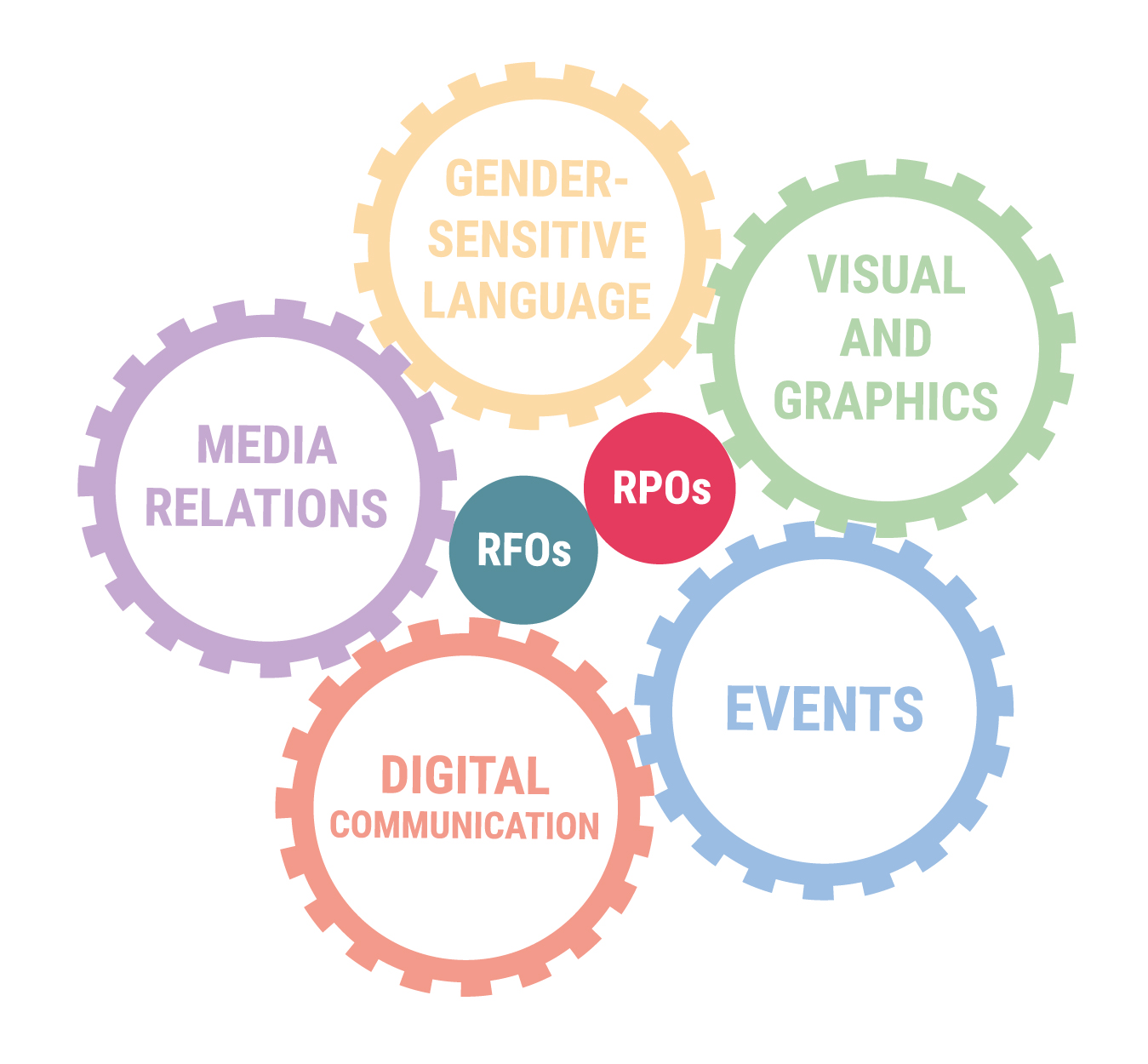
After that, the analysis developes under five main communication areas: gender-sensitive language, visual and graphics, events, digital communication and media relations. From the selection of words and images to the inclusive management of events; from the best policies to adopt in digital communication to a non-discriminatory management of the relations with the media: the SUPERA Guidelines tries to merge the advice of the most influential guidelines with our scientific knowledge and professional experience to provide the readers with a (hopefully) exhaustive set of advice.
The SUPERA Tailor-made guides on gender-sensitive communication in research and academia have been developed by the University of Cagliari team, composed by Barbara Barbieri, Paola Carboni, Ester Cois, Alessandro Lovari, Erika Sois, while the illustrations are by Giorgia Cadeddu. The document is available in our Resources section at this link.
You are welcome to translate and disseminate the guides in your institutions, under the Creative Commons Attribution-ShareAlike 4.0 International license (CC BY-SA 4.0). A graphical template is also available as an Appendix.
Let us know what you think on Twitter or Instagram or at info@superaproject.eu!
Central European University’s progress with SUPERA
By Ana Belen Amil, Central European University. Ph: Zoltan Tuba
In the midst of the Coronavirus crisis, the CEU SUPERA team is working hard to ensure that gender equality goals continue to be a priority for the institution in its transition to Vienna. What is currently in our agenda?
. The SUPERA team together with the Senate Equal Opportunity Committee is in the laborious process of amending the CEU Policy on Harassment to address the problems that were identified during our Baseline Gender Equality Assessment conducted in 2018-2019. The main modifications are: 1. to create a Network of Ombudspersons who will receive intensive training to informally deal with harassment and sexual harassment complaints, with a survivor-centred approach; 2. to build an online platform that will streamline the complaint mechanism to make it more accessible to survivors; 3. to incorporate the option of submitting anonymous disclosures; 4. to create a reliable, centralised record-keeping system that will allow for monitoring; and 5. to develop appropriate training plans and awareness-raising sessions for the entire community.
. Together with the Institutional Research Office, the SUPERA team is putting together a comprehensive Handbook of Gender Sensitive Data Collection and Monitoring. Its main goal is to ensure that the necessary data for high-quality gender analysis is collected regularly by all relevant units, so regular monitoring exercises can be performed and evidence-based policies and actions to tackle inequalities can be developed. This Handbook is being developed with an intersectional lens, and uses a non-binary approach to gender.
. The move of most academic staff to the Vienna campus, and the concomitant need for new contracts, provides an excellent opportunity for the SUPERA team to run an in-depth analysis of Equal Pay for Equal Work at the faculty level within and across academic departments. This will guarantee that any gender imbalances found in the salaries of faculty are corrected and the University can have a fair start in Austria in this regard.
. Last but not least, the COVID-19 pandemic has brought to the surface deep rooted inequalities in our society, and this is also true for gender. With the whole family staying at home, and most children under home-schooling, the household chores became much heavier. All this unpaid reproductive labour falls mostly on the shoulders of women, not only because of social norms and expectations on gender roles but also due to the existing structure of the workforce. The SUPERA team, once again in collaboration with CEU’s Senate Equal Opportunity Committee, has redacted a memo asking the Senior Leadership Team to raise the attention of supervisors on this matter, together with some suggestions on how to navigate this situation, such as:
1. Prioritize tasks and distribute them taking caring responsibilities into consideration,
2. Make sure that team members with care responsibilities can work from home;
3. Allow for flexible worktimes so employees can better harmonize work with caring responsibilities at their best convenience,
4. Avoid allocating ad hoc tasks,
5. Develop clear timetables so employees know exactly what tasks are expected from them and for when,
6. For particularly overburdened colleagues, lower the workload (e.g. single parents, household with 3 or more children etc.).
The suggestion was very well received by the leadership and circulated immediately.
The Region of Sardinia includes the SUPERA project in its development strategy
By Simona Corongiu and Tara Marini, Autonomous Region of Sardinia
The Autonomous Region of Sardinia has included the SUPERA project in its Regional Development Programme (PRS) 2020 – 2024, giving it the highest possible political recognition at this stage.
In fact, the PRS is the regional programming document valid from 2020 to 2024 which, by defining the strategies and policies that the Region intends to implement during the legislature, makes the inclusion of SUPERA a clear political commitment on the part of the President of the Region and his Regional Government.
The document “The Identity that is built in acting to create value and sustainable development for Sardinians and Sardinia“, adopted with DGR n. 9/15 of 5 March 2020, is structured in 7 strategies. Among them a central role is assumed by Strategy 2 on research and innovation.
The PRS specifies that the priority objective of regional research and innovation policies is to ensure structural and human competitive conditions for the territory and to guarantee gender equality, in order to encourage full participation in innovation and development processes, which are now globalized and characterized by a continuous evolution due to the advancement of technological and digital knowledge.
In this context, the political decision-maker has planned to recognise and disseminate the principle of gender equality within the regional administration. In this perspective, the document also specifies that the implementation of positive actions will be guaranteed to ensure the respect of the above-mentioned principle, also thanks to the results deriving from the SUPERA project, within the regional policies in favour of scientific research and innovation.
In particular, it should be noted that the Regional Programming Centre will be required to implement a set of positive actions, identified within the Gender Equality Plan of the Region of Sardinia, which will promote gender participation within the programmes aimed at promoting research and innovation, in implementation of the SUPERA project.
The expected result is to strengthen gender awareness in the research world in Sardinia in order to achieve a real structural change and therefore a greater participation in projects and programmes by women.
Patrick Zaky’s arrest: the solidarity of the SUPERA Consortium
By the SUPERA Consortium
Despite the ongoing COVID-19 restrictions, the Supera Consortium remains concerned about the conditions of Patrick George Zaky, a 27-year-old Egyptian postgratuate student enrolled in the “GEMMA” Erasmus Mundus Master’s degree in Women’s and Gender Studies at the University of Bologna, Italy, who is held in custody in Egypt.
On February 7 2020 Patrick Zaki was arrested by the Egyptian authorities, apparently in connection with his activism and research in the area of human rights and gender issues. The international network Scholars at Risk has reported that after five months of studies in Italy, Zaki returned to Egypt for a family visit. Upon his arrival at Cairo Airport Zaki was reportedly detained, interrogated by members of the Egyptian National Security Agency (NSA) and then taken to an undisclosed location, where he was allegedly subjected to torture, including beatings and electric shocks.
According to the Egyptian Initiative for Personal Rights, a human rights organization based in Cairo, Egyptian authorities are investigating a number of allegations against Zaki, but have not publicly disclosed the grounds warranting Zaki’s arrest. Zaki has been denied family visits, and has only had limited contact with legal counsel.
As of today, Zaki has been moved several times, and court hearings have been repeatedly put back due to the Coronavirus crisis.
The University of Bologna has issued a motion, calling for “Patrick Zaky’s safe and rapid return to Bologna, so that he can resume his studies. Until then, it is our duty to make sure that the Italian Government and the European Union continue to do their utmost to ensure Patrick’s return to our community.”
Responding to this motion, several international university networks have expressed their solidarity to Patrick Zaky.
Motion of the University of Bologna
The Conference of Italian Universities Rectors
Conférence des Présidents d’Université
Magna Charta Universitatum Observatory
XI European Conference on Gender Equality in Higher Education: save the date and call for abstracts
The Spanish Ministry of Science, Innovation and Universities, in collaboration with the Universidad Politécnica de Madrid and the support of the European Network on Gender Equality in Higher Education and other Spanish stakeholders, is pleased to invite you to the 11th European Conference on Gender Equality in Higher Education that will be held in Madrid on 16-18 September 2020. The aim of the #XIGEHEConf is to promote a gender-sensitive culture in the academic and R&I systems, in light of the global challenges ahead of us.
The theme of the conference is “Advancing gender mainstreaming in Academia, Research and Innovation”. The International Scientific Committee welcomes high-level contributions in the following thematic areas:
• Gender approaches in fostering scientific-technical vocations, especially in STEM fields
• Integration of the gender dimension in university teaching (undergraduate, postgraduate and pre-doctoral training)
• Policies fostering the incorporation of the gender dimension into the content of research, knowledge transfer and innovation
• Policies fostering structural change for gender equality in the research, technology and innovation system
• Gender Equality Plans and strategies in research, technology and innovation institutions
With two cross-cutting dimensions for all the conference areas:
• Gender and Intersectionality
• Application to Polytechnic Universities, including special focus on STEM fields and Women in STEM, as well as on STEM-SSH interdisciplinarity
Proposals are expected to present research-based analysis, good practices, evaluation and impact of strategies and measures on the above mentioned areas.
NEWS: the deadline of the Call for abstracts has been extended until March 3rd, 2020. Please consult the Abstracts Guidelines and visit the conference website for additional infos.
Contact infos:
XI European Conference on Gender Equality in Higher Education
CONFERENCE 16-17-18 September 2020 at ETSI Industriales -UPM-
Technical School of Industrial Engineering of Madrid, Spain
secretaria@genderequalityconference2020.com
Twitter account: @XigeheConf #XIGEHEConf
Conference website
Join us in Madrid to celebrate the 11th European Conference on GEHE!
SUPERA Project solidarity statement for Ayse Gül Altinay
📷 @gidahatti
SUPERA Project stands in solidarity with Ayse Gül Altinay, Professor of Anthropology and Director of Sabancı University Gender and Women’s Studies Center of Excellence (SU Gender) and editorial board member of the European Journal of Women’s Studies.
The past May, Professor Ayse Gül Altinay, partner in our sister project Gearing Roles, was sentenced to 2 years and 1 month in prison for “willingly and knowingly supporting a terrorist organisation as a non-member“.
A growing number of scholars in Turkey face criminal charges and have been prosecuted in retaliation for having signed a petition in January 2016 (the so-called “Peace Petition”, organized by the group known as “Academics for Peace”): such actions run against freedom of speech and academic freedom.
More information can be found here:
See you in Madrid for the SUPERA launch event
The Conference on “Structural Gender Change at Universities and Research Funding Organisations” will be held on the 16th November 2018 (9.30 h – 14.30 h) in Madrid. The venue is the Ministry of Science, Innovation and Universities, in Paseo de la Castellana, 162.


